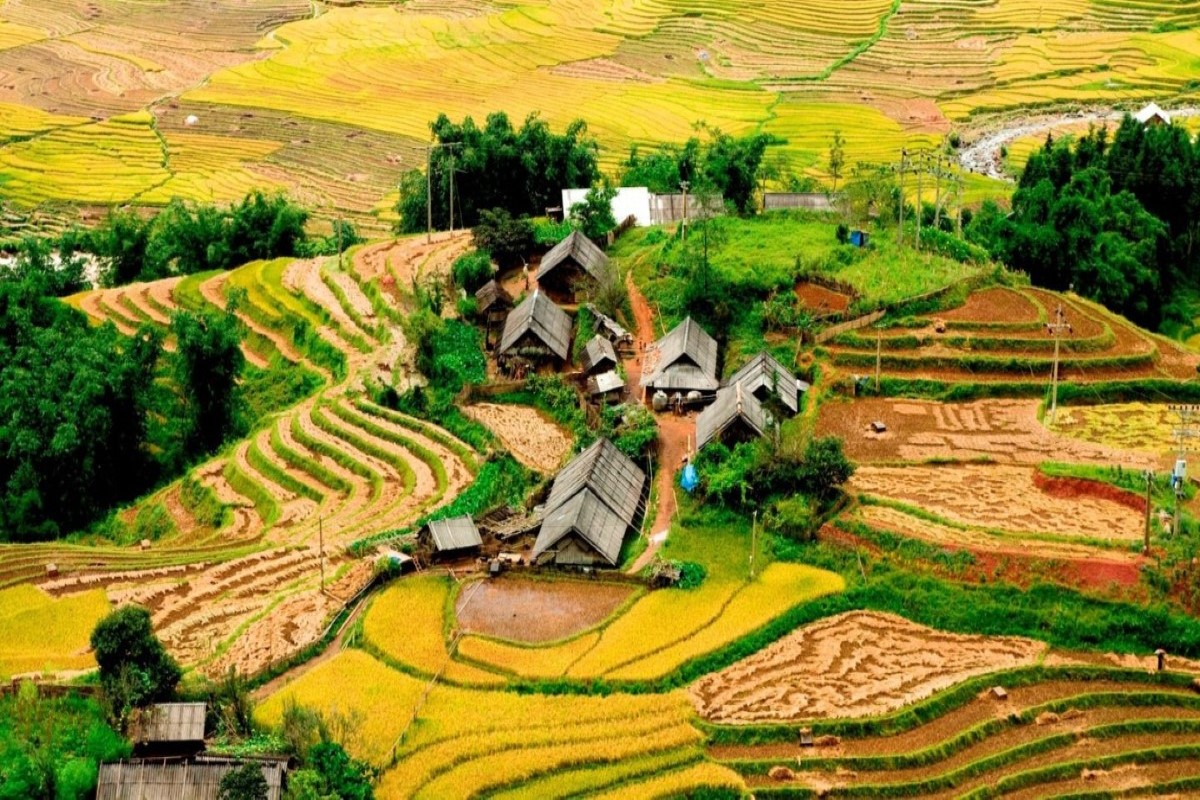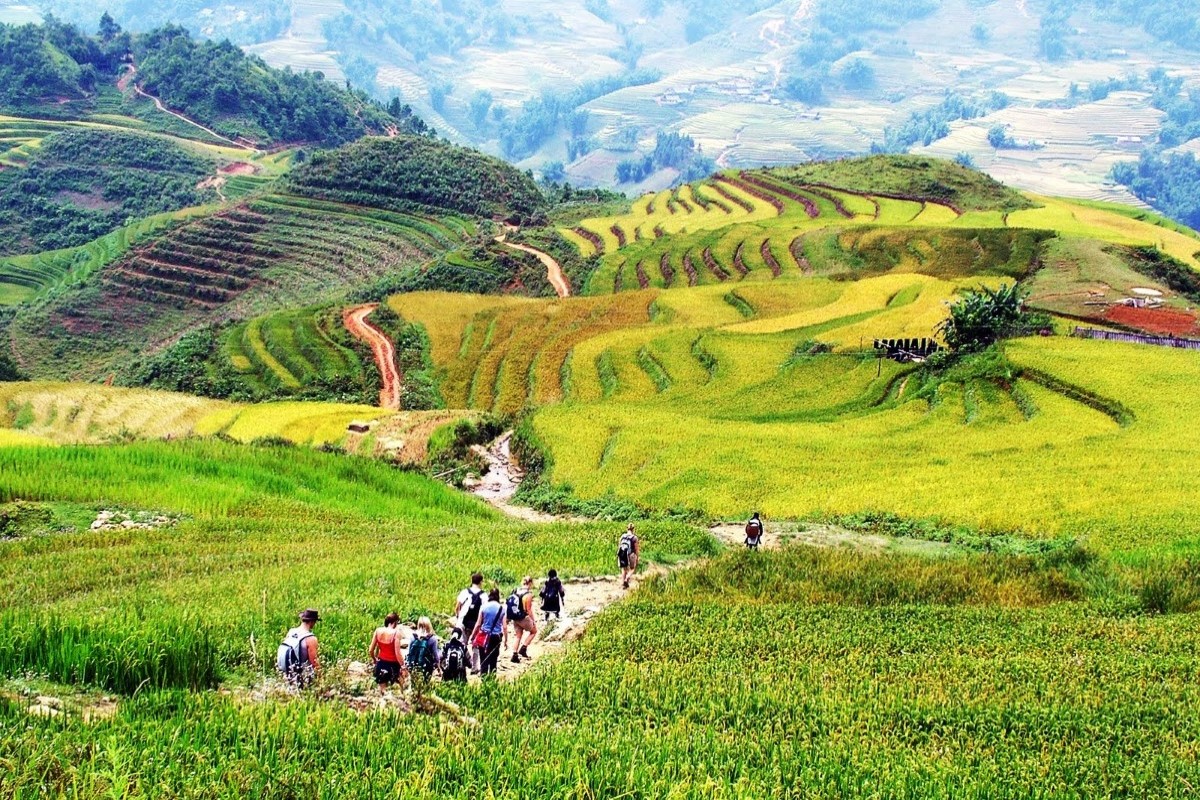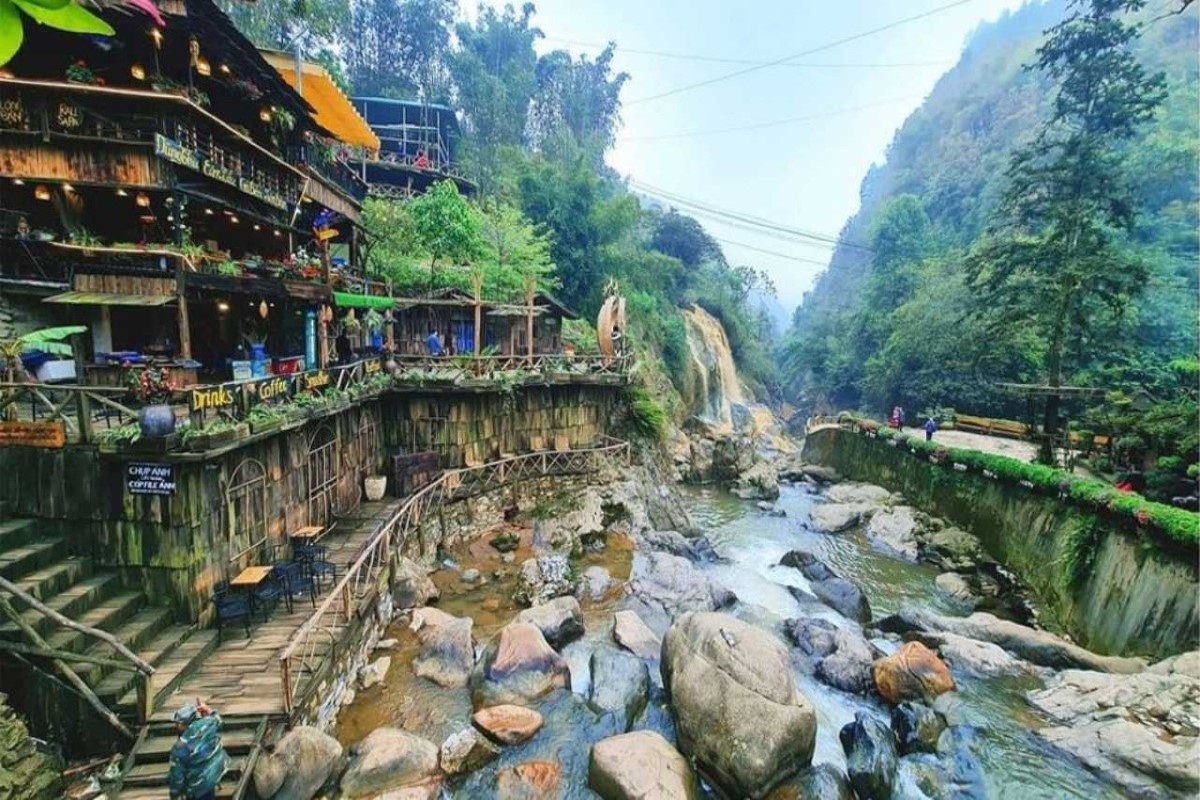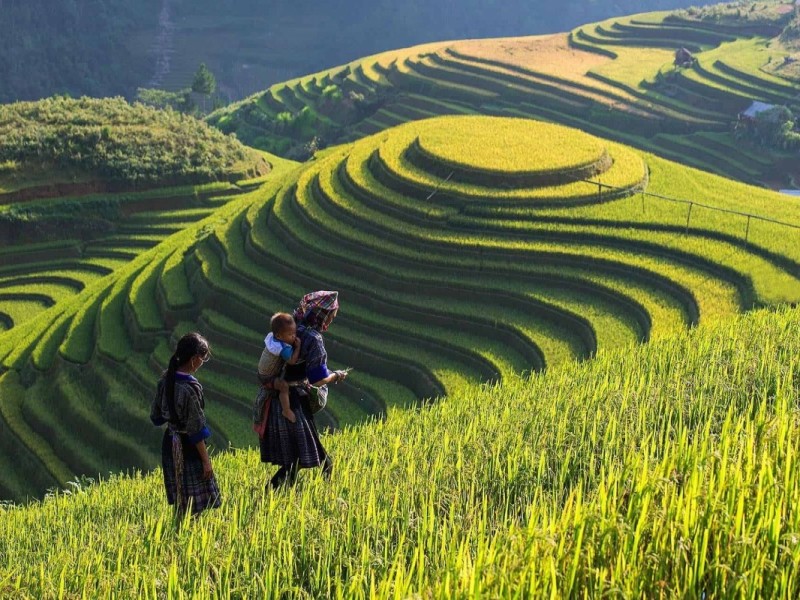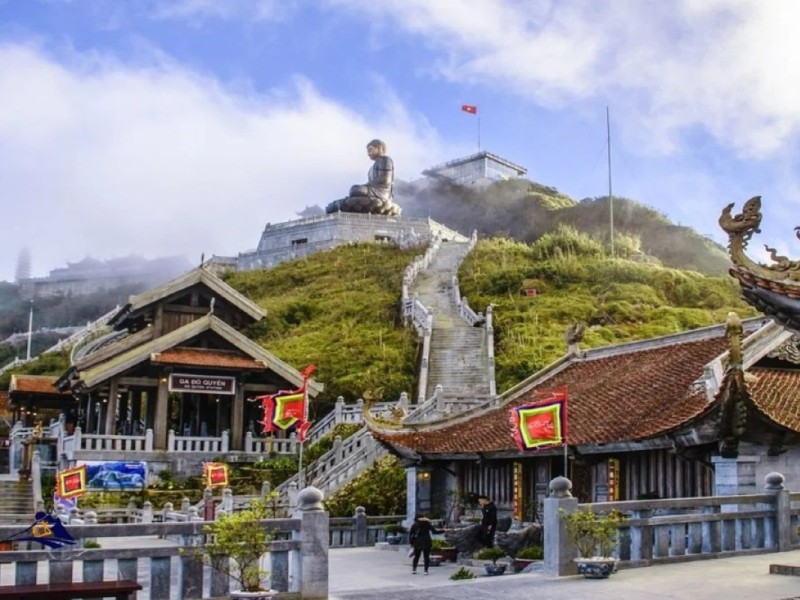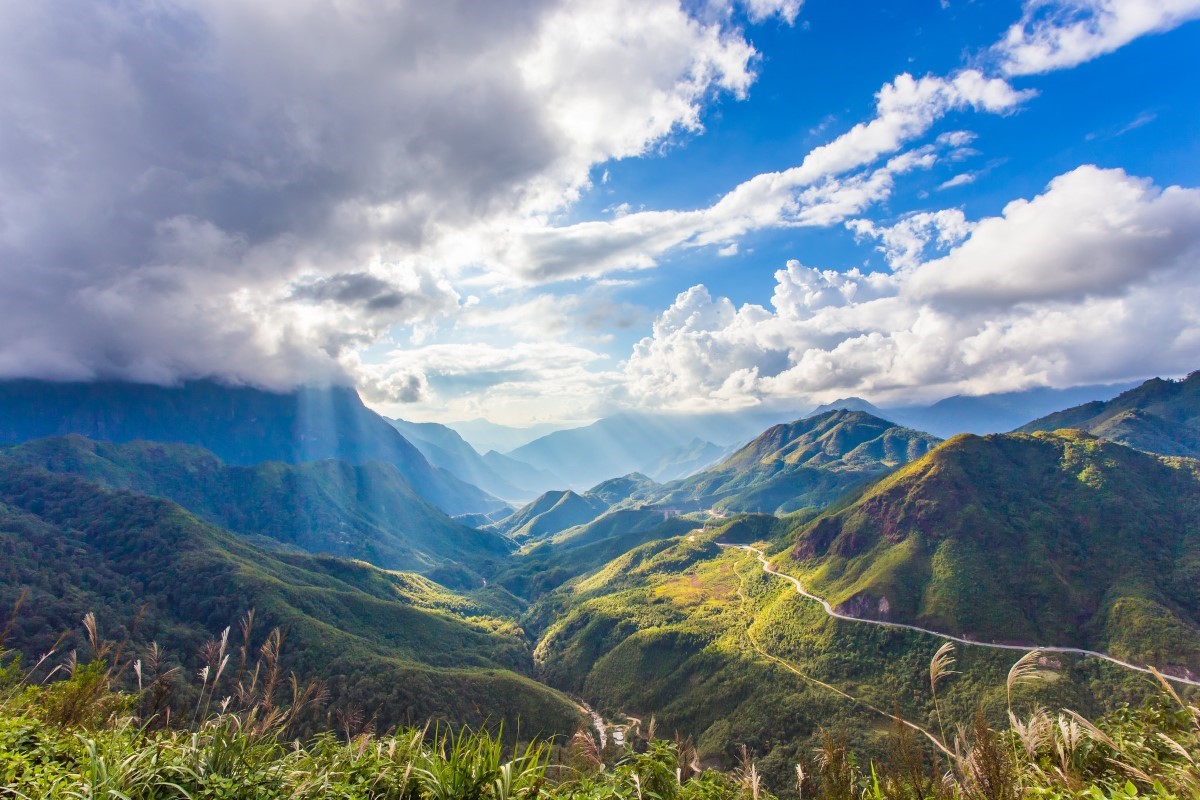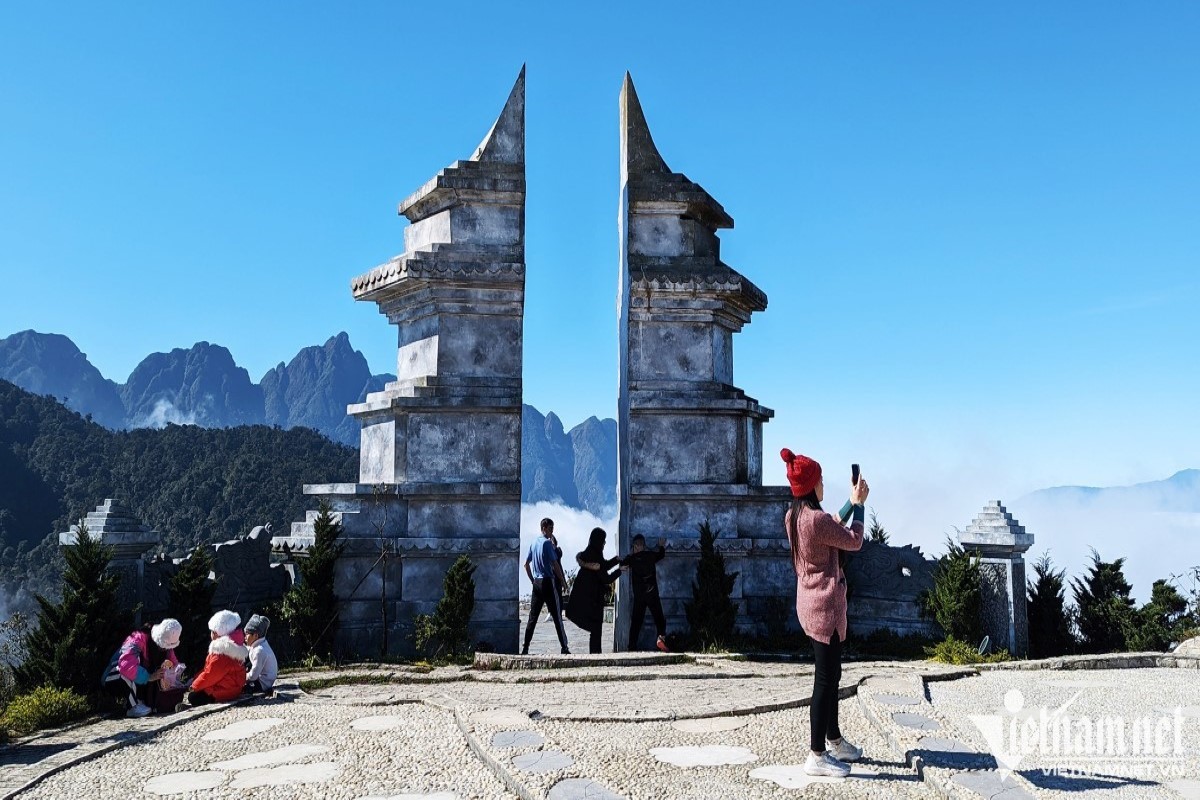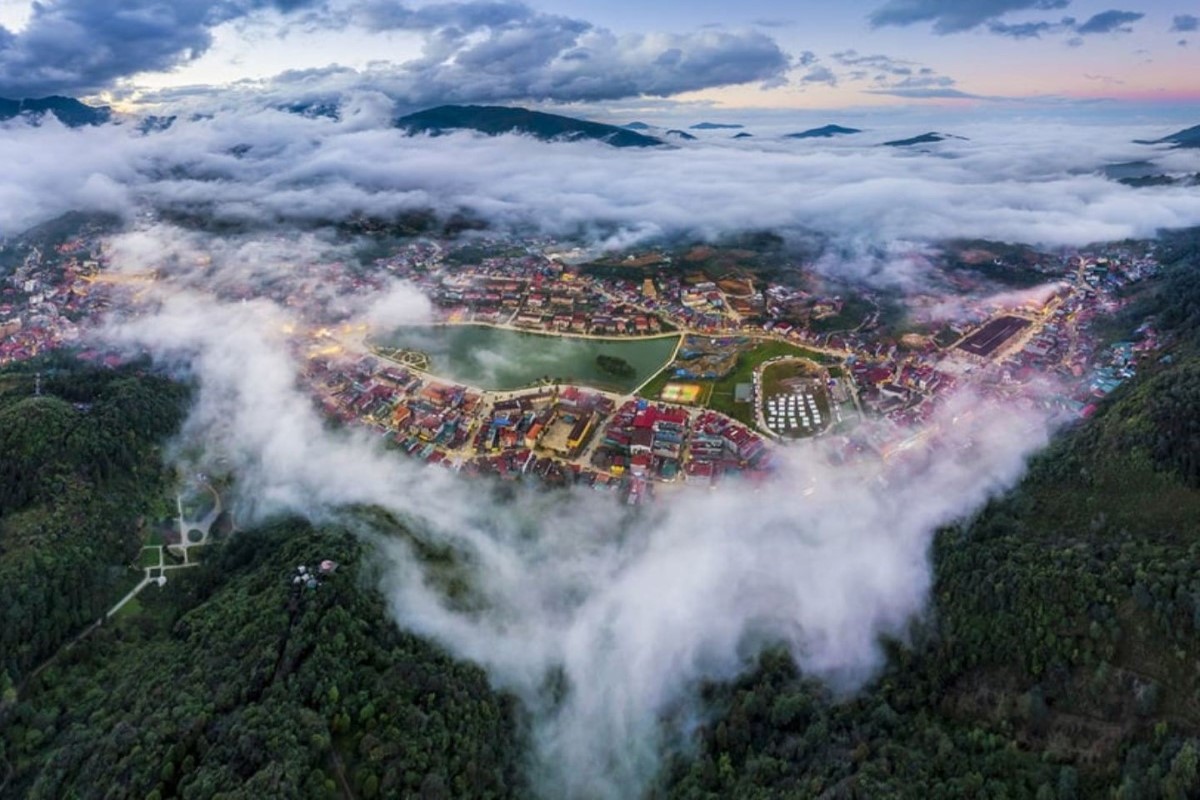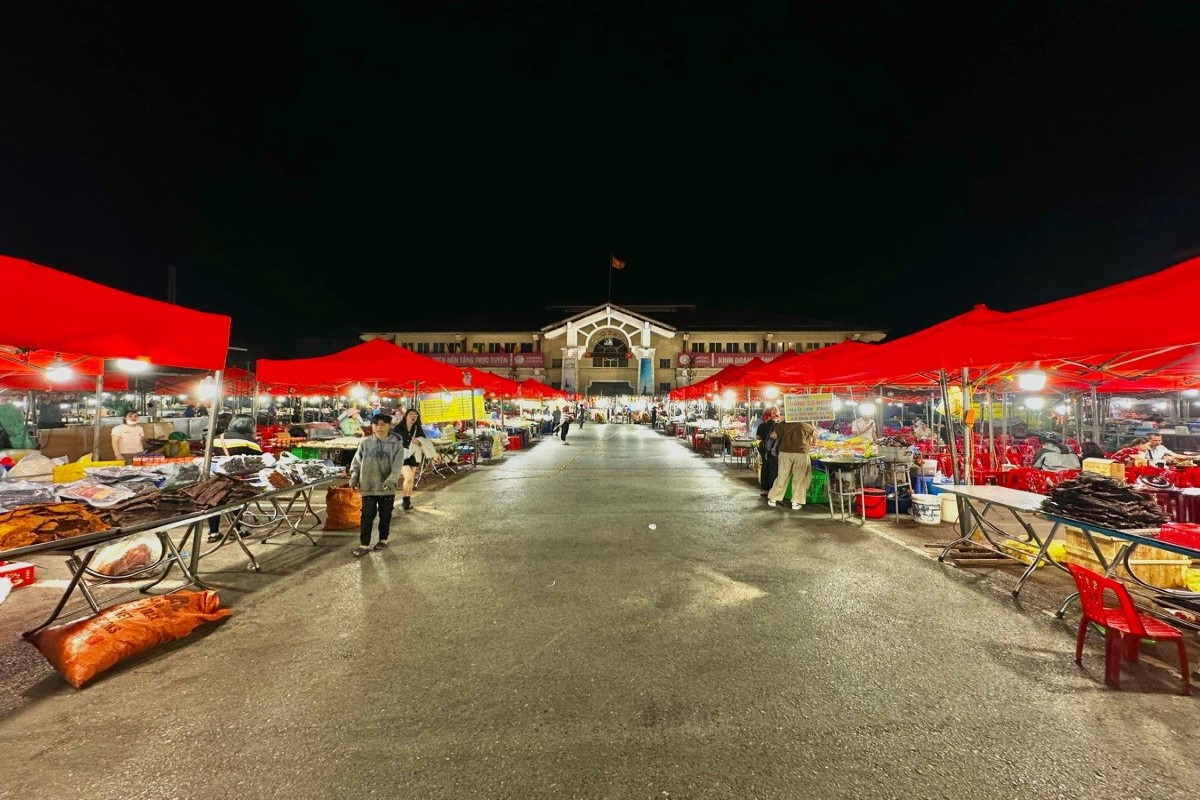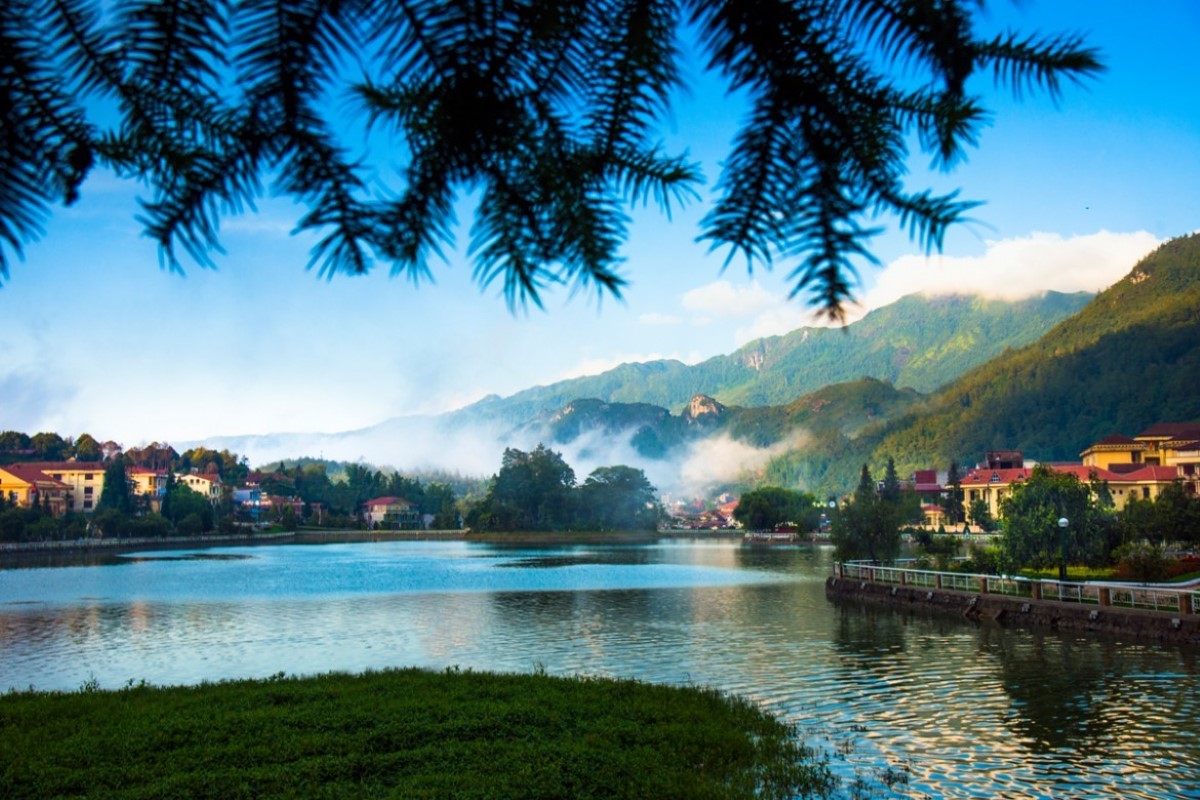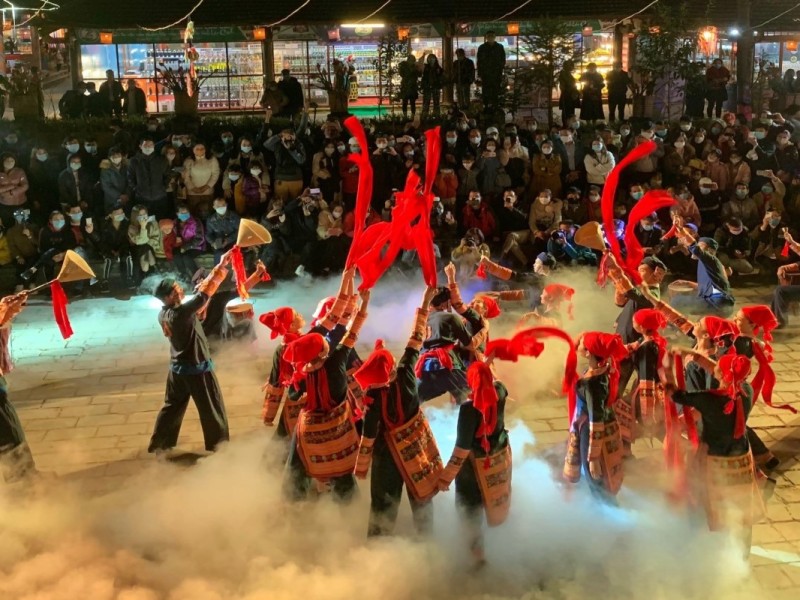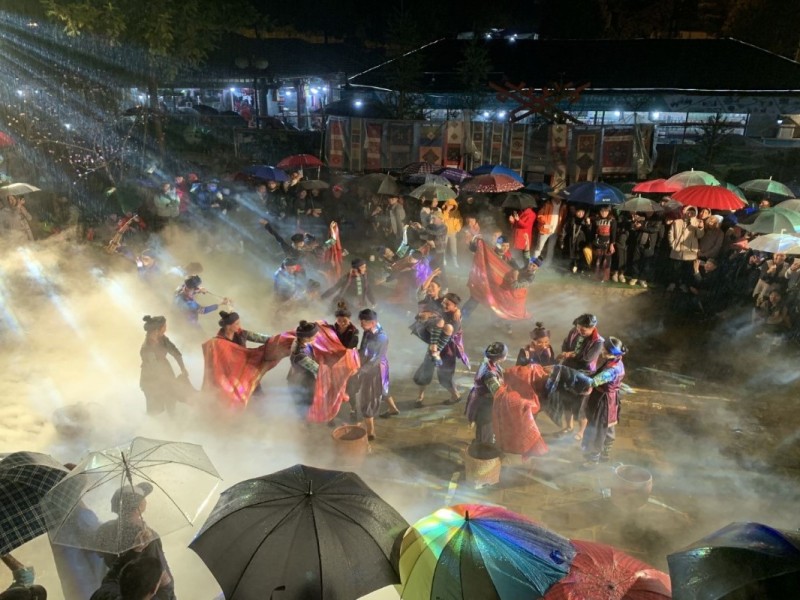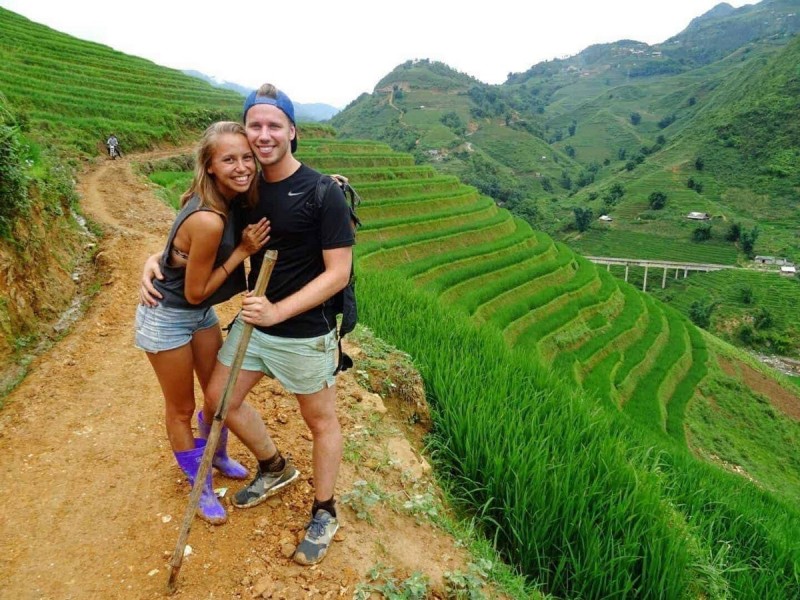Muong Hoa Valley, Sapa: Complete Travel Guide, Activities & Tips
Muong Hoa Valley in Sapa is a scenic destination known for its breathtaking rice terraces, ethnic minority villages, and vibrant trekking routes. This valley offers travelers immersive cultural experiences, panoramic landscapes, and the chance to connect with local traditions, making it a must-visit highlight of northern Vietnam.
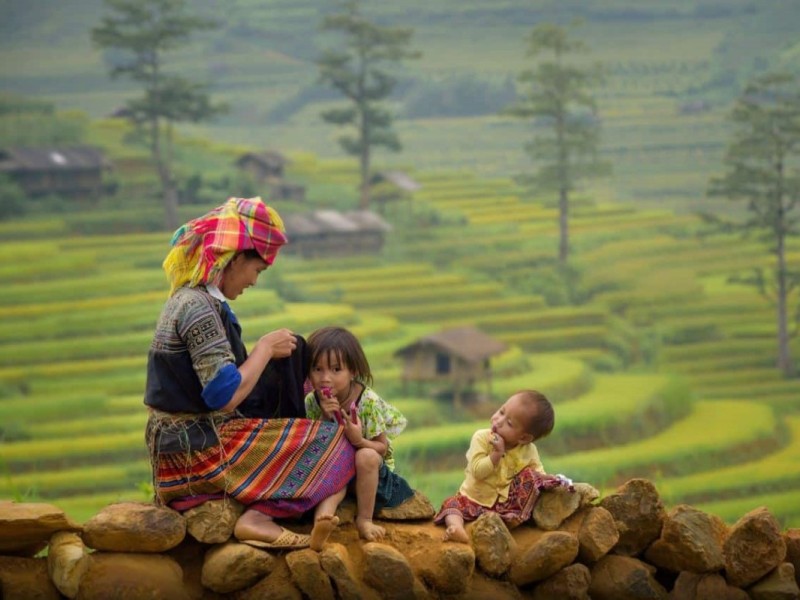
Discovering Muong Hoa Valley – Your Gateway to Sapa’s Scenic Heart
Nestled in the embrace of towering mountains, Muong Hoa Valley unfolds like a vibrant tapestry woven with cascading rice terraces, winding streams, and ancient villages. This scenic valley is more than just a backdrop; it’s the living heart of Sapa, where nature’s grandeur meets centuries-old traditions. As you gaze upon the patchwork of green and gold fields stretching into the horizon, you feel an irresistible pull to explore deeper, to discover the stories etched in stone and soil. Whether you’re a seasoned trekker or a curious traveler, Muong Hoa Valley Sapa offers a gateway into the authentic rhythms of northern Vietnam’s highlands.
Here, the landscape tells a tale of harmony between earth and people. The valley map of Sapa reveals a journey rich in natural wonders, from the gentle flow of the Hoa stream to the rugged charm of terraced slopes carved meticulously by indigenous hands. It’s a place where eco-friendly travel meets cultural immersion, inviting you to step lightly and observe deeply.
Every path you follow, every village you visit, is a chapter in a living book that honors rural heritage and the enduring spirit of Sapa’s native communities. As you prepare to embark on this journey, imagine the quiet mornings framed by mist and the golden light of dawn, the scent of wet earth after rain, and the vibrant colors of traditional costumes moving through fields. This is Muong Hoa Valley — a sanctuary for your senses and a canvas for unforgettable exploration.
Begin your adventure here, where every step connects you to the land and its people. Let the valley inspire your journey through Sapa’s scenic heart.
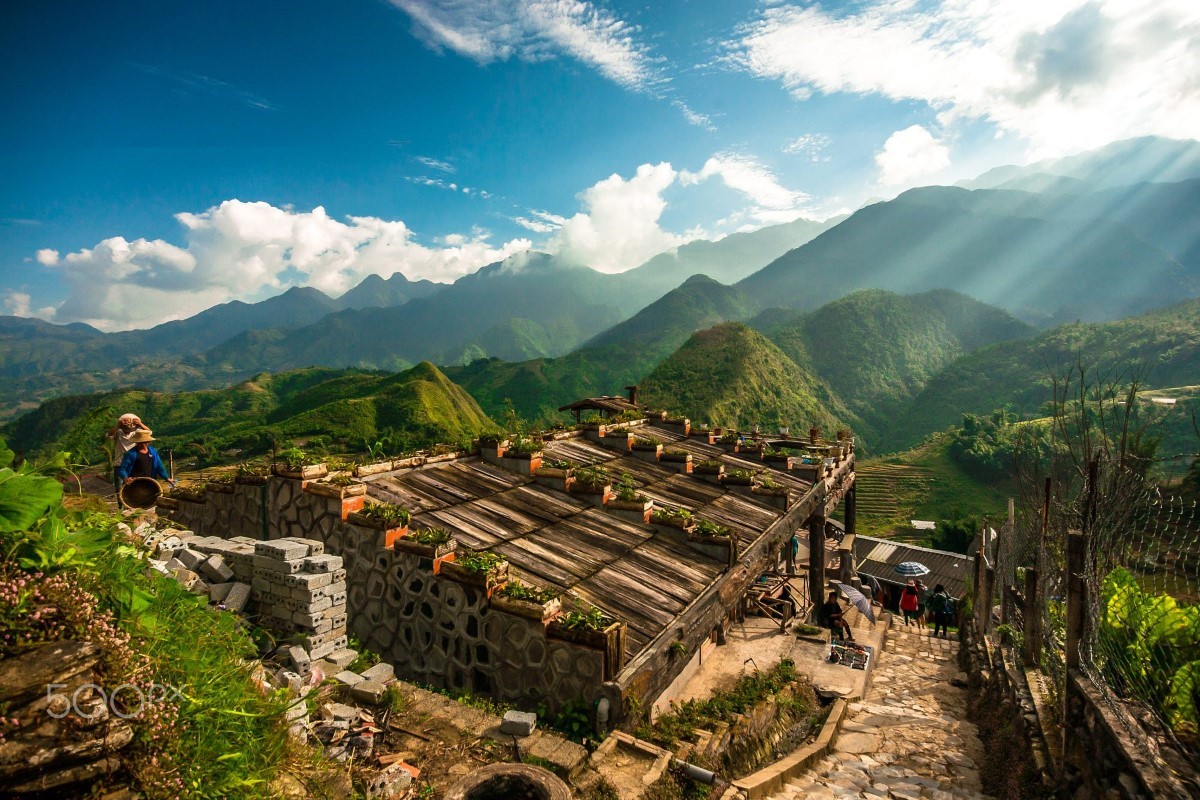
What Makes Muong Hoa Valley Unique?
At the core of Muong Hoa Valley’s allure lies its unparalleled blend of breathtaking landscapes and rich cultural fabric. Unlike other valleys, this is a place where the earth’s contours shape not only the scenery but the lives of its inhabitants. The valley’s signature cascading rice terraces ripple down the mountainsides, a testament to centuries of careful farming and respect for nature.
The Sapa scenic valley is alive with colors that change with the seasons — emerald greens in spring, fiery golds in autumn — each offering a unique view for the discerning traveler and photographer alike. Beyond its natural beauty, the valley is home to diverse indigenous communities, including the Hmong, Red Dao, and Giay, whose traditional farming methods and daily practices have shaped the valley’s charm.
These communities maintain a deep connection to their land, preserving rituals, costumes, and crafts that enrich your journey beyond the surface. Trekking here is not just a physical experience but a cultural immersion, where each village feels like a window into a heritage carefully nurtured through generations. This combination of stunning terrain and vibrant cultural life makes Muong Hoa Valley a rare gem that captivates both heart and eye.
Embrace the opportunity to explore these unique landscapes and communities, and uncover why Muong Hoa Valley stands apart as one of Sapa’s most treasured destinations.
The story behind Sapa’s most beautiful valley
Muong Hoa Valley has long been recognized as a national scenic area, celebrated for its extraordinary natural features and cultural significance. The valley’s geography is defined by the flowing Hoa stream, which nourishes the fertile soil and supports the intricate rice terraces cascading gracefully along the slopes.
Historically, this valley has sustained local communities for centuries, providing a rich environment for agriculture and settlement. Its status as a protected scenic area underscores its importance to Sapa’s natural heritage, making it a focal point for eco-tourism and cultural preservation.
Visitors often marvel at the seamless integration of human life with the landscape, where farming patterns follow the land’s natural rhythms. This harmony is the result of generations of sustainable practices that respect the environment while supporting livelihoods.
Understanding this background enriches your visit, framing Muong Hoa Valley not just as a place of beauty, but as a living ecosystem shaped by history and human care.
How the valley’s landscapes and people shape its charm
The magic of Muong Hoa Valley is inseparable from the people who call it home. The Hmong, Red Dao, and Giay ethnic groups have cultivated this land for generations, shaping the terraces with age-old farming techniques that blend functionality with artistry.
Their daily lives unfold alongside the natural landscape, with community farming, seasonal cycles, and traditional crafts weaving a vibrant cultural tapestry. You’ll see women in vivid traditional dress tending to crops, hear the rhythmic sounds of village life, and witness ceremonies rooted in the valley’s heritage.
This intimate relationship between land and people infuses the valley with a warmth and authenticity that go beyond scenic vistas. It invites you to slow down, observe, and connect with a way of life framed by the natural rhythm of the land.
Discovering this connection transforms your journey into a meaningful exploration, where each step through Muong Hoa Valley reveals the heartbeats of its communities and the stories held in its soil.
Let the valley’s landscapes and people inspire your next adventure through Sapa.
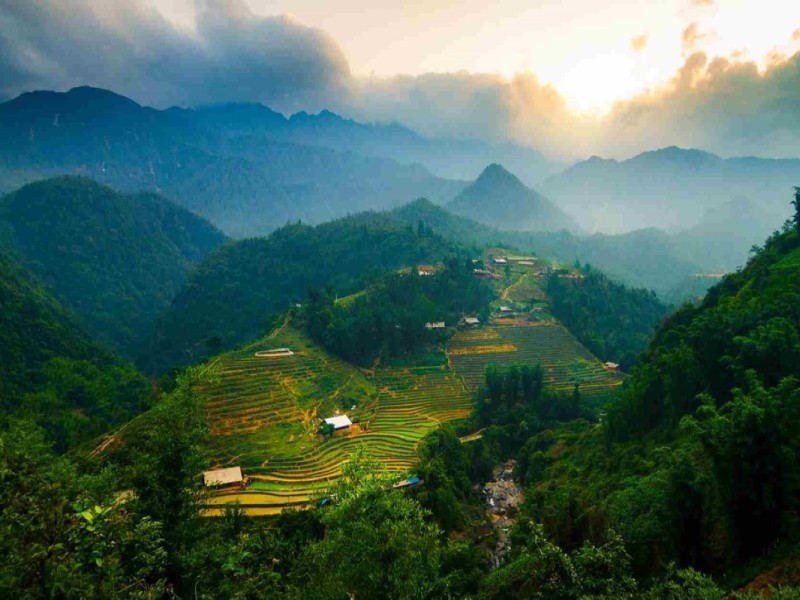
Why Muong Hoa Valley is a Must-Visit for Every Sapa Traveler
When you visit Sapa, Muong Hoa Valley stands out as an unmissable destination that captures the essence of this mountainous region. Here are the top reasons why every traveler should prioritize this valley on their journey.
- Breathtaking Scenic Beauty: The valley’s cascading rice terraces create a mesmerizing landscape that changes with the seasons, offering stunning views that are perfect for photography and quiet reflection.
- Authentic Cultural Immersion: You can experience the vibrant lives of indigenous communities like the Hmong, Red Dao, and Giay, who preserve traditions, dress, and crafts that have been passed down for generations.
- Diverse Trekking Opportunities: Whether you prefer gentle walks through villages or challenging multi-day treks, Muong Hoa Valley offers routes suitable for all levels, immersing you in nature and culture simultaneously.
- Tranquil Atmosphere: Away from the bustle of Sapa town, the valley’s peaceful environment provides a refreshing escape to reconnect with nature and enjoy moments of calm.
- Rich History and Mystery: Explore ancient petroglyphs and rock carvings that reveal stories from the past, adding a layer of intrigue and discovery to your visit.
These highlights combine to make Muong Hoa Valley a compelling destination for travelers seeking scenic beauty, cultural depth, and memorable experiences. Don’t miss this jewel of Sapa on your next trip.
Plan your visit to Muong Hoa Valley now and discover why it’s considered one of the top reasons to explore Sapa.
Chloe's First Impression: The Breathtaking Scale of Muong Hoa
You know how some places just hit you? Not in a "wow, that's pretty" way, but in a gut-punch-of-awe, take-your-breath-away kind of way? That's exactly how it felt the moment I first glimpsed Muong Hoa Valley. It wasn't just another scenic overlook from my Sapa itinerary; it was like the entire world suddenly opened up beneath my feet, stretching out into an impossible, vibrant tapestry that instantly humbled me and dissolved every ounce of travel weariness.
The motorbike ride down from Sapa town had been a whirlwind of cool, misty air and winding roads, exhilarating but a bit disorienting. I was expecting a nice view, maybe a couple of charming rice paddies. But then, as the road curved sharply, the trees parted, and there it was. I instinctively pulled over, the motorbike sputtering to a halt, the silence that followed almost deafening after the engine noise. The air, crisp and fresh, carried a subtle, earthy scent, like damp soil mixed with something green and alive. It was early, and fingers of mist still curled lazily in the deepest folds of the valley, making the distant hills seem like islands floating in a soft, white sea.
I found myself just standing there, captivated. My plan to immediately snap photos evaporated. Instead, I started walking slowly along a narrow, almost unnoticed path that snaked along the ridge. With each hesitant step, more of this colossal landscape revealed itself. The rice terraces weren't just agricultural fields; they were an artistic marvel, sculpted by generations of hands, each verdant step descending further and further until the eye could barely distinguish them in the distance. They followed the mountains' contours with an organic fluidity that seemed impossible, like ripples in an enormous, emerald pond. I strained my eyes and could just make out tiny, colorful figures moving far, far below – the local people tending to their ancestral lands. Their sheer scale against the backdrop of this vastness gave me goosebumps. As the sun began its ascent, a gentle warmth spread, and the last wisps of mist began to retreat, pulling back like a curtain to unveil the tiny, clustered villages nestled so perfectly within the valley: Lao Chai, Ta Van, and Giang Ta Chai, looking like miniature, painted dioramas. There was no grand viewing platform, no loud tour groups, just the raw, unfiltered beauty of the landscape and the quiet, almost sacred hum of life unfolding within it.
The cool, humid mountain air was intoxicatingly clean, tingling slightly in my nostrils. I could distinctly hear the soft, rhythmic trickling of water – the lifeblood of the terraces – a constant, soothing backdrop to the visual feast. My eyes, initially overwhelmed by the panorama, began to meticulously trace the delicate lines of the terracing, observing how the nascent sunlight painted new hues and shadows across their surfaces, transforming the valley's mood with every passing minute. Emotionally, it was a profound mix. The initial burst of exhilaration at witnessing such grandeur quickly settled into a deep sense of humility. It was humbling to stand before something so vast and ancient, a place shaped by both nature's power and human perseverance. A wave of tranquility washed over me, melting away any residual stress from city life or the journey here. But perhaps the most enduring feeling was an intense curiosity – a powerful, almost magnetic pull to descend into that sprawling landscape, to walk those very paths, and to truly understand the rhythm of life for the resilient people who called this extraordinary place home. This wasn't merely a beautiful view; it was a living, breathing testament to resilience, tradition, and an unbreakable bond between people and their land.
What truly differentiates Muong Hoa Valley isn't just its picturesque beauty, but its sheer, all-encompassing scale and the way it continuously unfolds around you. Frankly, photos, even the most professional ones, simply cannot capture the immersive feeling of being within this landscape. Many visitors to Sapa rush to the town's main viewpoints for a quick look, but the real magic of Muong Hoa reveals itself when you commit to spending time, letting its vastness gradually sink into your soul. My most significant takeaway is that the valley is not about a singular, postcard-perfect moment, but rather a journey of continuous, layered discovery. And definitely pay attention to the light; what appears at sunrise is a completely different masterpiece by midday or sunset.
My Tips for Your Own Valley Discovery:
- Go early: Seriously, set that alarm. Arriving around sunrise allows you to witness the mist clearing, experience optimal light for photography, and enjoy the valley's tranquility before more visitors arrive.
- Don't just view, immerse: While the panoramic viewpoints are stunning, the true essence of Muong Hoa is experienced by actually walking through the terraces and visiting the villages. Plan for at least a half-day trek.
- Layer up: The temperature can fluctuate dramatically from morning to afternoon, and especially between Sapa town and the valley. A light, waterproof jacket and layers you can easily add or remove are essential.
- Pack a wide-angle lens: If photography is a passion, a wide-angle lens is indispensable here to capture the expansive, sweeping vistas that define the valley.
- Practice respectful tourism: Remember this is home to diverse ethnic communities. Stay on marked paths, avoid trampling crops, and always ask for permission before taking photos of people.
Standing there, breathing in the fresh, clean air and letting the sheer immensity of Muong Hoa Valley wash over me, I felt a deep, almost primal connection to something ancient and enduring. It was a powerful, beautiful reminder that some of the most profound travel moments aren't meticulously planned, but simply unfold when you allow yourself to be truly present and open to the unexpected. The valley wasn't just beautiful; it was a breathtaking testament to nature's artistry and humanity's resilient, intertwined spirit.
Recommendation: If your heart yearns for a place that not only offers postcard-perfect vistas but also a deep, authentic cultural pulse, then experiencing Muong Hoa Valley is an absolute imperative. Don't just consider it another stop on your itinerary; let it envelop you. It's an unforgettable sensory and emotional journey that will resonate with you long after you've left its incredible embrace.
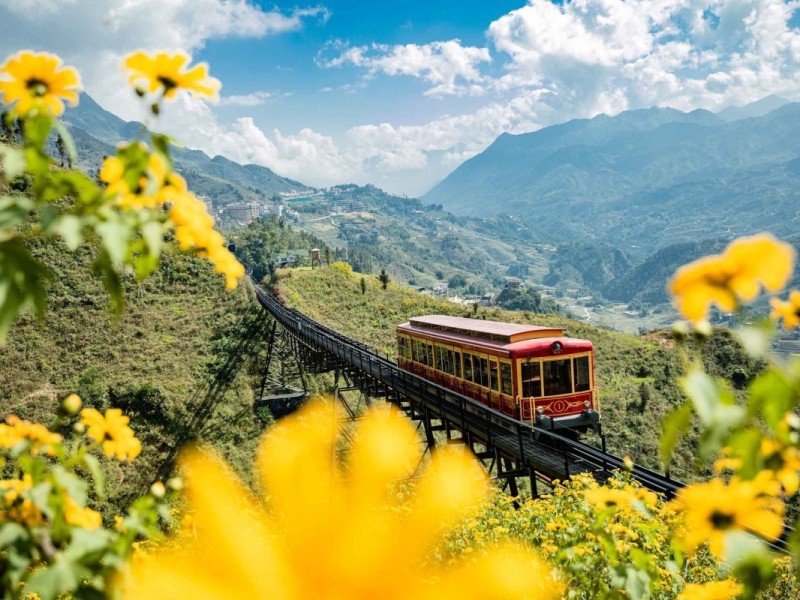
A Brief Look at the Valley’s Rich History
Muong Hoa Valley holds a deep and fascinating history that enriches every visit with cultural and archaeological significance. This valley is home to some of the oldest known petroglyphs in Southeast Asia, ancient rock carvings that remain shrouded in mystery and intrigue. These carvings provide valuable insights into the lives and beliefs of early inhabitants and are a treasured part of Sapa’s heritage.
Beyond the petroglyphs, Muong Hoa Valley has long been a cradle of ethnic diversity and cultural preservation. The indigenous communities here, including the Hmong, Red Dao, and Giay, have lived in harmony with the land for centuries, passing down traditions, language, and customs through generations. Their continued presence ensures that the valley is not only a natural wonder but also a vibrant cultural landscape.
Understanding this history adds a profound layer to your exploration, connecting you with the stories and spirit that shape Muong Hoa Valley today. Delve into its past, and you’ll find that every path and village carries echoes of time.
Plan your visit with respect and curiosity to fully appreciate the valley’s rich history and living heritage.
Ancient rock carvings and mysterious petroglyphs
The ancient rock carvings in Muong Hoa Valley are among its most remarkable archaeological treasures. These petroglyphs, etched onto stone surfaces across the valley, depict a variety of symbols and figures whose meanings remain subjects of research and local legend. Some believe they served as maps, spiritual symbols, or records of early agricultural life.
These carvings form one of Sapa’s key heritage sites and attract archaeologists and curious travelers alike. When visiting these rock fields, it’s essential to observe respectful viewing practices to help preserve their delicate surfaces.
Exploring these petroglyphs offers a rare glimpse into the valley’s ancient past and deepens your appreciation of its enduring cultural significance.
The traditions of local ethnic groups
The vibrant cultural fabric of Muong Hoa Valley is woven from the lives of its main ethnic groups: the Hmong, Red Dao, and Giay peoples. Each group maintains distinctive traditions visible in their colorful traditional attire, languages, and village customs.
- Hmong: Known for their elaborate embroidery and silver jewelry, the Hmong communities practice terrace farming and celebrate unique festivals.
- Red Dao: Recognizable by their red turbans and indigo-dyed clothing, they are renowned for herbal medicine and spiritual rituals.
- Giay: The most numerous in the valley, the Giay maintain distinct weaving techniques and oral histories.
Efforts to preserve these cultural practices are ongoing, ensuring that travelers experience authentic encounters while supporting the valley’s living heritage.
Immerse yourself with respect in the valley’s ethnic diversity to enrich your journey through Muong Hoa Valley.
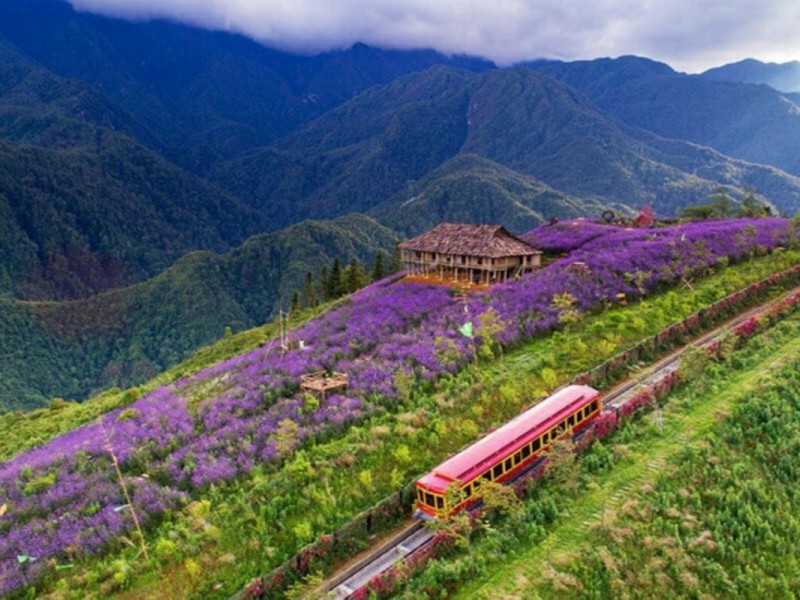
Where Exactly Is Muong Hoa Valley?
Finding your way to Muong Hoa Valley is easier than you might think. Located just a few kilometers from the heart of Sapa, the valley sits along the main road leading southwest from the town center. Its proximity to key Sapa landmarks means you can plan your route with confidence, knowing you’re heading straight to one of the region’s most cherished natural and cultural treasures.
Whether you’re traveling on foot, by bike, or via motorbike or car, clear signage and well-traveled paths guide you toward the valley’s entrance. Having a good valley map Sapa will help you understand the layout and identify your preferred trail or village stop. Knowing exactly how to get to Muong Hoa Valley eliminates confusion, making your journey smooth and stress-free.
Prepare for a scenic route where mountain views and local life begin to unfold even before you reach the valley floor. Your adventure starts the moment you leave Sapa town.
Plan your trip carefully to enjoy every step along the way to Muong Hoa Valley.
Easy directions from Sapa town
Getting from Sapa town to Muong Hoa Valley is straightforward and accessible by several modes of transport. Follow these steps to reach the valley’s gateway:
- Head southwest on the main road out of Sapa town, following signs toward Lao Chai and Ta Van villages.
- Walking: The valley is approximately 9 kilometers from the town center, a pleasant trek taking about 2–3 hours along paved and dirt paths.
- Motorbike or Bicycle: Renting a motorbike or bicycle offers flexibility and a faster way to enjoy the valley’s scenic surroundings at your own pace.
- Taxi or Private Car: For convenience, taxis are available and take about 20 minutes to reach the valley entrance.
- Public Transport: Local shared minivans or xe om (motorbike taxis) operate regularly; negotiate fares before departure.
These routes pass through iconic Sapa landmarks and picturesque landscapes, easing your way into the heart of the valley.
Use these directions as your reliable guide to begin your Muong Hoa Valley exploration without hassle.
Key entry points and main villages
The charm of Muong Hoa Valley unfolds through its several vibrant villages, each offering unique experiences and serving as natural entry or exit points for trekkers:
- Lao Chai: Known for its beautiful rice terraces and welcoming Hmong community, this village is a popular starting point for easy hikes and cultural immersion.
- Ta Van: A larger village featuring a mix of ethnic groups, including the Giay people, with homestays and local markets that offer authentic experiences.
- Giang Ta Chai: Nestled deeper in the valley, this village showcases stunning waterfall views and peaceful surroundings, ideal for nature lovers seeking solitude.
- Ban Ho: Positioned at the valley’s far end, Ban Ho offers more challenging trekking routes and an intimate glimpse into rural life.
Choosing your entry village shapes your journey and allows you to tailor your adventure according to your interests and fitness level.
Explore these gateway villages to fully appreciate the diversity and beauty of Muong Hoa Valley.

Planning Your Trip – How to Reach Muong Hoa Valley
Planning your journey to Muong Hoa Valley involves several steps, from reaching Sapa to navigating the final stretch into the valley itself. This section breaks down your options clearly and practically, helping you choose the best route and mode of transport for your preferences and budget.
Understanding the logistics ahead of time ensures a smoother experience, reducing stress and maximizing your time to enjoy the stunning scenery and cultural richness awaiting you.
Prepare to explore detailed travel tips and route options that guide you confidently from departure to arrival at this breathtaking destination.
Make your travel plans with confidence to ensure the best possible start to your Muong Hoa Valley adventure.
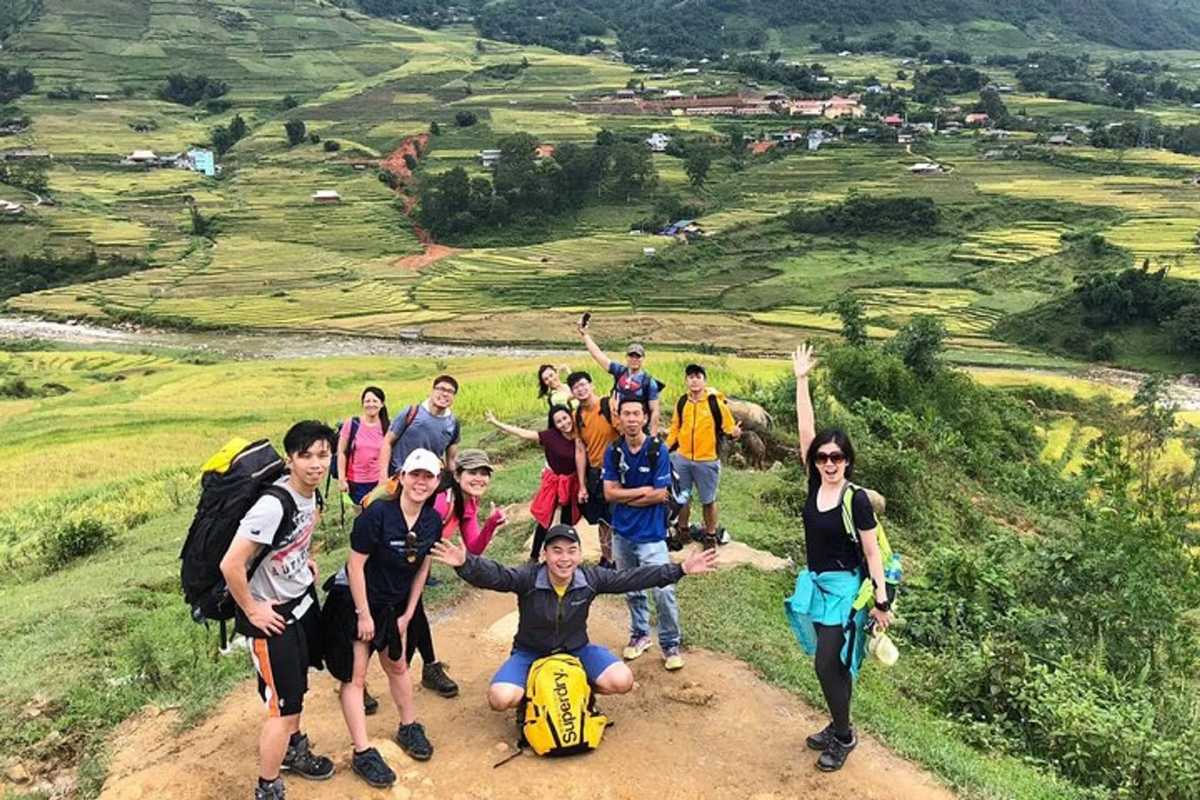
Getting to Sapa from Hanoi and Beyond
Reaching Sapa from major cities like Hanoi or further afield involves a few reliable transportation choices. Each mode offers different benefits depending on your priorities such as comfort, cost, or scenic experience.
- Train to Lao Cai: The overnight sleeper train from Hanoi to Lao Cai is popular for its comfort and views. It typically takes 8 to 9 hours, allowing you to rest and arrive refreshed in the early morning. Booking ahead is recommended, especially during peak season.
- Direct Bus Services: Buses offer a budget-friendly alternative with multiple daily departures. These range from standard coaches to luxury sleeper buses, traveling directly to Sapa town in roughly 6 hours.
- Private Car or Transfer: For convenience and flexibility, private cars offer door-to-door service. While pricier, they reduce travel stress and allow stops for photos or breaks along the scenic route.
- Scenic Routes: Some travelers opt for combinations like train to Lao Cai, then a car or motorbike ride to Sapa, blending comfort with adventure.
Understanding these options helps you tailor your arrival to suit your travel style and schedule.
Choose the route that fits your plans best to start your journey to Muong Hoa Valley with ease.
Train, bus, private car, and scenic routes
Each transport method to Sapa comes with distinct advantages and considerations:
- Sleeper Train from Hanoi to Lao Cai: Offers overnight comfort, sleeping berths, and scenic mountain views on arrival. Best for travelers valuing rest and experience.
- Direct Bus to Sapa: Affordable, frequent, and convenient with options for standard or luxury seating. Ideal for budget-conscious travelers.
- Private Car Transfer: Provides personalized service, flexible stops, and faster travel times. Suitable for groups or those seeking comfort.
- Scenic Travel Combinations: Mixing modes, like train then car or motorbike, offers adventure and diverse landscapes, appealing to experiential travelers.
Booking tips include reserving early during holidays, comparing providers, and verifying schedules. Each choice affects your arrival time and comfort, so weigh these carefully.
Planning your transport thoughtfully ensures a smooth and enjoyable journey to Muong Hoa Valley.
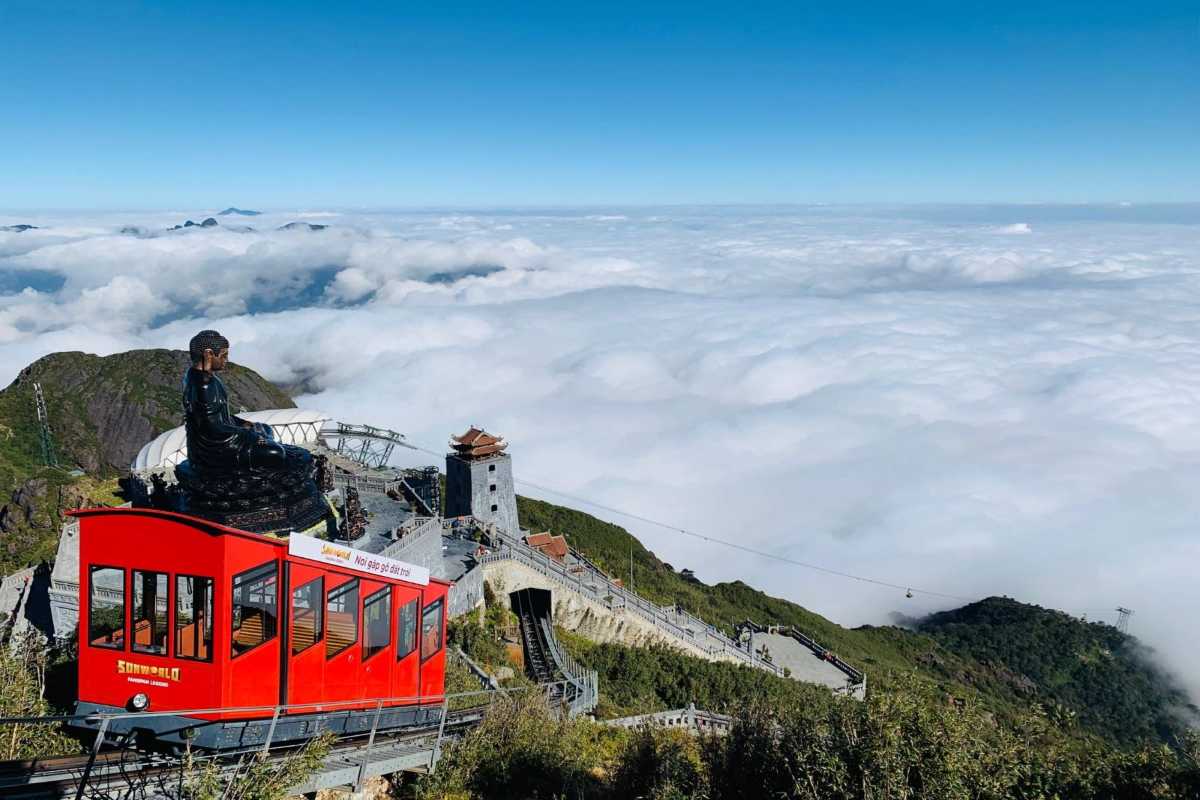
How to Access Muong Hoa Valley from Sapa Town
Travelers looking to reach Muong Hoa Valley from Sapa town have several practical options to consider, each suited to different fitness levels, budgets, and preferences. Whether you prefer a peaceful walk, an adventurous bike ride, or a convenient motorbike or car ride, understanding your choices empowers you to plan the best route.
Choosing how to get from Sapa to Muong Hoa Valley depends on your desired balance of independence, comfort, and immersion. Here’s a breakdown of the main transport modes to help you decide.
Explore your options thoughtfully to enjoy a smooth and rewarding journey into the valley’s heart.
Walking, biking, motorbike, or car – which is best?
Assess your needs and preferences with this comparison of transport modes to Muong Hoa Valley:
- Walking: Ideal for those who want a full sensory immersion and don’t mind a moderate physical challenge. Walking lets you appreciate the landscape up close but requires good fitness and time.
- Biking: Renting a bike offers adventure and speed while still engaging with the environment. It suits travelers comfortable on two wheels and wanting to explore at their own pace, though roads can be steep and uneven.
- Motorbike Rental: For greater flexibility and speed, motorbikes allow you to cover more ground and visit multiple villages. Be cautious of road conditions and traffic, and always wear safety gear. Suitable for experienced riders.
- Car or Taxi: The easiest and most comfortable option, especially for families or those with limited mobility. Taxis provide door-to-door service but offer less connection with the surroundings.
Each mode has pros and cons related to fitness, budget, and adventure level. Consider your comfort and safety when making a choice.
Whatever transport you select, your trip from Sapa town to Muong Hoa Valley will open the door to an unforgettable exploration of natural beauty and local culture.
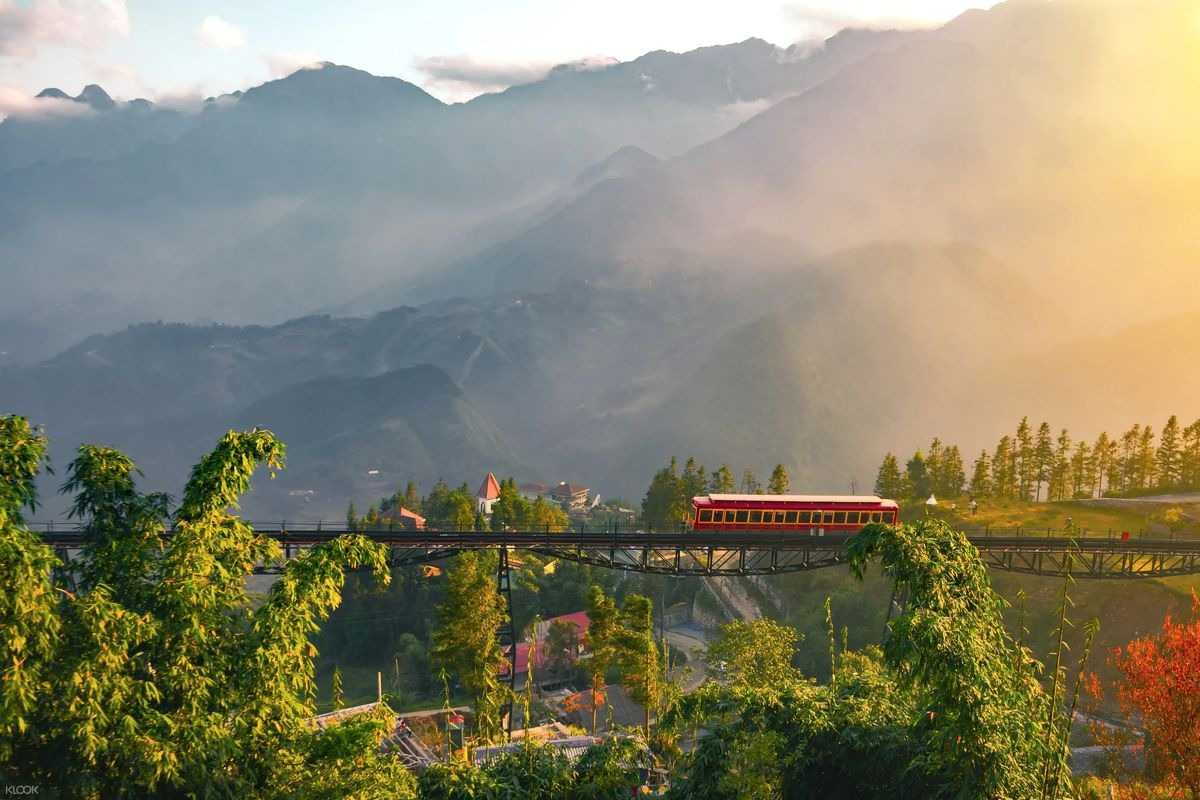
Navigating Sapa Town to Muong Hoa Valley: Practical Transport Options
Getting from Sapa town to Muong Hoa Valley is straightforward if you know your local transport options and how to navigate them. Understanding fares, negotiation tips, and available services ensures you avoid surprises and choose the best ride for your needs.
Here’s a practical guide to the main transport choices and what you can expect when traveling to Muong Hoa Valley.
- Xe Om (Motorbike Taxi): The most flexible and popular local option. Fares typically range between 50,000 to 100,000 VND depending on distance and negotiation skills. Always agree on the price before starting and consider asking for recommendations from your accommodation.
- Taxi: Comfortable and suitable for groups or travelers with luggage. Taxi fares from Sapa town to the valley entrance average around 150,000 to 200,000 VND. Metered taxis are rare; confirm rates upfront to avoid overcharging.
- Shared Minivan: A budget-friendly choice for those who don’t mind sharing space with other travelers. Minivans leave on demand and cost roughly 50,000 to 70,000 VND per person. These can be booked via local travel offices or your hotel.
- Private Car Rental: Ideal for travelers seeking privacy and convenience. Prices vary widely but expect to pay upwards of 500,000 VND for a half-day hire, including driver.
Booking local transport in advance isn’t always necessary but can provide peace of mind during busy seasons. Always carry small bills for exact fare payment and keep your phone charged to coordinate rides.
Choosing the right transport option will make your trip to Muong Hoa Valley smooth and enjoyable.
Plan your journey with these practical tips to travel confidently between Sapa town and Muong Hoa Valley.
Ben's Motorbike Adventure: Finding the Best Route to Lao Chai
Most guides will tell you how to get to Muong Hoa Valley by taxi or organized tour. But for me, the real spirit of Sapa, the kind of freedom that truly makes a trip unforgettable, whispered "motorbike." My recent ride to Lao Chai, nestled deep within the Muong Hoa Valley, wasn't just a commute; it was a thrilling, sometimes muddy, and utterly liberating dance with the breathtaking Vietnamese landscape, proving that the best routes are often the ones you discover yourself, even with a few wrong turns.
My morning began with the satisfying click of a helmet strap and the low rumble of a rented semi-automatic. After a quick breakfast pho in Sapa town, I pulled out my offline map, a digital lifeline against the notoriously spotty mountain reception. My goal: Lao Chai Village, a gateway to the heart of Muong Hoa's most iconic rice terraces. The initial stretch from Sapa town was surprisingly smooth, a paved road winding gently downhill, offering teasing glimpses of the vast valley opening up to my left. The air, initially cool and misty from the morning, gradually warmed, carrying the faint, sweet scent of blooming wildflowers.
Then came the real adventure. The perfectly paved road slowly gave way to rougher patches, then dirt, then a stretch that was more mud than gravel, particularly after a recent shower. There were moments of genuine challenge: navigating around a water buffalo ambling nonchalantly across the path, carefully crossing a small, gushing stream that had overflowed onto the road, and once, almost taking a wrong turn down a narrow, rocky path that looked more suitable for goats than motorbikes. Each time I paused, the silence of the valley would envelop me, broken only by the distant sounds of village life or the chirping of unseen birds. I'd check my offline map again, sometimes squinting at a hand-painted sign, and more often, simply pointing down the road and asking a local Hmong woman walking with her basket, "Lao Chai?" and receiving a warm, toothy smile and a nod in the right direction. Their simple gestures were more reliable than any GPS signal. The sheer joy of feeling the cool wind on my face, the freedom of stopping anywhere the view captivated me – a particular cascading terraced field, a small waterfall tumbling into the Hoa Stream – was unparalleled. Reaching the outskirts of Lao Chai, the path narrowed further, weaving between traditional wooden houses and past children playing, culminating in the triumphant arrival at the heart of the village, surrounded by the very terraces I'd seen from afar.
The cool mountain breeze was a constant companion, especially on the more open stretches, carrying the aroma of damp earth and woodsmoke from distant homes. The vibrant green of the rice paddies, intensified by the morning light, seemed to hum with life, and the occasional moo of a buffalo or the distant chatter of villagers carried on the wind. My emotions were a rollercoaster: initial excitement at the prospect of the ride, moments of brief hesitation when facing a particularly muddy patch, a surge of triumph each time I successfully navigated a tricky section, and finally, a deep sense of satisfaction and peace upon arriving. There's a unique personal resonance to earning your views, to feeling the road beneath your wheels and knowing you powered yourself through that incredible landscape. It's more than just seeing; it's experiencing it.
My "insider" tip? Don't rely solely on online maps or guides that promise a perfectly paved road all the way. The best routes to places like Lao Chai, especially those offering the most authentic views, often involve navigating unpaved sections and embracing the unexpected. My personal lesson was to download an offline map before leaving Sapa town – reception drops quickly. More crucially, don't be afraid to ask locals for directions. They are incredibly friendly and their gestures are often the clearest navigation you'll get. And finally, bring less gear on the bike; light is right for tricky terrain.
My Tips for Your Own Sapa Motorbike Route:
- Offline Map is Your Co-Pilot: Before you leave Sapa town, ensure you have an offline map (like Google Maps or Maps.me) downloaded for the entire region. Cell service can be extremely patchy in the valley.
- Check Your Bike Thoroughly: Don't just rent and go. Check the brakes, tires, lights, and horn. Make sure you're comfortable with the semi-automatic gears if you're not used to them.
- Go Slow, Especially on Unpaved Sections: Many roads into and between villages like Lao Chai become dirt tracks, especially after rain. Reduce speed significantly, anticipate potholes or mud, and be ready to put your feet down for balance.
- Ask for Directions (with a Smile!): Locals are your best resource. If you're unsure, point to your destination on a map or say the village name. A friendly smile goes a long way.
- Pack Light and Securely: A small backpack is ideal. Ensure everything is secured; you don't want items falling off on bumpy roads. Consider a waterproof cover for your bag.
- Wear Appropriate Gear: A good helmet (often provided with rental), sturdy shoes, and long sleeves/pants will protect you from sun, dust, and potential scrapes.
As I finally parked the motorbike in Lao Chai and gazed at the vast, green sea of terraces stretching endlessly, I realized that the journey itself had been as rewarding as the destination. The challenges, the unexpected encounters, the sheer freedom of the open road – they all fused into an adventure that truly allowed me to connect with the raw, untamed beauty of Muong Hoa Valley. It was an experience that felt genuinely earned.
Recommendation: If you crave independence, a true sense of adventure, and the most authentic way to explore the stunning depths of Muong Hoa Valley, then renting a motorbike from Sapa is an absolute must. It's not always the easiest path, but it's undoubtedly the most rewarding, giving you a personal perspective you simply can't get any other way. Embrace the ride!
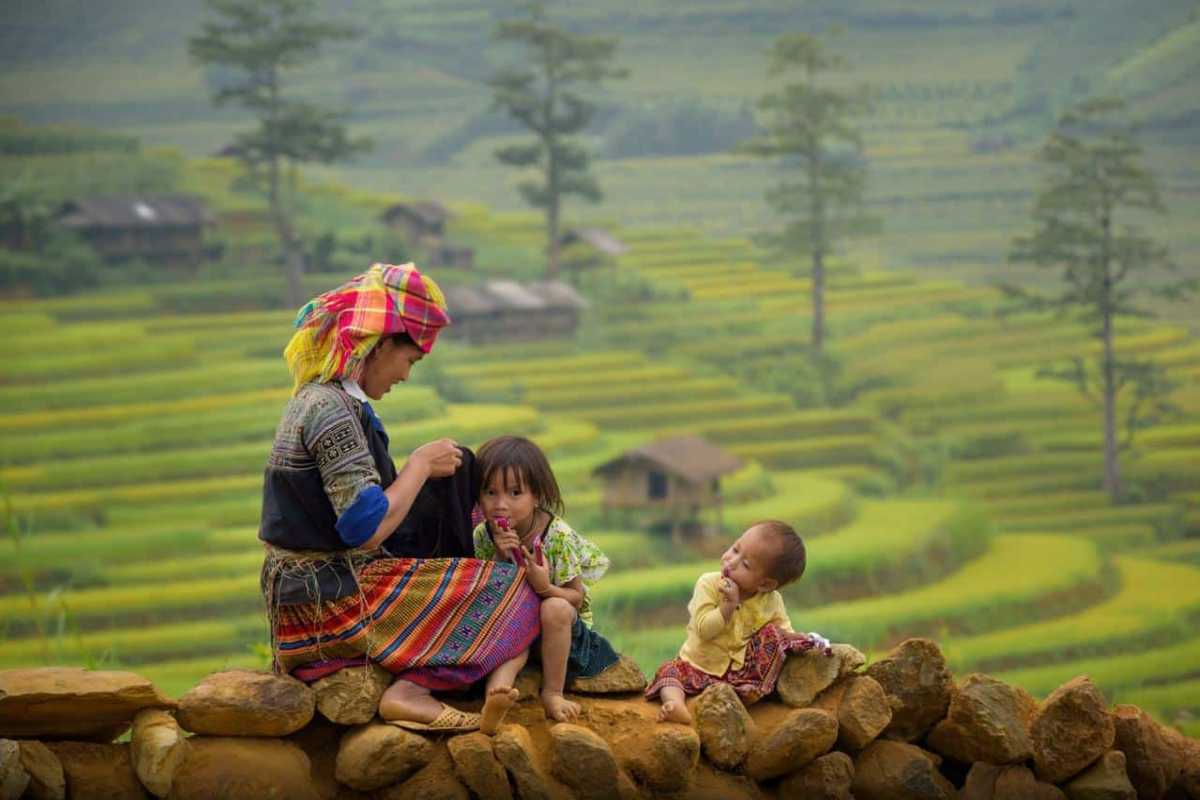
Entry Fees, Permits, and What to Expect at Checkpoints
Visiting Muong Hoa Valley requires understanding the entry fees, permits, and checkpoint procedures so you can prepare and avoid delays. Knowing exactly where and how much to pay helps make your journey smooth and supports local preservation efforts.
Here’s what you need to know to navigate Sapa checkpoints confidently and respectfully.
Official entrance fees and where to pay
Before entering Muong Hoa Valley, you will encounter checkpoints where entrance fees are collected. These fees contribute directly to the preservation of the valley’s natural beauty and support local communities.
- Entrance fees typically range from 70,000 to 100,000 VND per person.
- Payment is made in cash at official booths located at major village gates such as Lao Chai, Ta Van, and Ban Ho.
- Visitors should carry exact change since electronic payments are rarely accepted.
- Identification documents like passports may be requested at checkpoints.
- No special permits beyond the entrance fee are normally required.
Being aware of these fees and payment locations ensures you can budget properly and avoid confusion upon arrival.
Understanding and paying these fees helps sustain the valley’s cultural and environmental heritage for future generations to enjoy.
Tips for smooth access during peak season
Accessing Muong Hoa Valley during peak travel periods requires some extra preparation to avoid delays and frustration.
- Arrive early in the morning to beat the crowds at entry points.
- Always carry exact cash to streamline payment.
- Keep your identification easily accessible for checkpoint verification.
- Be patient during busy seasons when queues are likely.
- Remember that fees support local community development and conservation.
Following these tips will help you pass through checkpoints quickly and start your adventure stress-free.
Proper preparation for entry formalities makes your visit to Muong Hoa Valley more enjoyable and respectful of the local environment and people.
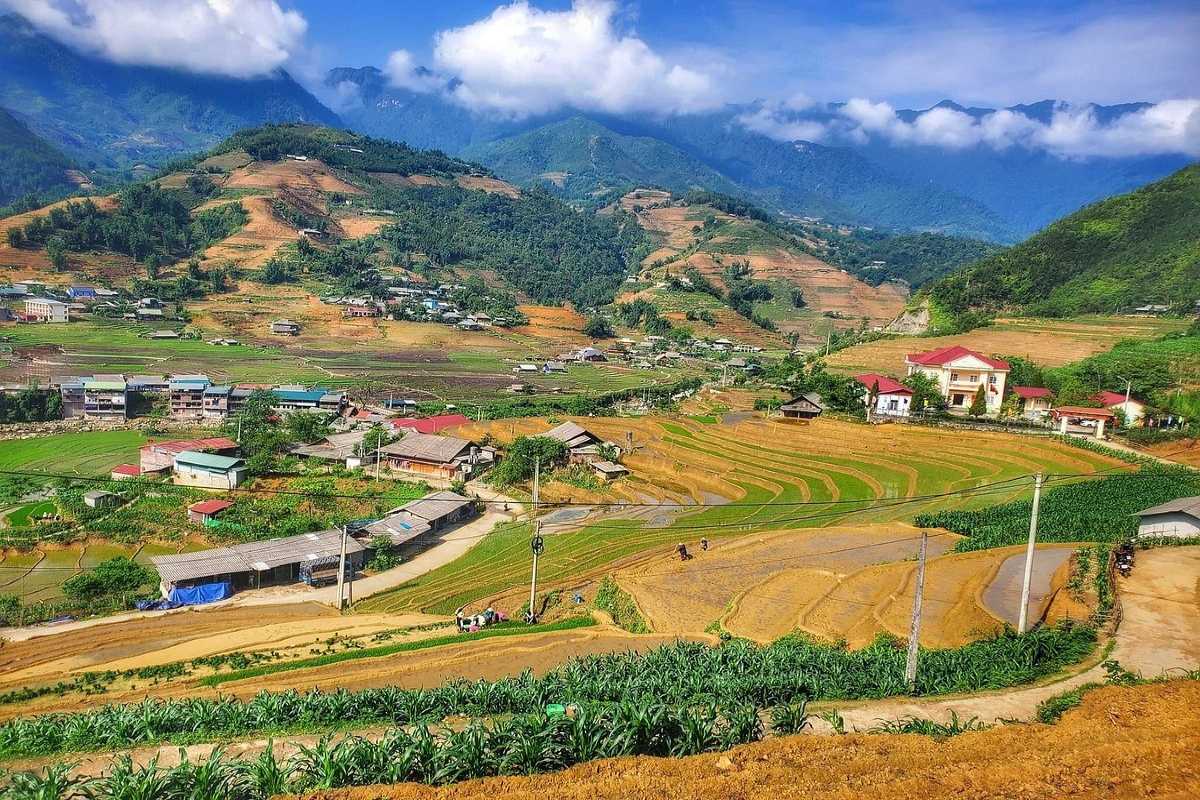
When to Visit – Seasons, Weather, and the Best Times to Explore
Choosing the right time to visit Muong Hoa Valley can transform your experience, whether you’re chasing vibrant landscapes, perfect weather, or peaceful solitude. Understanding the valley’s seasonal shifts helps you plan your trip to capture its fullest beauty and avoid peak crowds. This section offers clear insights on what to expect throughout the year, empowering you to time your adventure perfectly.
Discover how each season paints the valley in unique colors and textures, guiding you to the best months for trekking, photography, and cultural events.
Plan your visit with confidence by matching your travel goals to the valley’s natural rhythm.

The Valley’s Changing Seasons: What Each One Offers
The allure of Muong Hoa Valley changes with the seasons, offering diverse experiences no matter when you arrive. Here’s a vivid breakdown of what each part of the year brings:
- Spring (March to May): The valley awakens with wildflowers blooming and fresh green paddies spreading across the terraces. This season offers mild weather and vibrant colors, perfect for nature lovers.
- Summer (June to August): Lush and vibrant, the rice terraces are full and thriving under the rainy season. Occasional showers bring freshness but also muddy trails, making it an adventurous time for trekkers.
- Autumn (September to November): The golden rice fields reach their peak, creating iconic landscapes bathed in warm sunlight. Clear skies and cooler air make this the most popular season for photographers and travelers seeking tranquility.
- Winter (December to February): Cooler temperatures and misty mornings create a mystical atmosphere. While some terraces may lie fallow, the quiet and fog add unique charm for those seeking a peaceful retreat.
Each season highlights different aspects of the valley’s beauty, allowing you to tailor your visit to your preferred scenery and activities.
Choose the season that aligns best with your travel desires to make the most of your Muong Hoa Valley journey.
Planting, harvest, and the most colorful months
The valley’s agricultural calendar shapes its visual appeal throughout the year. Here’s what to expect month by month:
- March to April: Planting season begins, with young green rice shoots starting to carpet the terraces.
- May to June: Rice paddies turn a deep vibrant green, ideal for lush landscape photography.
- September to October: Harvest season brings golden hues across the fields, offering breathtaking views and festival celebrations.
- November to February: Post-harvest and cooler months bring a quieter landscape with occasional frost or fog, creating an ethereal setting.
Planning your trip around these colorful cycles ensures you catch the valley’s most stunning visuals.
These months mark the best opportunities to witness the evolving beauty of Muong Hoa Valley.
When wildflowers and rice terraces are at their best
For photographers and nature enthusiasts, timing your visit to capture the valley’s iconic scenes is key:
- Wildflower Season: Late March to early May is when wildflowers bloom abundantly across the valley, adding splashes of color to the green terraces.
- Golden Rice Terraces: September and October are prime months for photographing the radiant golden rice paddies just before harvest.
- Vibrant Green Paddies: May and June feature lush, deep green terraces that create striking contrasts with the surrounding mountains.
Planning your visit around these peak visual moments maximizes your chances of capturing unforgettable photos and experiencing the valley’s natural spectacle.
Aim for these months to experience Muong Hoa Valley at its most picturesque and vibrant.
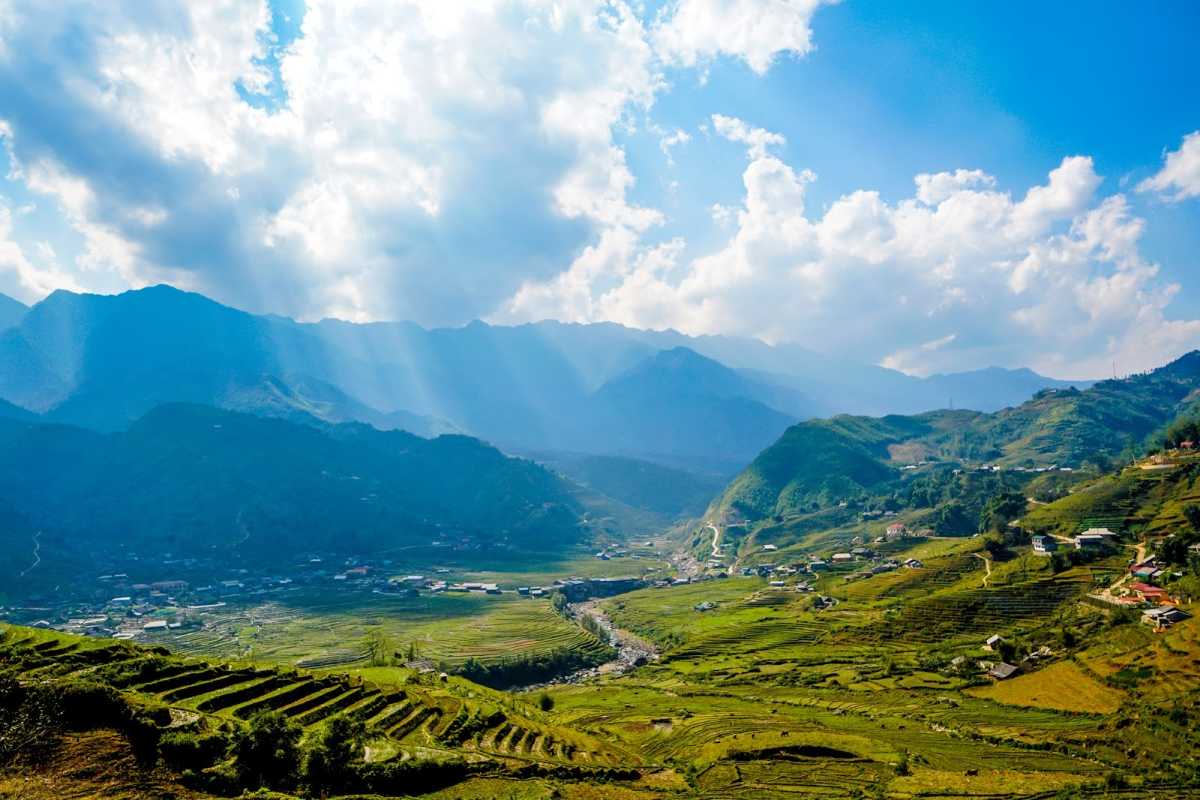
Weather Patterns – What You Need to Know
Understanding the Muong Hoa Valley weather is essential for a comfortable and enjoyable visit. The region experiences distinct rainy and dry seasons that influence daily conditions and packing needs. Preparing for these patterns helps you adapt to changing weather, avoid discomfort, and make the most of your trip.
Knowing what to expect and what to bring ensures your experience in Muong Hoa Valley is safe and pleasant, no matter the season.
Plan ahead with clear guidance on essentials for each weather pattern.
Rainy vs. dry season essentials
Traveling to Muong Hoa Valley means packing differently depending on the season you visit. Here’s a concise list of must-haves for both wet and dry periods:
- Rainy Season (May to September): Waterproof jacket and pants: protect yourself from heavy showers; quick-dry clothing: helps stay comfortable when wet; sturdy waterproof hiking boots: for slippery trails; rain cover for backpack; umbrella; insect repellent: rain increases bugs.
- Dry Season (October to April): Layered clothing: mornings and evenings can be cold; warm jacket or fleece; sun protection: hat, sunglasses, sunscreen; comfortable hiking shoes; light breathable fabrics for daytime warmth; hydration essentials.
Adjusting your packing to these seasonal needs will keep you comfortable and ready for any weather surprises in Muong Hoa Valley.
Being prepared for the rainy and dry seasons lets you focus on enjoying the stunning landscapes without discomfort.
Practical tips for packing and preparation
Packing smart for Muong Hoa Valley means anticipating variable conditions and being ready to adapt quickly. Here are insider tips to guide you:
- Check local weather forecasts shortly before your trip to adjust layers and gear.
- Pack clothes that can be layered for warmth and easily removed as temperatures change.
- Bring a small first-aid kit including blister pads and any personal medications.
- Carry a reusable water bottle to stay hydrated during treks.
- Use waterproof bags or ziplock pouches to protect electronics and important documents.
- Don’t forget essentials like a headlamp for early morning or late evening walks.
- Respect local culture by dressing modestly and appropriately.
Following these practical packing and preparation tips will help you navigate the Muong Hoa Valley weather confidently and comfortably.
Smart preparation maximizes your comfort and enjoyment, letting you focus on the breathtaking beauty of the valley.
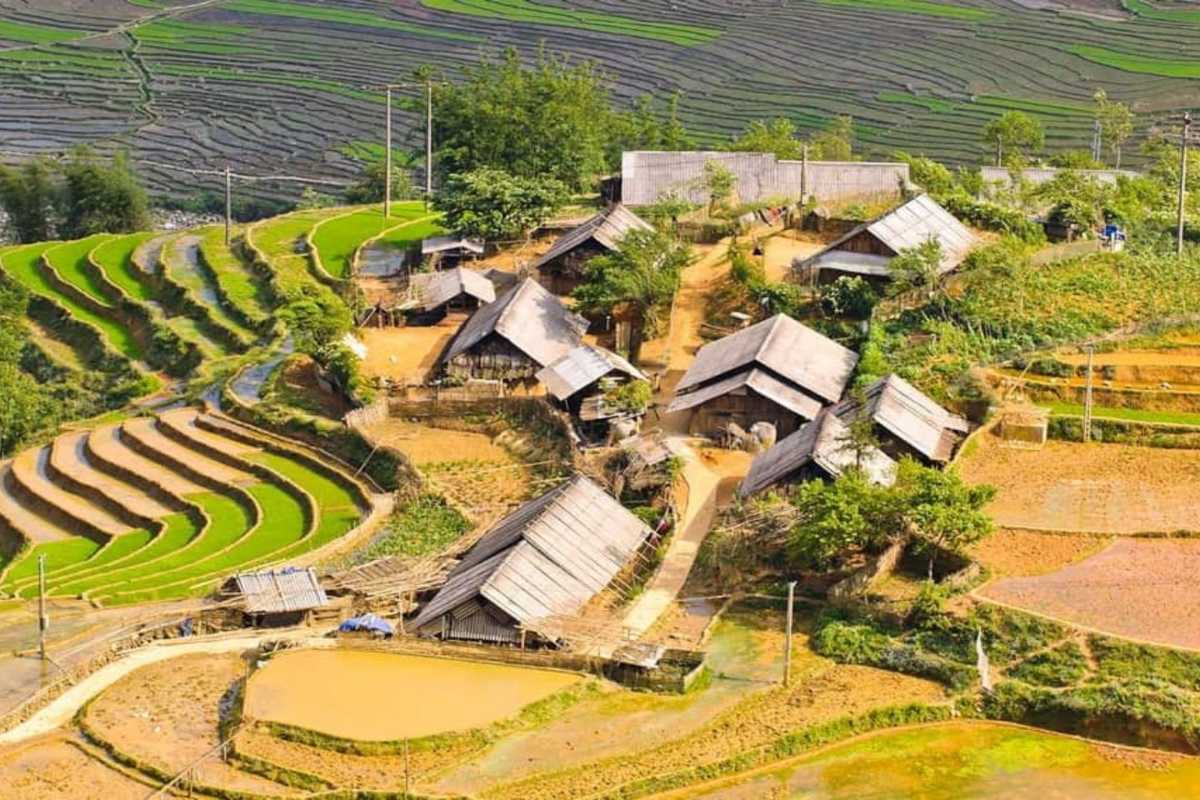
Photography Seasons: When to Capture Muong Hoa's Iconic Landscapes
For photography enthusiasts, Muong Hoa Valley offers a breathtaking canvas that changes dramatically with the seasons. Timing your visit to coincide with ideal lighting and natural events will elevate your shots from beautiful to truly iconic. Knowing the best months and vantage points enhances your ability to capture the valley’s essence.
This guide provides expert insights to help you frame unforgettable images of Muong Hoa Valley’s stunning rice terraces and vibrant landscapes.
Master these photography seasons to make the most of your camera and your visit.
Jessica's Sunrise Shot: Capturing the Golden Rice Terraces in October
Everyone talks about the golden rice terraces in Sapa during October, but let me tell you, "talk" doesn't do it justice. I'd seen countless photos online, yet the real, visceral experience of standing in the pre-dawn chill, camera in hand, waiting for that perfect light to spill over Muong Hoa Valley, was unlike any other photography pursuit I've ever attempted. It wasn't just about getting a shot; it was about truly capturing the magic of Sapa's most breathtaking season, a quest that demanded patience, a bit of grit, and a very early alarm clock.
The plan was simple: be at the viewpoint overlooking the central part of Muong Hoa Valley well before sunrise. My alarm buzzed mercilessly at 4:30 AM. Pulling on every layer I owned – fleece, waterproof jacket, warm hat – I grabbed my camera bag, the crisp mountain air biting at my cheeks as I stepped out of my homestay. The sky was still a deep, inky blue, dotted with fading stars. There was no one else around, just the distant crow of a rooster and the almost imperceptible murmur of the Hoa Stream below. I trekked about 20 minutes to a spot I'd scouted the previous afternoon, a slightly elevated curve in the road that offered an unobstructed panorama of the terraces, knowing this was my best chance for that iconic October golden rice glow. The air was incredibly still, with a damp coolness that permeated everything, hinting at the mist that often cloaks the valley at this hour.
I set up my tripod, carefully composed my shot, and then, I waited. The process was less about frantic clicking and more about observation. First, the sky began to lighten, a subtle shift from indigo to soft violet, then streaks of pale pink and orange. The valley below remained shrouded in a thick, pearly mist, completely obscuring the terraces. My heart sank a little; was it going to be a complete white-out? But then, just as a sliver of sun crested the highest peaks, something incredible happened. The mist began to move, swirling and dancing, slowly revealing glimpses of the terraces beneath. It was like a grand reveal. As the sun climbed higher, shafts of golden light pierced through the dissipating fog, hitting the ripe rice fields. That's when it truly hit me: the terraces weren't just golden, they were a thousand shades of ochre, rust, and burnt orange, catching the light in a way that made them shimmer. The sound of my shutter clicking was the only thing breaking the profound stillness as I captured that fleeting, perfect moment when the light was just right, making the grains look like liquid gold against the deep shadows of the valley folds. I shifted my angle, trying to catch reflections in the dew-kissed leaves, zooming in on distant farmers already at work, their figures silhouetted against the radiant fields. The light lasted only a magical 15-20 minutes before becoming too harsh, but by then, I knew I had my shot.
The crisp, clean mountain air filled my lungs, carrying a faint, sweet smell that I imagined came from the ripe rice itself. My fingers, initially numb with cold, tingled with excitement as I adjusted my camera settings. The sight of the mist dancing and then retreating, revealing the stunning landscape beneath, was utterly captivating. A profound sense of awe washed over me as the light touched the terraces, turning them into liquid gold. This quickly evolved into pure joy as I realized I was witnessing (and capturing!) something truly spectacular. There was a sense of triumph in having braved the early morning cold and uncertainty, knowing that the patience had paid off. This wasn't just a photo; it was a memory etched with light and perseverance.
My biggest insight for anyone aiming for that quintessential golden rice terrace shot in October is this: patience is your most valuable tool, and the "perfect" shot isn't just about the sun. Many people arrive with the sun, missing the truly magical interplay of light and mist as dawn breaks. Focus on the moments before the sun fully hits, when the mist is still part of the scene, creating depth and atmosphere. Also, don't be afraid to scout your location the day before; knowing exactly where you want to be when the light happens saves precious minutes.
My Tips for Your Perfect Sapa Sunrise Photo:
- Scout Your Spot Ahead: Visit your chosen viewpoint the afternoon before. Note the best angles, potential obstructions, and where the sun will rise.
- Time Your Arrival (Early!): Aim to be at your spot 45-60 minutes before official sunrise. This gives you time to set up, assess the light, and capture the pre-dawn colors and the crucial mist interactions.
- Embrace the Mist: Don't be discouraged by fog or mist. Often, it adds incredible atmosphere. Wait for the sun to break through it—that's when the magic happens.
- Use a Tripod: For low-light conditions and sharp images, a tripod is essential. It also helps with precise composition.
- Dress Warmly: October mornings in Sapa are chilly. Layers, a warm hat, and gloves are non-negotiable, especially when standing still.
- Consider Composition Beyond the Panoramic: While wide shots are great, also look for smaller details: a single farmer, reflections in small water puddles, or textures of the rice stalks.
- Check Your Settings (ISO, Aperture): For low light, start with a slightly higher ISO (e.g., 400-800) and a wider aperture (e.g., f/5.6-f/8) to let in more light, then adjust as the sun rises.
As the golden light finally became too bright and the first buzz of other visitors started, I packed up my gear, my heart buzzing with satisfaction. That morning in Muong Hoa Valley wasn't just about clicking a shutter; it was about experiencing a profound connection to a landscape that truly comes alive with the dawn. The image I captured was just a small piece of the immense beauty I felt.
Recommendation: If you have a passion for photography and want to truly capture the iconic beauty of Sapa's golden rice terraces, dedicating an early October morning to a Muong Hoa Valley sunrise is an absolute must. It requires effort, but the sheer visual payoff and the feeling of witnessing such raw natural artistry are rewards that money simply cannot buy. Go for the shot, stay for the unforgettable moment.
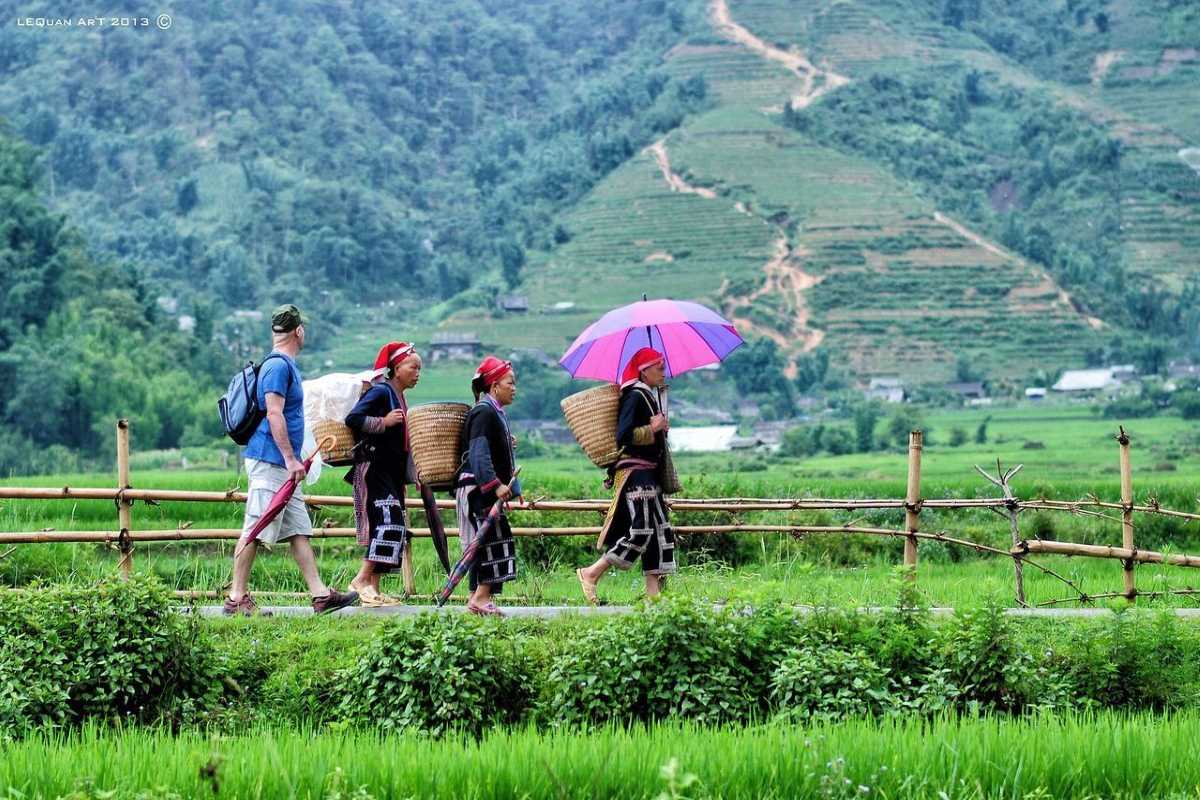
Insider Advice: How to Avoid the Crowds
Getting a peaceful and authentic experience in Muong Hoa Valley often means knowing when and where to go to dodge the busiest times. Avoiding crowds lets you connect more deeply with the landscape and local culture. This section shares actionable tips to help you find tranquility during your visit.
Use these insider strategies to enjoy the valley’s beauty without the distractions of large groups.
Plan your visit smartly to maximize solitude and meaningful moments.
Lesser-known visiting windows
Finding quiet moments in Muong Hoa Valley means visiting during times less traveled by tourists. Consider these underrated windows for more solitude:
- Shoulder Seasons: Early November and late March offer fewer visitors while still showcasing beautiful scenery.
- Weekdays: Visiting Monday through Thursday reduces the chances of encountering large tour groups.
- Non-Festival Dates: Avoid major local festivals when the valley can become crowded.
- Off-Peak Hours: Mid-morning to early afternoon often sees fewer visitors compared to peak morning and late afternoon.
Choosing these times lets you experience Muong Hoa Valley in a calm, reflective atmosphere.
These lesser-known windows provide the perfect chance for peaceful exploration away from the crowds.
Early mornings, weekdays, and festival timing
Optimizing your visit based on time of day and local events can dramatically improve your experience in Muong Hoa Valley. Here’s how to plan:
- Early Mornings: Start your trek or exploration at dawn to enjoy cool air and empty trails.
- Weekdays: Aim for weekday visits to avoid weekend tourist surges common in Sapa.
- Festival Awareness: Research local festivals and either join for a vibrant cultural experience or avoid for tranquility.
- Avoid Peak Tourist Periods: Holidays like Tet or summer break bring more crowds; plan accordingly.
By aligning your schedule with these tips, you’ll enjoy the valley’s serenity and have more intimate encounters with nature and local communities.
Timing your visit carefully ensures a richer and more peaceful Muong Hoa Valley adventure.
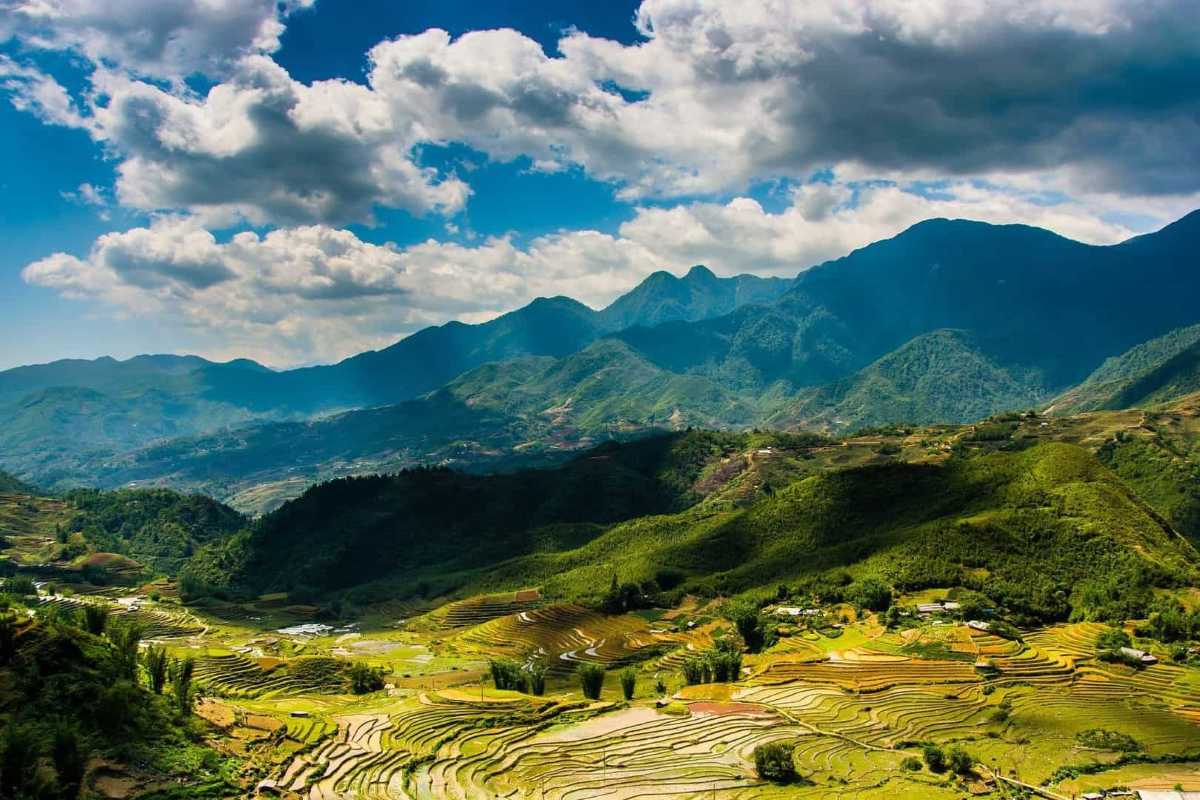
Top Things to Do in Muong Hoa Valley
Muong Hoa Valley offers an array of activities that invite you to explore its stunning landscapes, rich culture, and vibrant village life. Whether you’re seeking scenic trekking, cultural immersion, or unique local experiences, this section presents the best things to do to make your visit unforgettable.
Dive into the heart of Muong Hoa Valley with these must-try adventures and highlights that bring the valley’s charm to life.
Plan your itinerary around these top activities to fully experience the magic of Muong Hoa Valley.
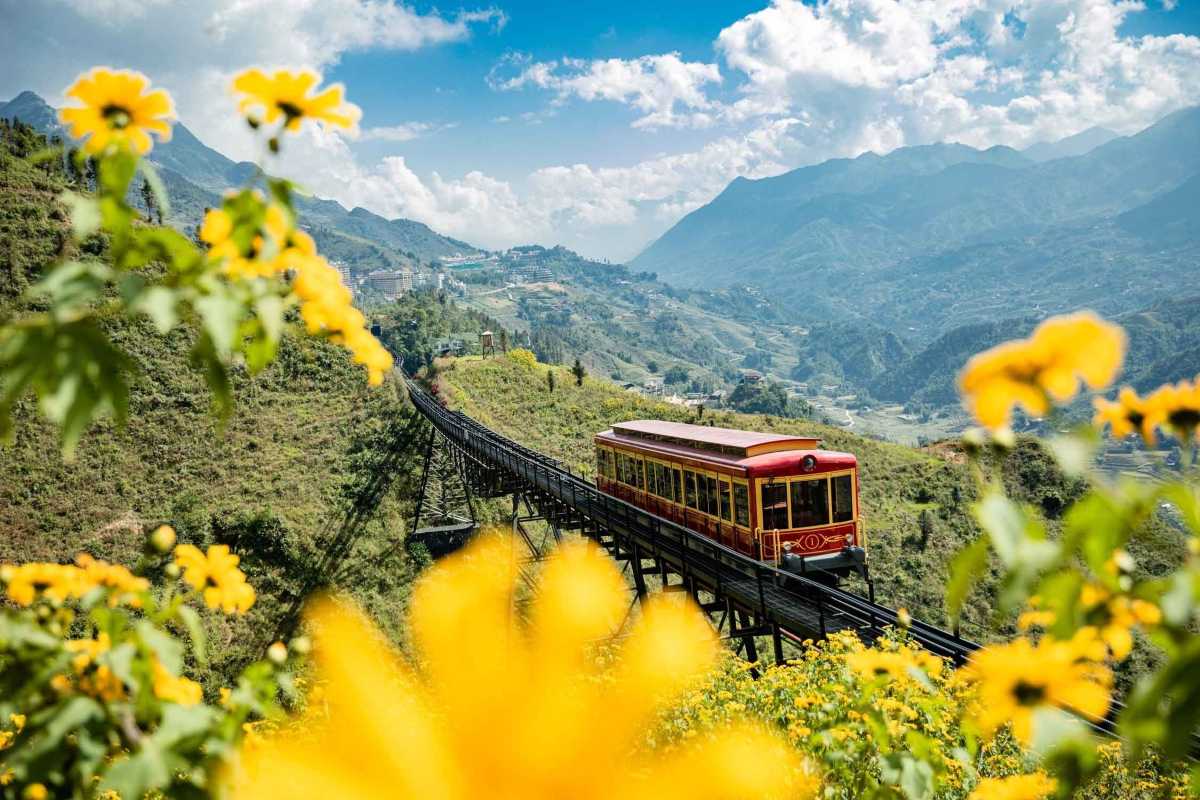
Trekking and Scenic Walks – Routes for All Levels
Exploring Muong Hoa Valley on foot is one of the best ways to soak in its beauty. Whether you prefer gentle strolls or demanding treks, there’s a route for everyone here.
From short, easy hikes that let you enjoy peaceful terraces to challenging multi-day treks leading through remote villages, these options help you match your fitness and time to the perfect adventure.
Get ready to discover scenic paths that reveal the valley’s best viewpoints, vibrant communities, and natural wonders.
Choose the trek that suits your pace and interests to experience Muong Hoa Valley like a local.
Easy day hikes vs. challenging multi-day treks
Whether you’re new to trekking or a seasoned hiker, Muong Hoa Valley offers options tailored to your stamina and schedule:
- Easy Day Hikes: These include popular routes between Lao Chai and Ta Van villages, featuring well-maintained paths, gentle terrain, and stunning views. Ideal for casual walkers and families.
- Moderate Treks: Connecting multiple villages, these routes offer deeper cultural encounters and longer walking times. Terrain varies with occasional hills and narrow trails.
- Challenging Multi-Day Treks: Designed for adventure seekers, these involve overnight stays in remote villages, rugged terrain, and steep ascents. Expect rewarding landscapes and authentic community interactions.
Understanding these options helps you pick the best trek to enjoy Muong Hoa Valley safely and enjoyably.
Choose your trekking style to unlock the valley’s hidden treasures at your own pace.
Can’t-miss scenic stops along the way
Enhance your trekking experience with these standout sights in Muong Hoa Valley:
- Panoramic Viewpoints: Hillsides near Lao Chai offer breathtaking vistas of cascading rice terraces.
- Waterfalls: Hidden along several trails, these serene spots provide refreshing rest points and photo opportunities.
- Unique Rice Terrace Formations: Marvel at the valley’s intricate terracing shaped by generations of farmers.
- Cultural Stops: Small villages where you can witness traditional farming and local crafts.
Including these highlights in your route will enrich your journey and create lasting memories.
Don’t miss these iconic spots to capture the true spirit of Muong Hoa Valley.
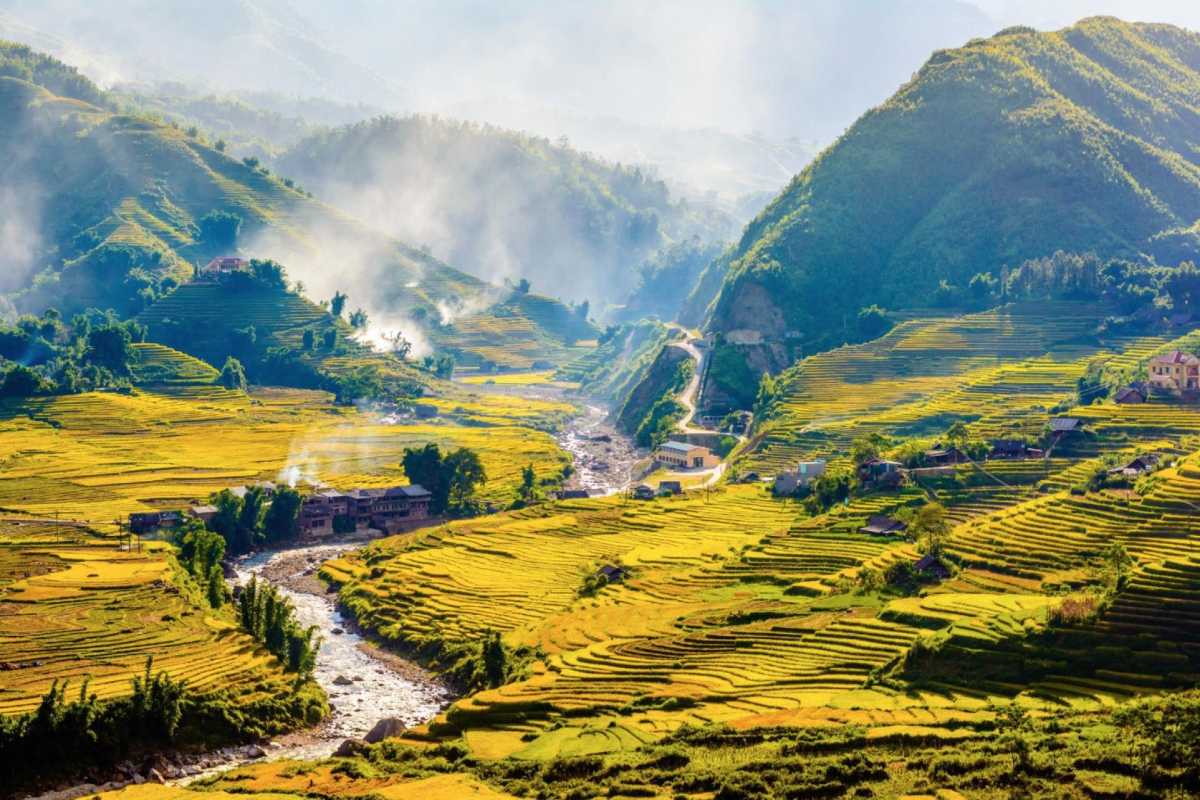
Immersive Trekking Experiences: Guided vs. Self-Guided
When exploring Muong Hoa Valley, deciding between a guided or self-guided trek shapes your adventure and experience. Each style offers distinct benefits depending on your interests, confidence, and desire for cultural connection.
Understanding these options helps you pick the trekking approach that matches your travel goals and comfort level.
Whether you seek expert insight or the freedom to roam independently, knowing the pros and cons ensures a rewarding Muong Hoa Valley trek.
Guided Treks provide expert navigation, rich cultural insights, and safety. Local guides share stories of the valley’s heritage, introduce you to indigenous communities, and help navigate complex routes. This option supports community livelihoods and enriches your understanding of Sapa traditions. Guided treks also reduce stress for less experienced hikers.
Self-Guided Treks offer independence and flexibility. You set your pace, choose stops, and immerse yourself on your own terms. This option suits adventurous travelers confident in navigation and seeking a personal connection with the landscape. However, self-guided trekking requires preparation, good maps, and awareness of safety precautions.
Carefully weighing these options empowers you to design a Muong Hoa Valley trek that fits your style, whether you prioritize learning or autonomy.
Consider your trekking preferences and make an informed choice for a memorable journey through Muong Hoa Valley.
Carlos' Challenging Solo Trek: Overcoming the Foggy Path to Giang Ta Chai
They say the best adventures happen when you step outside your comfort zone, and my solo trek to Giang Ta Chai through the heart of Muong Hoa Valley proved that cliché gloriously true. Most people opt for a guided tour in Sapa, and honestly, on that particular foggy morning, I almost wished I had. But pushing through the unexpected challenges of navigating an obscured path alone transformed a simple hike into a profound journey of self-reliance and discovery, proving that some of the most rewarding views are earned, not just given.
My intention was straightforward: a full-day solo trek from my homestay in Ta Van to Giang Ta Chai and back. I’d studied my offline map the night before, memorized key landmarks, and packed light. The morning started clear, with the early sun just beginning to warm the valley. I set off with a spring in my step, the terraced fields a vibrant green around me. But as I climbed higher, heading towards what I believed was the main path to Giang Ta Chai, a thick, insistent fog began to roll in, swallowing the landscape faster than I could have imagined. Within minutes, visibility dropped to mere meters. My heart started to pound a little harder; what had felt like a clear path was now a ghostly, indistinct trail.
This was the challenge. The clear markers I’d relied on disappeared. The sounds of the valley—distant roosters, the murmur of the river—were muffled. I found myself pausing repeatedly, checking my compass, my map, then checking again. There were moments of genuine doubt, when I considered turning back. Once, I followed what looked like a path, only for it to abruptly end at a steep, slippery descent. I had to backtrack, clambering over rocks, my boots sinking into soft mud. But then, there were those unexpected moments of connection: a fleeting glimpse of a local Hmong woman emerging from the mist, her back laden with firewood, who, with a single gesture and a warm, knowing smile, pointed me towards a faint, barely visible trail I’d completely missed. Another time, I heard the faint tinkle of a bell, and a small herd of water buffalo materialized from the fog, their dark shapes appearing like ghosts before dissolving back into the grey. These brief, silent encounters felt like blessings, reaffirming I wasn't entirely alone. Finally, after what felt like an eternity, the fog began to lift ever so slightly, and the first outlines of Giang Ta Chai’s wooden houses emerged, nestled precariously on the hillside. The sheer relief, combined with the quiet triumph of having navigated it myself, was overwhelming.
The damp, cool air clung to me, carrying the heavy, earthy scent of wet soil and lush vegetation. The muffled silence of the fog was almost unnerving, making the faint trickle of unseen water or the distant call of a bird feel incredibly sharp. Emotionally, the trek was a rollercoaster: initial confidence gave way to growing anxiety as the fog thickened. There were moments of frustration when I felt lost, followed by surges of determination to push forward. The relief upon seeing Giang Ta Chai, and the profound sense of accomplishment at having overcome the mental and physical challenges, was immense. This wasn't just a hike; it was a test of self-reliance, confirming a quiet strength I didn't fully realize I possessed. It resonated deeply, reminding me that clarity isn't always given; sometimes, you have to find your way through the blur.
My biggest insight from this challenging Sapa trek is that going solo in foggy conditions demands a heightened state of awareness and preparedness, far more than a sunny day. Don't rely solely on visual cues; listen to the sounds of the valley and trust your gut. Also, while an offline map is crucial, learning to read the subtle signs of a trail – worn earth, strategically placed rocks, faint animal tracks – becomes invaluable. The "secret" is embracing the uncertainty and allowing for detours; sometimes, the best discoveries are made when you're a little bit lost.
My Tips for a Solo Sapa Trek (Especially in Challenging Conditions):
- Offline Maps Are Non-Negotiable: Download detailed offline maps (Google Maps, Maps.me, or dedicated trekking apps) for the entire Muong Hoa Valley area before you lose signal.
- Tell Someone Your Plan: Inform your homestay host or a trusted contact about your intended route and estimated return time, especially if you're trekking alone.
- Pack Smartly (and for Weather Changes): Bring layers, a waterproof jacket, sturdy waterproof hiking boots, sufficient water, snacks, a basic first-aid kit, and a headlamp (even for day treks). Fog can appear rapidly.
- Trust Your Instincts (and Locals!): If a path feels wrong, it probably is. Don't hesitate to backtrack. If you see locals, a friendly "Xin Chao" (hello) and pointing at your map can often get you invaluable directions.
- Conserve Phone Battery: Use your phone primarily for navigation. Avoid excessive photo-taking or social media to ensure you have battery for emergencies or navigation.
- Patience and Resilience: Recognize that conditions can change. Be prepared for mud, slippery sections, and reduced visibility. It's about resilience, not speed.
Reaching Giang Ta Chai, tired but exhilarated, the fading fog finally revealing the vibrant green valley sprawling beneath me, felt like more than just reaching a destination. It was the culmination of overcoming internal and external obstacles, a quiet victory in the vastness of the mountains. This solo trek wasn't just about the miles covered; it was about the growth discovered along the way.
Recommendation: If you're an adventurous spirit looking for a truly empowering experience beyond the typical tourist trail in Sapa, I wholeheartedly recommend a challenging solo trek into Muong Hoa Valley towards villages like Giang Ta Chai. It will test your resolve, but the rewards—the raw beauty, the unexpected connections, and the profound sense of accomplishment—are absolutely priceless. Just go prepared, and embrace the unpredictable journey!
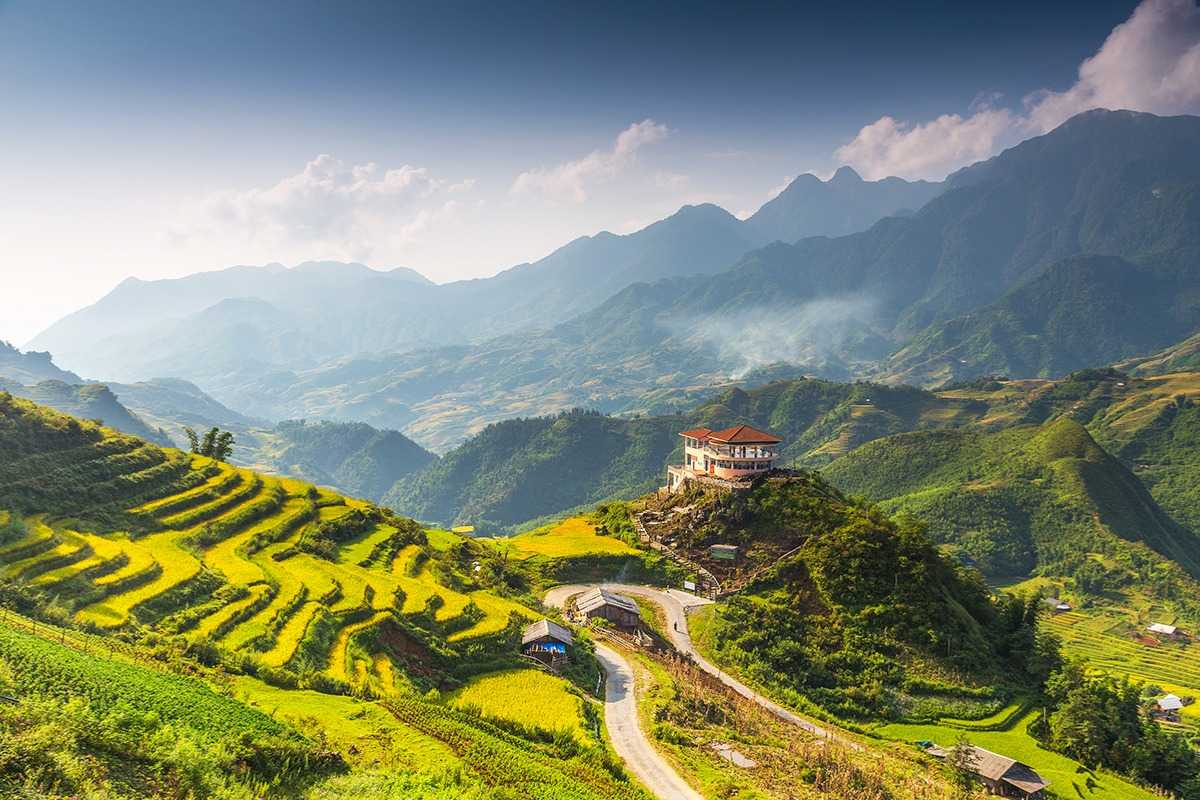
Experiencing Local Villages and Ethnic Cultures
Exploring Muong Hoa Valley means immersing yourself in the vibrant cultures of Sapa’s indigenous communities. Respectful engagement with the valley’s ethnic groups enriches your journey and fosters meaningful connections.
Understanding local customs and traditions helps you appreciate the depth and diversity of life in these mountain villages.
Approach your visits with openness and sensitivity to create authentic experiences and lasting memories in Muong Hoa Valley.
Meeting the Hmong, Dao, and Giáy people
Connecting with the main ethnic groups in Muong Hoa Valley offers insight into their rich heritage and unique lifestyles. Here’s what to know:
- Hmong: Recognizable by their colorful traditional attire, the Hmong are skilled farmers and artisans. Approach interactions with curiosity and respect.
- Dao (Red Dao): Known for their distinctive red embroidery and herbal remedies, the Dao have rich customs around clothing and healing traditions.
- Giáy: Often quieter communities, the Giáy people maintain unique languages and cultural practices tied closely to the valley’s natural rhythm.
When visiting villages, always ask permission before photographing and observe local customs.
Respectful behavior creates a positive impact and deepens your cultural experience.
Engage genuinely and learn directly from these remarkable communities in Muong Hoa Valley.
Unique homestay experiences and cultural exchanges
Staying in a homestay within Muong Hoa Valley offers a rare chance to live alongside local families and share in their daily routines.
Here’s what to expect and how to make the most of your homestay:
- Basic Amenities: Prepare for simple accommodations with shared bathrooms and communal spaces.
- Shared Meals: Enjoy home-cooked dishes made from local ingredients, often served family-style.
- Cultural Participation: Join in activities like cooking, farming, or traditional crafts to deepen your connection.
- Etiquette: Show appreciation for hospitality, be mindful of household rules, and communicate with patience and kindness.
These authentic experiences create meaningful cultural exchange and lasting friendships.
A homestay stay transforms your visit into an immersive journey into Muong Hoa Valley’s heart.

Authentic Cultural Immersion: Beyond the Tourist Trail
To truly experience Muong Hoa Valley, step beyond typical tourist paths and embrace deeper cultural immersion. This means actively learning from locals, participating in their daily life, and fostering genuine connections.
Such authentic engagement transforms your visit into a meaningful journey rich with discovery and understanding.
Here’s how to engage more deeply with Sapa’s vibrant cultures beyond the usual tourist trail.
- Participate in Daily Activities: Join villagers in farming, weaving, or cooking to gain hands-on insight into their traditions and lifestyle.
- Learn Basic Language Phrases: Simple greetings and phrases in local dialects show respect and open doors to warmer interactions.
- Shop Directly from Artisans: Support local craftsmanship by purchasing handmade goods directly from the creators rather than markets catering to tourists.
- Attend Community Events: Seek out local festivals, celebrations, or gatherings that offer authentic cultural expression beyond staged performances.
- Respect Cultural Norms: Observe customs regarding dress, photography, and behavior to foster trust and mutual respect.
Immersing yourself authentically in the Muong Hoa Valley community not only enriches your travel experience but also supports sustainable and respectful tourism.
Make your visit truly unforgettable by embracing the heart of Sapa through genuine cultural connection and hands-on participation.
Priya's Evening with a Hmong Family: Sharing Stories by the Fire
When you travel, you sometimes hope for those moments of true connection, the kind that transcend language and culture. In Muong Hoa Valley, staying with a Hmong family in their traditional homestay wasn't just about a bed for the night; it was about an evening by the fire, sharing stories and smiles that resonated with a depth I never anticipated. It transformed my visit from a simple sightseeing trip to a profoundly human experience, cementing a memory I know I’ll carry with me long after the golden rice fields fade from my photos.
After a long, satisfying day of trekking through the terraced landscape, the chilly evening air began to settle over the valley. My guide led me to a simple wooden house, smoke curling gently from its roof, nestled among other homes in a quiet hamlet. Stepping inside, the warmth from a central cooking fire immediately enveloped me, chasing away the cold. I was greeted by a woman with a kind, weathered face, her traditional Hmong indigo clothing a vibrant splash against the rustic interior. She gestured for me to sit on a low stool by the fire, and soon, her husband and children joined us, their eyes curious but welcoming. My initial expectation was a polite, perhaps slightly awkward, silence. Instead, I found myself drawn into the quiet hum of their evening routine.
The heart of the evening was undoubtedly the fire. As our shared meal—steaming bowls of rice, stir-fried greens, and tender pork—simmered, we sat around it, warmth radiating outwards. Language was, of course, a barrier, but not an insurmountable one. We communicated through gestures, through the patient translations of my guide, and most powerfully, through shared laughter and the universal language of food. The woman showed me how to wrap sticky rice in banana leaves; her daughter, perhaps ten years old, giggled as I clumsily tried to use chopsticks with my left hand. I learned about their day, their farming life, the challenges and joys of raising a family in this remote beauty. They asked about my home, about my journey, their questions simple but genuine. There was a moment when the lights flickered and died (a common occurrence in the valley), plunging us into almost complete darkness save for the dancing flames. In that amber glow, with the scent of woodsmoke and cooking food filling the air, and their gentle voices around me, I felt an extraordinary sense of peace and belonging. It was utterly devoid of pretense, just pure, unadulterated human connection.
The warmth of the fire was a tangible comfort against the valley's chill, its smoky aroma mingling with the delicious scent of cooking rice and garlic. I could hear the gentle crackle of the burning wood, punctuated by the soft murmurs of their Hmong conversation and the occasional giggle of the children. My initial feelings of slight nervousness about cultural differences quickly melted into a deep sense of comfort and gratitude. There was a profound joy in the shared laughter over small misunderstandings and an overwhelming feeling of being welcomed into their private world. This intimate evening resonated deeply within me; it wasn't about grand sights, but about the quiet dignity of their lives and the immense generosity of spirit they shared. It solidified my belief that genuine human connection is the most valuable souvenir you can bring home.
My key insight from this evening was that true cultural connection happens not through formal tours, but in simple, shared moments. Don't expect elaborate conversations; often, the most meaningful exchanges are non-verbal. The trick is to approach with genuine curiosity and an open heart, ready to observe, participate (even clumsily!), and appreciate the quiet rhythms of their family life. A small, thoughtful gift from your home country (nothing expensive, just a token) can also be a lovely gesture, showing your appreciation for their hospitality.
My Tips for a Meaningful Homestay Experience:
- Embrace Simplicity: Homestays in Muong Hoa Valley are often basic but clean. Go with an open mind, ready to experience local living without Western amenities.
- Participate Actively: Don't just observe. If invited, help with cooking, fetch water, or simply share a story about your life. These interactions are where true connections form.
- Learn Basic Phrases: A simple "Xin Chao" (hello) or "Cam ơn" (thank you) in Vietnamese (or even a few Hmong words if your guide can teach you) will be greatly appreciated.
- Bring a Small Gift (Optional but Nice): A small, practical item from your home country (e.g., local snacks, a postcard, school supplies for children) can be a thoughtful gesture, showing appreciation for their hospitality.
- Respect Their Customs: Ask your guide about appropriate behavior, such as removing shoes before entering, dressing modestly, and asking permission before taking photos.
- Be Patient with Language Barriers: Communication may be challenging, but smiles, gestures, and a patient attitude can bridge most gaps.
- Support Ethically: Ensure your homestay choice directly benefits the family and community. Often, booking through a local guide ensures this.
Leaving that warm fire and the quiet comfort of the Hmong family's home, I carried not just the scent of woodsmoke on my clothes, but a profound warmth in my heart. It was an evening that reminded me that travel is, at its core, about people. These aren't just faces in a foreign land; they are individuals with stories, lives, and an incredible capacity for connection, even across vast cultural divides.
Recommendation: If you are seeking to truly understand the heart of Muong Hoa Valley beyond its stunning landscapes, I cannot recommend an evening or overnight stay with a Hmong family highly enough. It's an opportunity for authentic cultural immersion that will enrich your journey in Sapa far more deeply than any viewpoint. Open your heart, share your time, and prepare for connections that will resonate long after you return home.
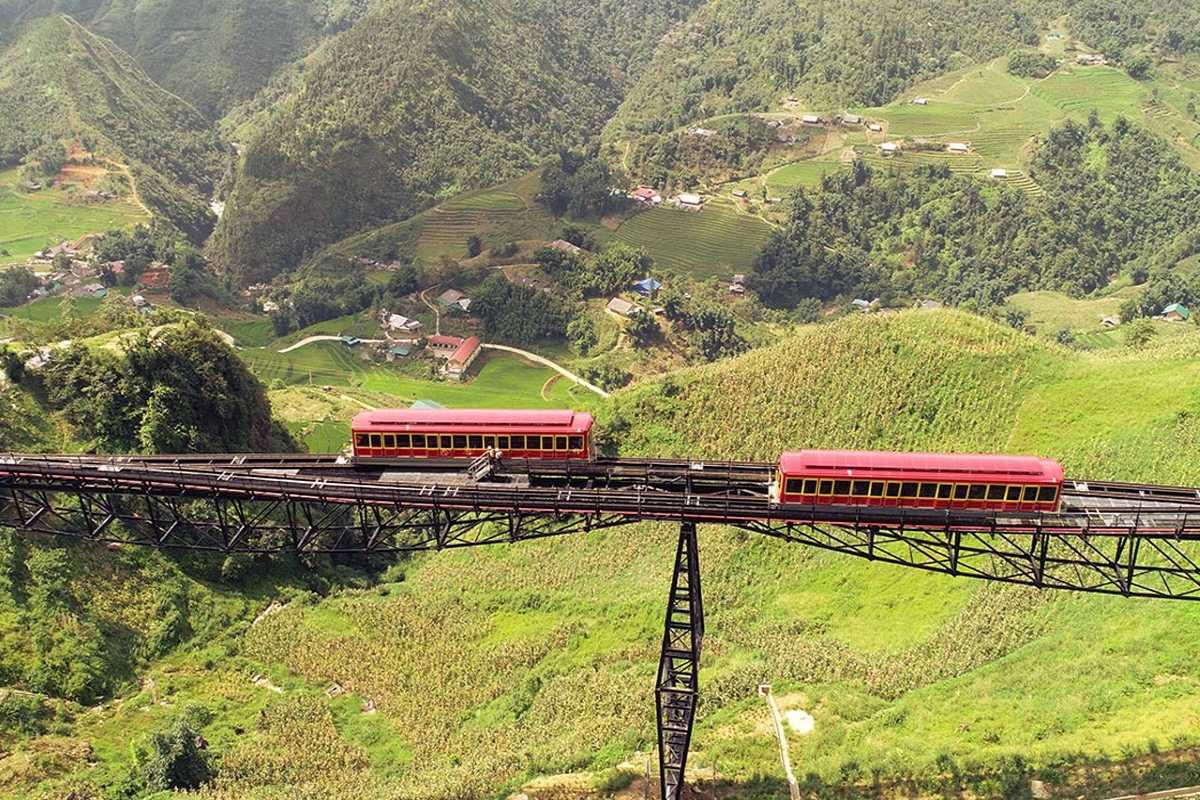
Unique Activities: Weaving Workshops and Natural Crafts
In Muong Hoa Valley, you can dive into hands-on activities that connect you deeply with the local culture. Participating in weaving workshops and exploring natural crafts offers a creative way to experience the traditions of Sapa.
These immersive workshops allow you to learn skills passed down through generations, giving your trip a meaningful and memorable twist.
- Weaving Workshops: Join expert artisans who teach traditional brocade making, guiding you through intricate patterns and techniques using natural dyes and handlooms.
- Craft Lessons: Try your hand at other local crafts, such as embroidery, basket weaving, or herbal remedies, while learning the cultural significance behind each art form.
- Artisan Workshops: Meet skilled villagers who share stories of their craft’s history and its role in preserving Muong Hoa Valley’s heritage.
Engaging in these activities enriches your visit by fostering personal connections and supporting sustainable artisan culture.
By joining a Sapa weaving workshop or craft session, you’ll take home not just souvenirs, but skills and stories that last a lifetime.
Oliver's Hands-On Weaving Workshop: Creating a Traditional Brocade
You see the beautiful, intricate textiles everywhere in Sapa, worn by the Hmong and Dao people, sold in the markets. But to truly understand the depth of their artistry, to feel the threads between your fingers and witness the meticulous process, is an entirely different experience. My afternoon at a weaving workshop in Muong Hoa Valley, attempting to create a traditional brocade, was far more than just a craft lesson; it was a humbling, eye-opening plunge into a heritage skill that brought me closer to the soul of the region than any viewpoint ever could. It transformed my appreciation for every single piece of fabric I saw.
I'd arranged the workshop through my guesthouse, and on a bright, slightly humid afternoon, I followed a winding path deeper into a small village within the Muong Hoa Valley. The workshop itself was part of a simple, open-sided wooden house, filled with the quiet clack-clack of looms and the gentle murmur of women working. The air was soft, carrying the faint, earthy smell of natural dyes and cotton. My teacher, a woman named May, with incredibly nimble fingers and a patient smile, greeted me. My expectation was maybe a quick demonstration, but May immediately pulled up a small stool beside a traditional wooden loom, its complex network of threads looking like an impossible puzzle.
The process began with selecting my threads – vibrant indigo, rich red, and natural white. May started by showing me the most basic pattern, a simple crisscross. My initial enthusiasm quickly met the reality of the loom. Each thread had its place, each movement of the shuttle precise. May would demonstrate a step, then watch patiently as my clumsy fingers tried to mimic her fluid motions. My brow furrowed in concentration, my tongue probably sticking out a little. It was incredibly slow. I kept tangling threads, forgetting which foot pedal to press to lift the warp, or missing a shuttle pass entirely. The steady, rhythmic thwack of May's loom nearby served as a constant, gentle reminder of the skill required. We didn't speak much English, but her encouraging nods and soft corrections were all I needed. As the afternoon wore on, a tiny, imperfect pattern of my own creation began to emerge on the loom – a small square of indigo with white accents. It was far from perfect, visibly uneven compared to May's flawless work, but seeing it grow, thread by painstaking thread, filled me with a quiet sense of accomplishment. I learned not just a skill, but a profound respect for the artistry and patience woven into every single piece of Sapa textile.
The cool, natural breeze drifting through the open workshop kept the air pleasant, carrying the subtle scent of cotton and natural dyes. The constant, gentle clack-clack of the looms and the soft, focused breathing of the women working created a meditative soundtrack. My fingers, initially feeling clumsy and thick, gradually became more sensitive to the texture of the rough cotton threads and the smooth, worn wood of the loom. Emotionally, it was a fascinating arc: initial excitement gave way to frustration at my own clumsiness, then a period of intense concentration. There was a growing sense of awe for May's effortless skill, culminating in a quiet pride as my small piece of fabric began to take shape. This experience resonated deeply with me; it connected me directly to the history and daily lives of the Hmong people, turning abstract culture into a tangible, personal endeavor.
My major takeaway for anyone considering a weaving workshop in Sapa is to manage your expectations: you won't leave with a full brocade, but you will leave with an invaluable understanding of the effort involved. My "insider" tip is to come with patience and an open mind. Don't rush. Allow yourself to be clumsy; it's part of the learning. Also, observe the master weavers closely. You'll notice subtle techniques that aren't explicitly taught but are key to their speed and precision. This isn't just a tourist activity; it's an opportunity to briefly step into a living, ancient craft.
My Tips for Your Own Weaving Experience:
- Go with an Open Mind and Patience: This is a slow, methodical craft. Don't expect to be an expert in an hour. Embrace the process and the learning curve.
- Observe Before You Do: Watch the artisans carefully before you start. Pay attention to their hand movements, rhythm, and how they manage the threads.
- Ask Questions (Through a Guide if Needed): If you have a guide, ask them to translate your questions about the patterns, the dyes, or the history of the craft.
- Support the Artisans Directly: Choose a workshop that clearly benefits the local families or cooperatives. Consider purchasing a finished piece directly from them after your lesson.
- Dress Comfortably: You'll be sitting for a while, so comfortable clothing is key.
- Appreciate the Craftsmanship: Understand that the beautiful brocades you see in the market are the result of many, many hours of skilled labor. This experience will truly deepen your appreciation.
Leaving May and her loom, my small, imperfect woven square clutched in my hand, I felt a profound sense of connection to Muong Hoa Valley's rich cultural tapestry. It wasn't just a souvenir; it was a tangible piece of the patience, skill, and heritage that defines the Hmong people. This hands-on experience offered a depth of understanding that no amount of reading or viewing could ever provide.
Recommendation: If you are visiting Sapa and seeking a truly meaningful cultural immersion beyond the trekking trails, I wholeheartedly recommend a hands-on weaving workshop in Muong Hoa Valley. It's an intimate, rewarding way to appreciate the artistry behind traditional brocade and to connect with the incredible talent and dedication of the local artisans. It's an experience that will weave itself into your memories.
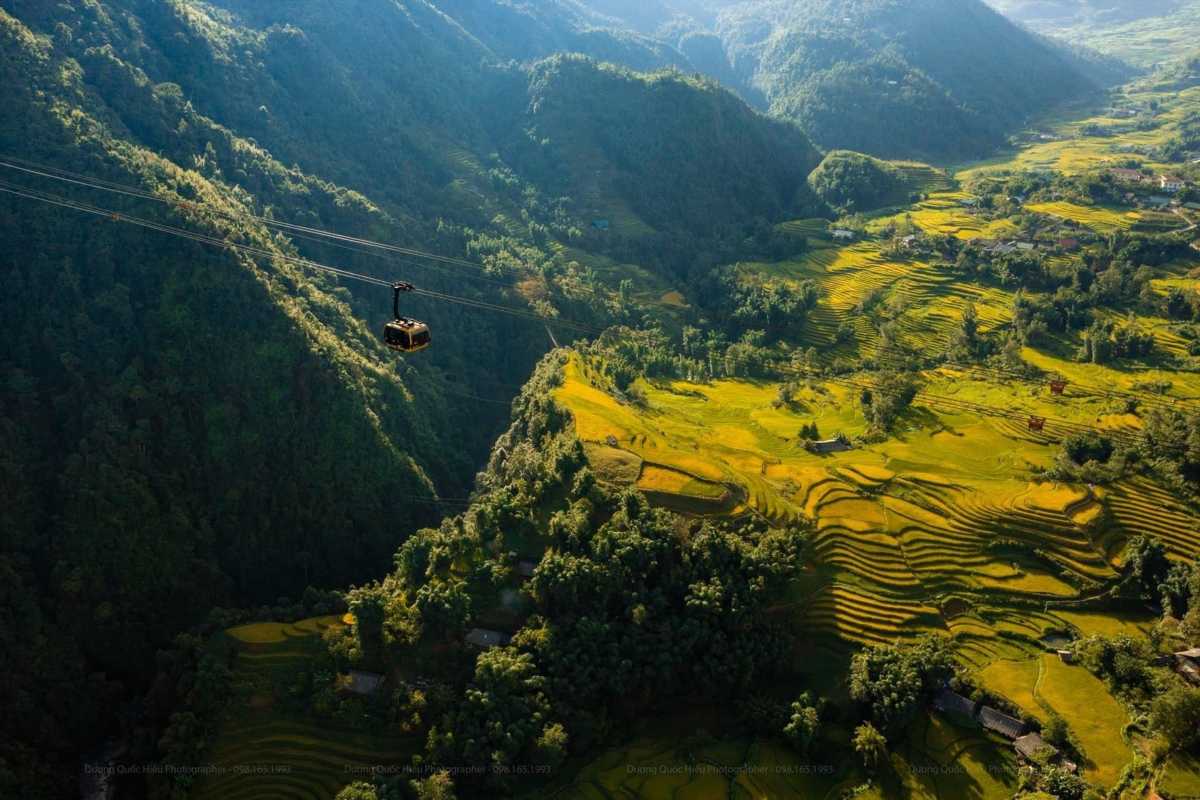
Exploring the Ancient Rock Fields
The Muong Hoa Valley holds an extraordinary secret beneath its scenic beauty—the ancient rock fields filled with mysterious carvings. These petroglyphs are among Sapa’s most fascinating archaeological treasures, offering a glimpse into the distant past and the region’s cultural heritage.
Exploring these carvings deepens your understanding of the valley’s rich history and connects you with the people who once inhabited this land.
- Sapa Ancient Rock Carvings: The valley features hundreds of rock engravings depicting symbols, animals, and possible maps etched thousands of years ago by early inhabitants.
- Petroglyphs Sapa: These carvings are thought to represent early communication, spiritual beliefs, or territorial markings, though their true meaning remains partly mysterious.
- Archaeological Sites Sapa: The rock fields are protected areas with signage and paths to preserve these priceless cultural artifacts.
Visiting the Muong Hoa Valley rock fields invites you to step back in time and reflect on the ancient legacy that shapes the local culture today. This unique experience enriches your trip with a profound sense of wonder and discovery.
Explore these carvings respectfully to appreciate their beauty and significance fully.
What do the carvings mean?
The carvings in Muong Hoa Valley tell stories etched in stone, though their exact meanings remain a subject of study and local legend. Scholars believe they served as early maps, symbolic language, or spiritual icons, reflecting the beliefs and life of ancient communities.
The petroglyphs provide valuable insight into Sapa’s cultural legacy and inspire curiosity about the valley’s earliest inhabitants.
- Interpretation: Many carvings resemble animals, human figures, geometric shapes, or tools, which might relate to hunting, agriculture, or rituals.
- Local Legends: Some locals believe the rocks hold magical powers or messages from ancestors, adding a layer of mystique.
- Archaeological Meaning: Experts continue to study the symbols to better understand the region’s prehistoric culture.
Understanding these carvings enriches your visit by connecting you to the timeless stories embedded in the valley’s stones.
Respect the site by observing from designated paths and refraining from touching the carvings.
How to find the best viewpoints
To fully appreciate the Muong Hoa Valley petroglyphs, it’s essential to know where to find the most impressive and accessible carvings. Clear routes and local guidance make the experience rewarding and straightforward.
Follow these tips to explore the rock fields safely and meaningfully:
- Access Points: Start at the main entry near Lao Chai village, where marked trails lead to key carving sites.
- Local Guides: Hiring a knowledgeable guide can enhance your understanding and ensure you don’t miss hidden gems.
- Route Tips: Wear sturdy shoes, follow signage, and respect restricted zones to protect the carvings.
- Best Viewpoints: Look for elevated spots offering panoramic views of the carvings against the backdrop of rice terraces.
With careful planning, your visit to the Muong Hoa Valley rock fields becomes a highlight of your cultural journey in Sapa.
Use these directions to navigate confidently and uncover the valley’s ancient secrets.

Capture Stunning Photos – Top Spots and Times
For photography lovers, Muong Hoa Valley offers breathtaking vistas that transform with the light and seasons. Knowing where to go and when to shoot makes all the difference in capturing the valley’s iconic beauty.
From the glow of sunrise to the warm hues of sunset, this guide helps you plan your photographic journey for unforgettable shots in Sapa.
Immerse yourself in the valley’s ever-changing scenery and come away with images that tell a vivid story.
Sunrise and sunset locations
To catch the best light, head to these prime spots in Muong Hoa Valley and nearby villages:
- Ta Van Hillside: Offers panoramic views of rice terraces bathed in golden morning light, perfect for sunrise shots.
- Lao Chai Overlook: A favorite for evening sunsets, where shadows stretch across layered paddies creating dramatic contrasts.
- Village Edges: Early risers can capture daily life unfolding with soft natural light near local homes and fields.
- High Vantage Points: Accessible trails lead to elevated spots ideal for wide landscape photography during golden hour.
Visiting these locations at the right time transforms your photos with natural beauty and authentic Sapa atmosphere.
Plan your shoots around sunrise and sunset to harness the best light for stunning photographs.
Seasonal photo opportunities
Timing your visit is key to capturing Muong Hoa Valley’s seasonal charm:
- Spring (March–May): Wildflowers bloom and paddies turn vibrant green, offering fresh and lively scenes.
- Golden Rice Season (September–October): The terraces glow with warm yellow hues, perfect for classic harvest photos.
- Misty Mornings (Winter): Early fog drifts through valleys, adding mystery and softness to your shots.
- Dry Season (November–February): Clear skies and crisp air enhance visibility for distant mountain views.
Align your trip dates with these seasons to create a rich and diverse photography portfolio.
Each season paints the valley differently, ensuring unique photo opportunities year-round.
Capture the essence of Muong Hoa Valley by planning your visit for its peak visual moments.
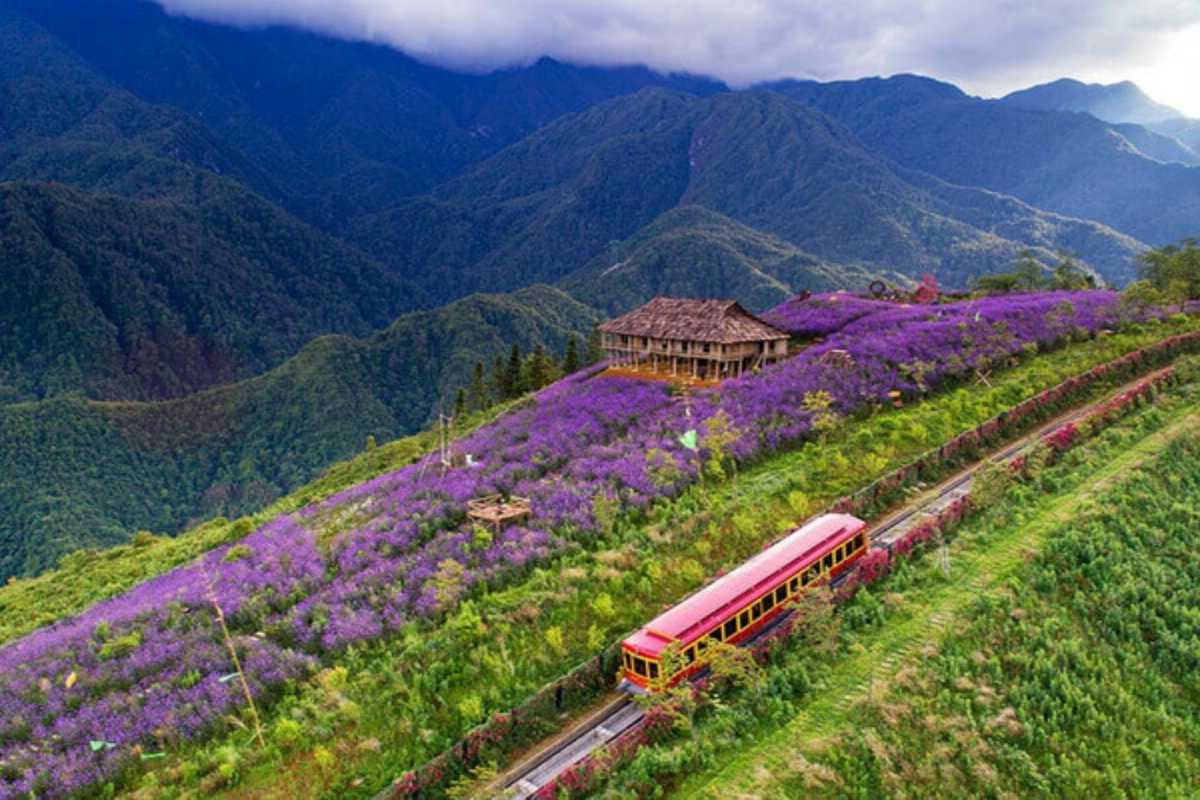
Joining Festivals and Special Events
Experiencing Muong Hoa Valley during local festivals adds vibrant color and rich cultural depth to your visit. These events bring communities together in joyful celebration, offering travelers an unforgettable glimpse into the traditions and rhythms of Sapa life.
By timing your trip to coincide with these lively occasions, you’ll enjoy authentic moments of music, dance, and communal spirit that go beyond typical sightseeing.
Festivals in the valley provide a lively backdrop for deeper cultural connection and meaningful travel.
Harvest celebrations and traditional markets
Harvest time in Muong Hoa Valley is marked by lively celebrations and bustling traditional markets that pulse with local energy.
These events usually take place during September and October, when the rice terraces turn golden and communities come together to give thanks for the season’s bounty.
Highlights include:
- Communal dances and music: Villagers perform traditional songs and dances that tell stories of the land and harvest.
- Local food stalls: Markets overflow with fresh produce, grilled meats, and seasonal specialties unique to the valley.
- Handicraft sales: Artisans offer textiles, jewelry, and carved souvenirs reflecting generations of craftsmanship.
- Social gatherings: Markets become a hub for socializing, trading, and cultural exchange.
Joining these celebrations offers a vivid window into the valley’s agricultural calendar and social fabric.
Plan your visit around harvest time to witness the rich traditions that keep Muong Hoa Valley’s community spirit alive.
Annual festivals you’ll want to catch
Several key festivals in and near Muong Hoa Valley showcase the cultural richness of the region, each with its own unique charm and timing.
Don’t miss:
- Sapa Love Market: Held on weekends and special occasions, this lively event brings together young ethnic people in traditional dress for music, dance, and matchmaking rituals.
- Sapa New Year Festival: Celebrated by various ethnic groups, this festival marks the lunar new year with vibrant ceremonies, food, and folk performances.
- Ethnic minority celebrations: Different groups observe their own festivals throughout the year, offering a diverse range of customs and experiences.
These festivals provide unique opportunities for cultural immersion and authentic memories.
Check local event calendars when planning your trip to align your visit with these colorful, community-driven celebrations.
Joining a festival in Muong Hoa Valley enriches your travel story with moments of joy and tradition that linger long after your journey ends.
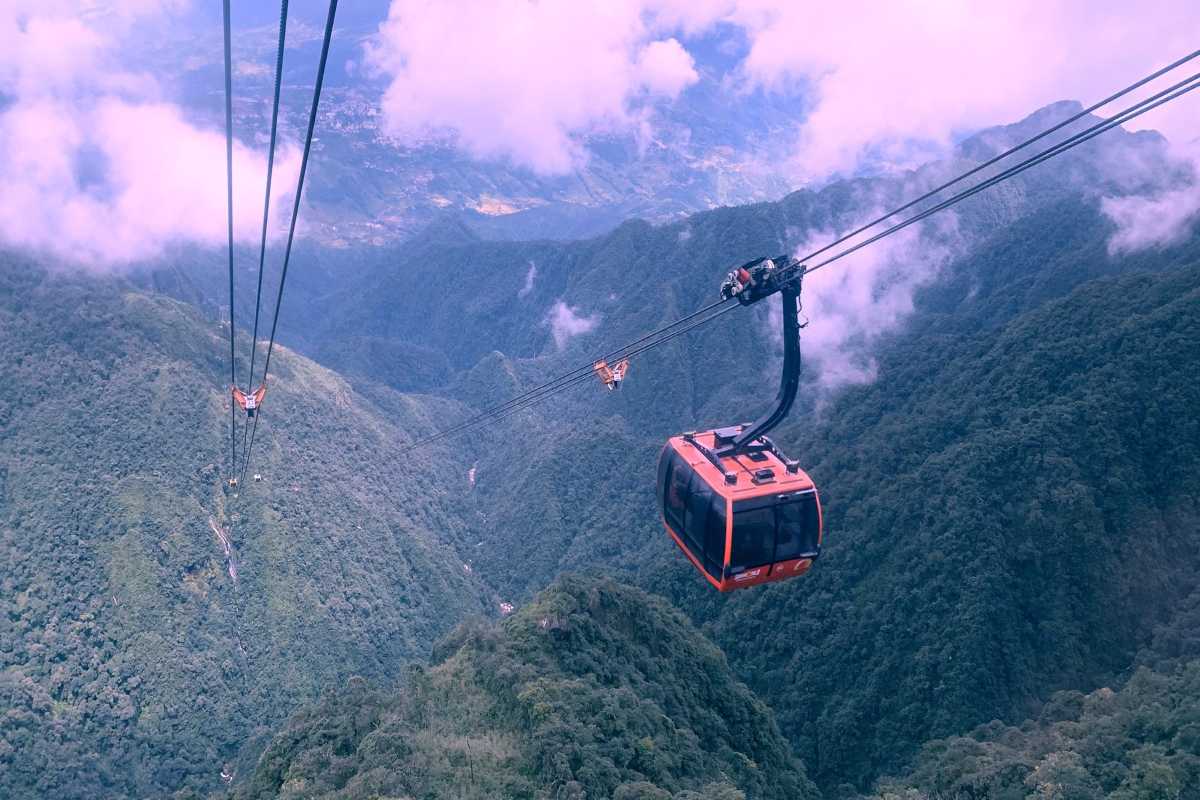
Indulge in Muong Hoa Valley's Local Flavors – A Culinary Journey
The culinary landscape of Muong Hoa Valley is a rich tapestry woven from the traditions and natural bounty of Sapa. Here, every meal is more than food—it’s a celebration of heritage, family, and the land’s unique flavors.
Travelers eager to taste authentic regional dishes will find a vibrant food scene bursting with fresh ingredients, time-honored recipes, and warm hospitality.
From sizzling street stalls to cozy homestays, the valley offers a diverse palate that invites you to savor every bite and truly connect with local culture.
Embark on this delicious journey and discover how food in Muong Hoa Valley tells the story of its people and their enduring relationship with the land.
Enjoy exploring these local flavors and planning your culinary adventure in Muong Hoa Valley.
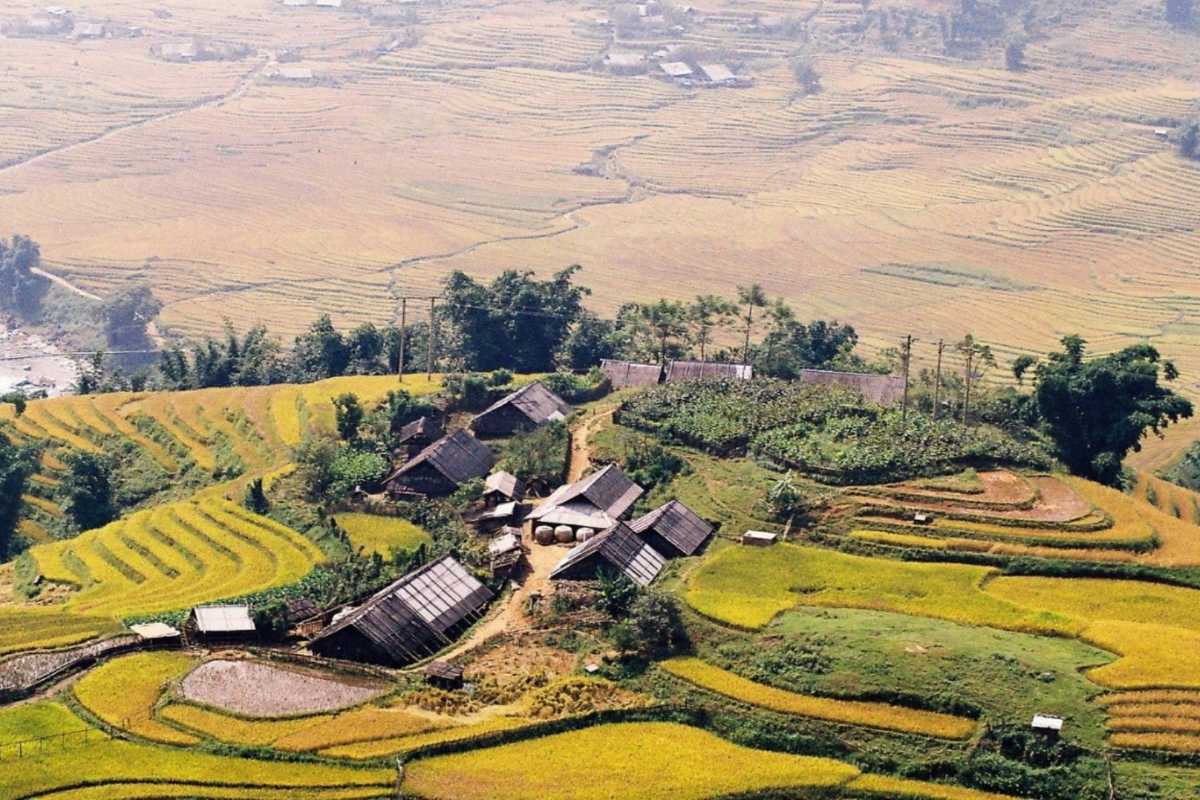
Must-Try Local Dishes and Where to Find Them
When visiting Muong Hoa Valley, indulging in the local cuisine is an essential part of the experience. The valley’s culinary treasures range from hearty mountain stews to delicately grilled meats, reflecting the vibrant culture and agricultural heritage of Sapa.
Some iconic dishes that you simply must try include:
- Thang Co: A traditional Hmong stew made from horse meat and herbs, slow-cooked to create deep, rich flavors that warm you after a day of trekking.
- Com Lam: Bamboo-cooked sticky rice with a subtle smoky aroma, often served alongside grilled meats or fresh vegetables.
- Sapa grilled meats: Succulent pork and chicken grilled over open flames, seasoned with local spices for an unforgettable taste.
- Sapa spring rolls: Fresh and crispy rolls filled with vegetables and meat, perfect as a light snack or appetizer.
- Local market specialties: Explore bustling markets for fresh produce, handmade snacks, and unique sweets.
To enjoy these dishes at their best, visit family-run eateries tucked away in village lanes or partake in meals offered by welcoming homestays, where cooking reflects generations of tradition.
Sampling Muong Hoa Valley cuisine is not just about eating but immersing yourself in the community’s way of life and warmth.
Be sure to include these flavors in your travel itinerary to experience the true taste of Sapa.
Lena's Favorite Pho from a Muong Hoa Valley Roadside Stall
You travel to Sapa for the majestic rice terraces and the misty mountains of Muong Hoa Valley, absolutely. But for me, sometimes the most profound memories are found in the simplest, most unexpected moments – like a steaming bowl of pho from a tiny, unassuming roadside stall. It wasn't a Michelin-starred meal, or even a bustling restaurant experience. Instead, it was an incredibly authentic, deeply satisfying culinary surprise that became the unexpected highlight of my taste buds, proving that in Vietnam, truly unforgettable food finds you.
It was mid-afternoon, and I'd spent hours trekking through the lower trails of Muong Hoa Valley, soaking in the greens and golds of the terraced fields. My legs were starting to ache, and a pervasive, pleasant hunger had set in. I was on my way back towards my homestay when, just around a bend in the winding dirt road, I caught a glimpse of a wisp of smoke and the unmistakable scent of simmering broth. It wasn't a permanent structure, just a makeshift tarp strung between a few poles, a couple of low plastic stools, and a small, bubbling pot over a wood fire. Curiosity, and my growling stomach, pulled me in. My expectation was maybe a quick, functional snack. What I received was far more.
An elderly woman, her face crinkled with warmth, greeted me with a toothless smile. She gestured to a free stool. There was no menu, just the one offering: pho. As she ladled the broth into a bowl, I watched, mesmerized. The process was unhurried, almost meditative. First, the fresh rice noodles, then thin slices of beef, followed by a handful of fresh herbs – coriander, spring onions, a tiny sprig of what I later learned was Vietnamese mint – all nestled into the bowl. Finally, the golden, aromatic broth poured over everything, instantly filling the air with its rich fragrance. I squeezed a wedge of lime over it, added a tiny dollop of chili paste, and took my first hesitant spoonful. The warmth spread instantly, not just in my mouth but through my entire body. The broth was incredibly complex – savory, slightly sweet, with an elusive depth that spoke of hours of slow simmering, a true comfort after a long walk. The noodles were perfectly al dente, the beef tender, and the fresh herbs burst with vibrant flavor, providing a sharp contrast to the rich broth. I remember the soft slurp of the noodles, the gentle clinking of the ceramic bowl against the plastic table, and the distant sounds of the valley – a dog barking, a child calling – creating a perfect, simple symphony. With each spoonful, my energy returned, and a quiet sense of contentment settled over me. It was pure, unadulterated comfort food, consumed exactly where it belonged – amidst the very landscape that sustained its ingredients.
The rich, savory aroma of the simmering beef broth was the first thing that drew me in, followed by the fresh, sharp scent of lime and herbs. The warmth of the bowl in my hands felt incredibly comforting in the cool valley air. Every slurp of the perfectly tender noodles and the soft texture of the beef contributed to a sensation of pure culinary bliss. My initial feeling of physical tiredness quickly transformed into profound delight and satisfaction. There was an unexpected joy in this simple, spontaneous discovery, a feeling of having truly stumbled upon a local treasure. It resonated deeply because it wasn't just about the food; it was about the authenticity of the moment, the connection with the quiet generosity of the woman, and the unexpected warmth found in a humble setting.
My "insider" tip for finding such gems in Muong Hoa Valley (and elsewhere in Vietnam) is to trust your nose and your gut, not just tourist reviews. The best food experiences are often found at the most unassuming, roadside stalls or in busy local markets, far from the polished restaurant fronts. Look for places with a steady stream of locals, and if something smells amazing, stop! Don't be afraid to try whatever they're serving – it's likely a local specialty. My biggest lesson was that true authenticity often comes without fanfare or a fancy menu.
My Tips for Savoring Local Roadside Food in Muong Hoa Valley:
- Follow Your Nose: If a stall smells incredible, it probably is. The aroma is your best guide to freshness and deliciousness.
- Look for Locals: A good sign of an authentic, tasty, and safe food stall is one frequented by locals. If they’re eating there, it’s a good bet.
- Don't Be Afraid to Point: Language barriers are common. Point to what others are eating or what you see cooking. A smile and a "Xin chào" (hello) go a long way.
- Carry Small Denominations: Roadside stalls often prefer exact change or small bills.
- Embrace the Simplicity: Plastic stools, basic utensils, and an open-air setting are part of the charm. Focus on the food and the atmosphere.
- Bring Wet Wipes/Hand Sanitizer: Useful for quick clean-ups before and after eating.
- Start with Pho or Noodle Soups: These are often a safe and delicious introduction to Vietnamese street food.
That humble bowl of pho by the roadside in Muong Hoa Valley wasn't just sustenance; it was an experience. It was a delicious reminder that true travel magic often lies in the simple, everyday moments – the warmth of a shared meal, the unexpected kindness of a stranger, and the deep satisfaction of truly experiencing a place through all your senses.
Recommendation: If you find yourself trekking through Muong Hoa Valley in Sapa and feel a hunger pang, don't rush back to town. Keep an eye out for those unassuming roadside food stalls. Taking a chance on a local "kitchen" like the one where I found my favorite pho is an absolute must. It’s an authentic culinary adventure that will not only fuel your body but also warm your soul, giving you a taste of Vietnam you won't soon forget.

Cooking Classes and Culinary Experiences
Immersing yourself in the culinary traditions of Muong Hoa Valley goes beyond tasting—you can learn to prepare authentic dishes yourself. Cooking classes and hands-on experiences offer a wonderful way to engage with the local food culture, deepen your understanding, and create lasting memories.
Many homestays in Sapa provide immersive cooking lessons where you start your day by visiting vibrant local markets. Here, you’ll select fresh ingredients and discover native herbs and spices alongside your hosts.
Back in the kitchen, guided by experienced cooks, you’ll prepare traditional dishes such as Thang Co or sticky rice, using age-old techniques passed down through generations.
These classes usually include:
- Market tours: Learn about local ingredients and their uses directly from vendors.
- Hands-on cooking: Step-by-step preparation of regional specialties in a homely setting.
- Shared meals: Enjoy the fruits of your labor with your hosts and fellow travelers, fostering connection and conversation.
- Cultural insights: Hear stories behind each dish, enriching your culinary journey.
Taking a Sapa cooking class in Muong Hoa Valley is a rewarding way to connect with local traditions and bring a piece of this mountain culture back home.
If you want a truly memorable culinary adventure, consider booking a cooking experience at a homestay—an excellent way to dive deep into the heart of Muong Hoa Valley cuisine.
David's Homestay Cooking Lesson: Mastering Sticky Rice
For me, travel isn’t just about seeing new places; it’s about doing new things, especially when those things connect you directly to a culture. In Muong Hoa Valley, surrounded by the endless green of the rice terraces, learning to cook traditional sticky rice at my homestay wasn’t just a simple cooking lesson. It was a hands-on journey into a staple of Vietnamese life, a patient, step-by-step process that brought me closer to the rhythm of the valley and gave me a tangible skill to take home. It turned a humble grain into a profound memory.
I'd spent the morning trekking, feeling the damp earth underfoot and breathing in the fresh mountain air. By early afternoon, a gentle rain had started, making it the perfect excuse to finally take up my host's offer of a cooking lesson. My expectation was a simple demonstration, maybe some tasting. Instead, I found myself ushered into the rustic, open-air kitchen, the air thick with the comforting scent of woodsmoke and simmering broth. My teacher was Linh, the matriarch of the family, her hands calloused from years of farming but surprisingly gentle as she guided me. She pointed to a large bowl of what looked like regular rice, then to a specialized bamboo steamer.
The process of mastering sticky rice turned out to be far more nuanced than I’d imagined. Linh patiently showed me how to first soak the glutinous rice overnight – a crucial step for that perfect, chewy texture. We rinsed it thoroughly, her movements efficient and practiced, mine a bit clumsy at first. Then came the steaming. She demonstrated how to layer the rice in the bamboo steamer over boiling water, ensuring the steam circulated evenly. The first steam was about half an hour. During this time, we chatted, mostly through gestures and the occasional translation from her son. She shared little tips: how to tell if it's cooked enough by the feel, how to avoid it becoming too mushy. After the first steam, we poured the rice out onto a flat bamboo tray. Here, the real "mastering" began. Linh added a tiny bit of salt and deftly mixed the grains, ensuring each one was separate, shiny, and ready for a second steam. My attempts to mimic her quick, rhythmic movements were comical, the rice sticking stubbornly to my spoon. But she just smiled, her eyes crinkling at the corners, and gently corrected my grip. The second steam was shorter, just enough to perfect the texture. Finally, we pulled the steamer off the fire, the aroma now intensely sweet and nutty. The finished product was a shimmering, slightly translucent pile of perfectly sticky grains. There was immense satisfaction in knowing I’d contributed to creating something so fundamental and delicious.
The warm, humid air of the kitchen was punctuated by the hissing of the steamer and the gentle crackle of the wood fire. I could clearly smell the sweet, earthy aroma of the cooking rice, a scent that now instantly transports me back to that kitchen. The texture of the wet glutinous rice under my fingers was surprisingly unique, soft yet resistant. My initial feelings of excitement quickly turned to focused concentration, interspersed with moments of mild frustration at my own ineptitude. But Linh's endless patience nurtured a feeling of growing confidence. The final moment of pulling the perfectly cooked sticky rice from the steamer filled me with a quiet triumph and a profound sense of achievement. It wasn't just about cooking; it was about connecting with a tradition, understanding the daily effort behind their meals, and feeling a part of their home.
My key insight from this homestay cooking lesson is that learning a traditional dish, especially a staple like sticky rice, reveals so much about a culture’s ingenuity and resourcefulness. It's not just a recipe; it's a piece of their heritage. My advice for anyone wanting to truly grasp this: don't be afraid to get your hands dirty! Ask questions, even if they have to be translated, and really pay attention to the small, intuitive movements of your host. Those subtle techniques are the "secret ingredients" you won't find in a cookbook.
My Tips for Your Own Sapa Cooking Experience:
- Embrace the Hands-On Approach: Don't expect a polished, commercial kitchen. Most homestay cooking classes are genuinely hands-on experiences in a real family kitchen, which is part of the charm.
- Be Patient and Observant: Traditional cooking methods often rely on feel and experience more than strict measurements. Watch your host's movements carefully and don't rush.
- Ask About Ingredients: If your host speaks some English (or with a guide's help), ask about the local ingredients, where they come from, and why they’re used.
- Don't Fear the Mistakes: You're learning! Your host will likely find your clumsy attempts endearing. It's all part of the fun and learning process.
- Savor the Meal Afterwards: The best part is always eating the food you helped prepare, shared with your hosts. This is where the cultural connection truly deepens.
- Consider Bringing a Small Token: A small, practical gift from your home country (like a local snack or a postcard) can be a thoughtful way to thank your hosts.
That afternoon, learning to master sticky rice with Linh, wasn't just about boiling grains. It was about shared laughter, silent understanding, and the quiet satisfaction of creating something nourishing with my own hands, deeply rooted in the heart of Muong Hoa Valley. It was a delicious, truly authentic connection to the people and the land.
Recommendation: If you're visiting Sapa and want to move beyond just seeing the sights, I highly recommend booking a homestay cooking lesson. Learning a traditional recipe like sticky rice in Muong Hoa Valley offers a uniquely intimate and rewarding cultural experience. It’s a chance to truly connect with local families, learn a new skill, and bring a piece of Vietnamese culinary tradition home with you. It's an experience that nourishes both body and soul.

Beverages and Local Delicacies
To complete your culinary journey in Muong Hoa Valley, be sure to savor the unique local beverages and snacks that reflect the region’s rich flavors. These drinks and treats offer a glimpse into traditional tastes cherished by the communities here.
One iconic drink is ruou ngo, a traditional Sapa corn wine known for its distinctive aroma and warm finish. It’s often enjoyed during local festivals and gatherings, providing an authentic taste of mountain life.
Herbal teas brewed from native plants are another must-try. These Sapa herbal teas offer soothing flavors and are commonly served in homestays and local markets, showcasing the valley’s natural bounty.
When it comes to snacks, explore local markets for handmade sweets and crunchy treats made from rice, nuts, and honey. These local delicacies provide a perfect balance of sweetness and texture, ideal for a midday pick-me-up on your adventures.
Key highlights include:
- Ruou ngo (corn wine): Traditional, strong-flavored alcoholic drink with cultural significance.
- Herbal teas: Refreshing, healthful infusions crafted from regional herbs.
- Local market sweets: Handcrafted snacks showcasing local ingredients and artisanal skills.
- Savory bites: Small bites often made from rice, vegetables, or fermented flavors.
Enjoying these beverages and snacks offers more than just taste—it’s a sensory journey that connects you with the traditions and natural resources of Muong Hoa Valley.
To truly experience the valley’s flavors, make time to try these local drinks and delicacies during your visit—it’s a delicious way to connect with the culture.

Activities Nearby – Exploring More of Sapa’s Wonders
When visiting Muong Hoa Valley, you have a fantastic opportunity to explore even more of Sapa’s wonders nearby. This region is packed with diverse experiences, from traditional villages and breathtaking waterfalls to wellness activities and cultural highlights in Sapa town itself. Expanding your itinerary with these attractions will enrich your trip, offering a well-rounded taste of the natural beauty and vibrant culture that make Sapa so special. Whether you crave adventure, relaxation, or cultural immersion, these nearby activities are perfect for maximizing your visit.
To fully embrace all that Sapa offers, consider adding these destinations to your travel plan and enjoy a memorable journey beyond the valley.
Make the most of your Muong Hoa Valley visit by exploring these nearby wonders, each offering a unique slice of Sapa’s charm and adventure.

Don’t Miss: Cat Cat Village and Waterfalls
Close to Muong Hoa Valley, Cat Cat Village is a delightful spot that blends rich cultural heritage with stunning natural beauty. The village is famous for its traditional homes, vibrant ethnic culture, and the nearby cascading waterfalls that add a refreshing touch to your day. For travelers wanting to pack their itinerary with authentic local experiences and scenic stops, visiting Cat Cat Village and its waterfalls is a perfect choice. It’s an easy add-on that fits naturally into your Muong Hoa Valley adventure.
Planning a trip that combines these sites can save time and deepen your experience of Sapa’s unique charm.
Include Cat Cat Village and the nearby waterfalls in your itinerary for a scenic and culturally rich day alongside Muong Hoa Valley.
How to combine Cat Cat with a Muong Hoa Valley trip
Combining Cat Cat Village with your Muong Hoa Valley visit is a smart way to optimize your time and experience. This practical guide helps you smoothly fit both into a day without feeling rushed.
- Choose to visit Cat Cat Village either in the morning or late afternoon, complementing your Muong Hoa Valley trek earlier or later in the day.
- Use local transportation options or hike between sites, taking advantage of scenic walking paths connecting the two locations.
- Time your visit to avoid midday crowds at Cat Cat Village, enhancing your chance for a peaceful cultural experience.
- Wear comfortable shoes and bring water for the combined trek and village walk.
- Bring a camera to capture both the cultural sights and stunning waterfalls nearby.
By planning carefully, you can enjoy both sites fully, creating a seamless, memorable day in Sapa’s heartland.
Follow these tips to easily combine Cat Cat Village and Muong Hoa Valley in your itinerary and enjoy a fulfilling day of exploration.
Best routes for an active day out
For travelers looking to make the most of their day, there are several scenic and practical routes connecting Sapa town, Cat Cat Village, and Muong Hoa Valley. Here’s what you need to know to plan an active and rewarding day:
- Start in Sapa town, walking or renting a bike, then head downhill on marked trails to Cat Cat Village.
- After exploring Cat Cat, continue along the trekking paths leading towards the entry points of Muong Hoa Valley such as Lao Chai or Ta Van.
- Consider using local taxis or motorbikes for longer stretches to save energy if desired.
- The trails offer beautiful viewpoints and waterfalls, so keep your camera handy.
- Be prepared for varied terrain—some parts can be steep or muddy depending on weather.
With these route options, you can tailor your adventure to your fitness level and interests, ensuring a memorable active day immersed in nature and culture.
Choose the best route for you and enjoy a dynamic day discovering Muong Hoa Valley, Cat Cat Village, and the stunning natural scenery in between.

Fansipan Mountain – Tackling “The Roof of Indochina”
Fansipan Mountain, known as the “Roof of Indochina,” stands as one of the most iconic adventures near Muong Hoa Valley. It offers travelers two distinct ways to conquer its summit: a modern cable car ride that delivers stunning panoramic views with ease, or a traditional trek for those seeking a physical challenge and immersive nature experience. Understanding your options here will help you plan the perfect excursion that fits your time, fitness, and adventure style.
Whether you want a quick ascent with breathtaking vistas or a rewarding trek through lush forests, Fansipan Mountain promises an unforgettable addition to your Muong Hoa Valley visit.
Decide between cable car convenience or trekking challenge to elevate your Muong Hoa Valley trip with a visit to the majestic Fansipan Mountain.
Taking the cable car or trekking the summit
Choosing how to reach the summit of Fansipan Mountain is a key decision for your trip near Muong Hoa Valley. Each option offers a unique experience and different levels of effort, time, and cost.
- Cable Car:
- Fast and comfortable, taking about 15-20 minutes from the base to the top.
- Provides spectacular aerial views of the surrounding mountains and valleys.
- Ideal for travelers with limited time or those who prefer a less strenuous option.
- Costs typically range from moderate to higher, with tickets available online or at the station.
- Trekking:
- A physically demanding hike lasting 2 to 3 days depending on your pace and route.
- Immerses you in nature with forest trails, diverse flora, and wildlife sightings.
- Offers a strong sense of accomplishment upon reaching the summit.
- Requires preparation, proper gear, and possibly a local guide for safety and navigation.
Both routes lead to the same breathtaking summit, the highest point in Vietnam, rewarding you with panoramic views and a profound sense of achievement.
Consider your time and fitness levels carefully to choose the best way to experience Fansipan Mountain and complement your Muong Hoa Valley adventure.

Relaxing with Red Dao Herbal Baths in Ta Phin Village
A visit to Muong Hoa Valley is incomplete without experiencing the soothing Red Dao herbal bath tradition in nearby Ta Phin Village. This centuries-old wellness practice blends indigenous herbal knowledge with natural healing, offering travelers a unique way to relax and rejuvenate after days of trekking. The baths not only ease muscle tension but also immerse you in a living cultural ritual cherished by the Red Dao people.
Discover how this authentic spa experience connects you with local traditions while refreshing your body and mind.
Treat yourself to a revitalizing Red Dao herbal bath in Ta Phin Village and recharge during your Muong Hoa Valley journey.
What to expect and how to book
Before stepping into a Red Dao herbal bath near Muong Hoa Valley, it’s helpful to know what the experience entails and how to secure a reputable session.
- Traditional Herbal Preparation: Local herbs are boiled to create a fragrant, therapeutic bath infused with healing properties.
- Bathing Process: You soak in warm herbal water, often accompanied by gentle massages or steam treatments, designed to relax muscles and improve circulation.
- Cultural Setting: Many baths take place in rustic wooden tubs within family-run establishments, providing a personal and authentic atmosphere.
- Booking Tips:
- Book through trusted homestays or local guides to ensure quality and authenticity.
- Avoid large commercial spas that may dilute the traditional experience.
- Reserve your session in advance during peak seasons to guarantee availability.
- Health Precautions: Inform providers of any allergies or skin sensitivities beforehand.
Understanding these steps helps you enjoy a safe, relaxing, and culturally rich herbal bath experience.
Plan your Red Dao herbal bath in Ta Phin Village ahead of time for a seamless and authentic wellness break during your Muong Hoa Valley adventure.

Sapa Town Delights – Night Market, Stone Church, and Local Eats
After a fulfilling day exploring Muong Hoa Valley, your adventure continues in vibrant Sapa town. The Sapa Night Market offers a lively atmosphere perfect for sampling local street food, hunting for unique souvenirs, and mingling with travelers and locals alike. Don’t miss the historic Sapa Stone Church, a striking landmark that adds cultural depth to your evening. Whether you’re craving authentic dishes or a cozy cafe, Sapa serves up plenty of options to satisfy your appetite and curiosity.
Keep the energy alive with a night full of food, culture, and discovery close to your Muong Hoa Valley base.
Explore the Sapa Night Market and Sapa Stone Church to experience the vibrant local culture after your Muong Hoa Valley trek.
Evening plans after your Muong Hoa Valley adventure
Once you return from Muong Hoa Valley, unwind with these top picks for an engaging evening in Sapa:
- Sapa Night Market: Browse stalls featuring handcrafted goods, vibrant textiles, and tasty street snacks.
- Sapa Stone Church: Visit this iconic French colonial-era church, beautifully lit at night, offering a peaceful respite.
- Local street food vendors: Taste specialties like grilled meats, pho, and fresh spring rolls right in the bustling market area.
- Cozy cafes: Relax with a cup of Vietnamese coffee or herbal tea in one of Sapa’s inviting cafes.
- Souvenir shopping: Find unique gifts from ethnic minority artisans to take home as lasting memories.
These activities create a perfect evening blend of culture, flavor, and social connection after your day in the valley.
Plan your Sapa evening to include the Sapa Night Market and delicious local eats, completing your Muong Hoa Valley experience with authentic town vibes.

Beyond the Valley – Day Trips and Extended Adventures from Muong Hoa
Expanding your journey beyond Muong Hoa Valley opens up a world of diverse landscapes, vibrant culture, and unforgettable experiences. The surrounding areas of Sapa offer a variety of day trips and extended adventures, each showcasing different facets of this mountainous region’s charm. From wandering through other breathtaking rice terraces to exploring local markets and scenic mountain passes, these excursions allow you to dive deeper into the natural beauty and rich traditions of northern Vietnam. Whether you seek tranquil hikes, cultural encounters, or panoramic vistas, there is something nearby to complement your Muong Hoa Valley visit and make your time in Sapa truly exceptional.
Taking advantage of these day trips and multi-stop journeys helps you maximize every moment in this stunning part of Vietnam, making your adventure more varied and rewarding.

Conquering the Iconic Sapa Rice Terraces (beyond Muong Hoa)
While Muong Hoa Valley boasts some of the most famous rice terraces, the wider Sapa region features other spectacular terrace landscapes worth exploring. Places like Ta Van and Ban Ho offer peaceful alternatives, where rolling golden rice fields stretch across the hillsides, changing hues with the seasons. These areas provide excellent options for day trips filled with scenic hikes, village visits, and moments of serene beauty away from the busiest trails.
Travelers can plan a morning hike through Ta Van, capturing early light as it dances over the paddies and listening to the distant sounds of farming life. Ban Ho offers similarly breathtaking views with a slightly quieter, more intimate atmosphere. Both locations showcase the intricate craftsmanship of the rice terraces and provide a window into the agricultural rhythms that sustain the local communities.
By extending your itinerary to include these iconic terraces, you experience a richer tapestry of Sapa’s landscape and culture, enhancing your appreciation of the region’s natural wonders.
Sophia's Morning Hike Through the Golden Rice Fields of Ta Van
There are moments in travel when a place just clicks, when the reality far surpasses any photo or description. For me, that moment arrived during a serene morning hike through the golden rice fields of Ta Van, nestled deep within the breathtaking Muong Hoa Valley. It wasn't just a walk; it was a sensory symphony, a tranquil communion with a landscape ablaze with the hues of autumn, proving that some of the most profound travel experiences are found when you simply surrender to the rhythm of the land and let its beauty wash over you.
My homestay was right in Ta Van village, which meant an early start wasn't a struggle, but a gift. I stepped out just as the first sliver of sun painted the distant peaks. The air was cool, carrying the fresh, earthy scent of damp soil and ripening rice. My expectation was a picturesque view, maybe a few quiet farmers. What unfolded was an immersive journey into a living masterpiece. I chose a narrow, winding path that skirted the edges of the fields, worn smooth by generations of villagers and their buffalo.
The hike began in a soft, ethereal light, the rice stalks still heavy with dew, shimmering like millions of tiny diamonds. As the sun climbed higher, casting long, dramatic shadows, the transformation began. The fields, which had been a muted gold, suddenly ignited with a vibrant, almost iridescent intensity. Each individual grain seemed to catch the light, turning the entire valley into a vast, undulating sea of shimmering gold. The sound of the gentle wind rustling through the tall rice stalks was like a whisper, a constant, soothing melody. I could hear the distant splash of water buffalo moving through the paddies below, and the faint, rhythmic thud of a wooden pestle from a nearby village – the quiet sounds of life continuing, undisturbed. I paused often, not just to catch my breath, but to simply absorb it all. The sheer scale of the terracing, meticulously carved into the mountainsides, was awe-inspiring. I noticed the tiny, delicate flowers growing along the edges of the paths, the flashes of iridescent green from unseen insects, and the reflections of the sky in the water-filled paddies. There was a profound sense of peace that settled over me, a tranquility so deep it felt almost sacred. Every step felt like a privilege, a walk through living art.
The crisp morning air, infused with the sweet, earthy scent of ripe rice, filled my lungs with every breath. The golden hues of the rice fields were almost blindingly beautiful under the rising sun, ranging from warm ochre to fiery orange. The gentle rustle of the rice stalks in the breeze was a constant, soothing soundtrack, occasionally joined by the distant calls of birds or the soft splash of water. My initial feelings of quiet anticipation blossomed into profound awe and deep gratitude. There was an overwhelming sense of peace and serenity that settled over me, a feeling of being utterly present and connected to the raw, untamed beauty of nature and the enduring spirit of the people who cultivate it. This hike resonated deeply because it wasn't just about the visual beauty; it was about the profound tranquility and the simple, yet powerful, connection to the earth.
My biggest insight from this Sapa morning hike is that October is truly the most magical time to witness the golden rice fields, but the timing within that day is crucial. Aim to be out there at sunrise. The soft, angled light illuminates the stalks in a way that creates that indescribable shimmer. My "insider" tip: don't stick to the widest, most obvious paths. Dare to wander down the narrower, less-traveled trails that snake directly through the fields themselves. This is where you get truly immersed, hear the rustle of the rice up close, and often find unique, uncrowded viewpoints.
My Tips for Your Golden Rice Field Hike:
- Timing is Everything: Aim to start your hike 30-45 minutes before sunrise. This ensures you catch the first, most dramatic light hitting the fields.
- Wear Appropriate Footwear: The paths can be uneven, muddy, and slippery, especially after rain or with morning dew. Sturdy, waterproof hiking shoes are essential.
- Layer Up: Mornings in Muong Hoa Valley are chilly, even in October. Bring layers you can peel off as the sun rises and the day warms.
- Bring Water and a Snack: While not an extremely strenuous hike, staying hydrated and having a small energy boost is always a good idea.
- Respect the Fields: These are working farms. Stay on designated paths and avoid walking directly through the rice fields to prevent damage.
- Capture the Details: While the panoramic views are stunning, remember to zoom in. Capture the dew on the rice stalks, the patterns in the terraces, or the distant farmers at work.
- Put the Camera Down: Don't just focus on getting the shot. Take moments to simply stand, breathe, and absorb the tranquility and beauty with your own eyes.
As the sun climbed higher and the valley began to stir with more activity, I made my way back, my boots coated in fine, golden dust. That morning hike through the golden rice fields of Ta Van wasn't just a physical journey; it was a deeply spiritual one. It reaffirmed my belief that the most beautiful moments in travel are often found in quiet contemplation, immersed in the simple grandeur of the natural world.
Recommendation: If your dream of Sapa involves witnessing the iconic golden rice fields, then undertaking a morning hike through the Ta Van terraces in October is an absolute non-negotiable. It’s an inspiring, tranquil, and incredibly vivid experience in the heart of Muong Hoa Valley that will leave you with both stunning photos and an unforgettable sense of peace. Go for the views, stay for the profound connection.

The Serenity of O Quy Ho Pass and Heaven's Gate
Just a short distance from Muong Hoa Valley, the O Quy Ho Pass offers one of Sapa’s most stunning and serene mountain escapes. Known as the highest mountain pass in Vietnam, it provides panoramic views that stretch across the lush valleys and rugged peaks. Near the pass lies Heaven's Gate Sapa, a natural archway carved by wind and rain, framing breathtaking vistas that have become a favorite spot for photographers and nature lovers alike.
Visiting O Quy Ho Pass and Heaven’s Gate allows you to experience the quieter side of Sapa’s mountainous beauty. The scenic drive or hike to these sites is filled with moments to pause and absorb the vast, untouched landscapes. The best times to visit are early mornings or late afternoons when the light softens and the crowds thin, letting you fully enjoy the peaceful atmosphere and crisp mountain air.
Exploring this area provides a perfect contrast to the bustling village life in the valley, inviting reflection and awe. Plan your trip with flexibility to linger at overlooks and capture the majestic scenery on clear days.

Exploring Local Markets and Handicraft Villages
No visit to Muong Hoa Valley is complete without experiencing the vibrant local markets and artisan villages that pulse with culture and tradition. The nearby Bac Ha Market is famous for its lively atmosphere, where ethnic minorities gather weekly to sell handmade textiles, jewelry, and fresh produce. It’s an authentic place to meet local artisans, witness traditional trading customs, and discover unique crafts you won’t find elsewhere.
Other markets in Sapa town also offer colorful displays of local products, with opportunities to bargain and learn about each item’s cultural significance. Surrounding handicraft villages specialize in brocade weaving, wood carving, and other traditional arts passed down through generations. Visiting these villages offers insight into the painstaking skill and creativity that sustain Sapa’s cultural heritage.
Timing your visit for market days ensures you see the full range of goods and activities. Engaging with the vendors and artisans respectfully enriches your travel experience and supports the local economy directly.

Where to Stay – Homestays, Lodges, and Unique Accommodations
Finding the perfect place to stay in or near Muong Hoa Valley is key to enjoying your Sapa adventure fully. Whether you prefer the warm, intimate setting of a family homestay or the comforts of a boutique lodge with eco-friendly features, the valley offers a range of options tailored to different tastes and budgets. Staying locally not only provides breathtaking views and convenient access to the valley’s highlights but also a chance to immerse yourself in the authentic rhythm of rural life. From quiet villages like Lao Chai and Ta Van to the more tranquil corners of Ban Ho and Giang Ta Chai, you can find accommodations that feel like a home away from home.
Exploring your lodging choices early helps you secure the best spots, whether you seek rustic charm or modern amenities. Thoughtful booking ensures your stay supports local communities and enhances your cultural experience in Muong Hoa Valley.
Immerse yourself in the charm of Muong Hoa Valley by selecting accommodations that blend comfort with authentic local experiences to make your visit truly memorable.

Homestays with Heart – Staying with Local Families
Staying with a local family in Muong Hoa Valley offers a deeply authentic window into Sapa's culture and lifestyle. Homestays in villages like Lao Chai, Ta Van, and Ban Ho provide warm hospitality, shared meals, and the opportunity to engage with everyday life in the highlands. These stays connect you with host families who often welcome travelers as part of their own community, offering unique insights into traditional customs, cooking, and crafts.
Booking a homestay is a decision to experience more than just a place to sleep—it’s an invitation to share stories, traditions, and moments that create lasting memories. Knowing the best villages and how to reserve a room with a trusted family can make your stay seamless and enriching.
Choosing a homestay in Muong Hoa Valley guarantees a stay filled with genuine connections, cultural immersion, and heartfelt hospitality.
Recommended villages and host families
The heart of Muong Hoa Valley’s hospitality lies in these villages, each known for friendly hosts and memorable experiences:
- Lao Chai: Vibrant village life and panoramic valley views combined with traditional homes.
- Ta Van: Popular for its community of welcoming families and rich cultural exchanges.
- Ban Ho: Quieter and more secluded, ideal for travelers seeking peaceful retreats.
- Giang Ta Chai: Offers authentic experiences with a focus on ethnic crafts and natural beauty.
These villages feature families who consistently receive excellent guest reviews for warmth, cleanliness, and local knowledge.
Consider these villages your first stops for booking a genuine Muong Hoa Valley homestay experience.
What’s included and how to book
Understanding what to expect helps you prepare for your homestay journey:
- Accommodation: Typically simple rooms with basic amenities such as shared bathrooms.
- Meals: Home-cooked traditional dishes often included, prepared fresh by host families.
- Cultural Activities: Opportunities to join daily farming, cooking lessons, or craft-making.
- Booking Methods: Direct contact with hosts, through local guides, or via trusted online platforms.
- Payment: Usually paid locally, with some requiring deposits for reservation.
Planning ahead and confirming details with your host ensures smooth arrangements and a comfortable stay.
Booking early is advised to secure your place in these popular villages and enjoy the authentic Sapa homestay experience.

Finding Your Perfect Retreat: Specific Village Recommendations
Choosing the right village to stay in Muong Hoa Valley can shape your entire Sapa experience. Whether you seek peaceful solitude, lively community interactions, or a deep connection with nature, each village offers a distinct atmosphere suited to different traveler preferences. Understanding these differences helps you find the perfect retreat that aligns with your priorities, ensuring a fulfilling and comfortable stay.
If tranquility and a slower pace are your priorities, Giang Ta Chai is an excellent choice. This village is quieter, surrounded by lush forests and terraced fields, offering serene mornings and star-filled nights. It’s ideal for travelers who want to disconnect and enjoy nature’s rhythms.
For those who enjoy vibrant social settings and cultural exchange, Ta Van is the heart of activity. Known for its welcoming families and community events, it offers opportunities to engage with locals, share meals, and participate in traditional crafts. The village’s lively spirit attracts travelers who cherish connection and storytelling.
If you prefer a balanced mix of calm and interaction, Ban Ho provides peaceful landscapes with occasional village gatherings. It’s a perfect choice for travelers wanting a more private atmosphere while still being part of authentic community life.
Reflect on what matters most to you in your stay and choose your village accordingly. Tailoring your accommodation in Muong Hoa Valley ensures a personal, enriching experience that fits your style and pace.
Emily's Serene Stay in a Ban Ho Village Homestay
After days of exploring the vibrant, sometimes bustling, heart of Sapa and the more popular trekking routes of Muong Hoa Valley, what I truly craved was a quiet retreat, a place where the rhythm of life slowed to the pace of nature. My two-night stay in a Ban Ho Village homestay was precisely that, and so much more. It wasn't just accommodation; it was a profound immersion into tranquility, a genuine connection with a local Tay family, proving that the deepest serenity in Vietnam often lies off the well-trodden path, in the quiet embrace of a welcoming community.
My journey to Ban Ho was already a shift in gears. Instead of the familiar Sapa mist, the lower elevation brought clearer skies and a noticeably warmer air as my motorbike wound down into the valley. I arrived at my homestay, a beautifully rustic wooden house built on stilts, overlooking a gently flowing stream. My initial expectation was a simple room; what I found was a peaceful haven. The family, a Tay ethnic minority group, greeted me with warm smiles and soft spoken words. They showed me to my space – a clean, basic mattress with a mosquito net in a shared communal area, simple but cozy.
The real magic of Ban Ho unfolded as the day transitioned into evening. After a refreshing dip in the nearby stream (surprisingly invigorating!), I spent hours simply sitting on the homestay's veranda. The sounds of the village were entirely different from Sapa town: the gentle babble of the stream, the distant chirp of cicadas, the occasional cluck of a chicken or the playful shouts of children returning from school. There was no traffic noise, no incessant hawking from vendors, just the pure, unadulterated symphony of rural life. As dusk deepened, the family began preparing dinner over an open fire, filling the air with the comforting aroma of woodsmoke and cooking food. We shared a simple, delicious meal together – fresh vegetables, tender pork, and perfectly cooked rice – all sourced directly from their fields. The conversation was quiet, facilitated by their eldest daughter who spoke a little English, but mostly communicated through shared smiles and gestures. As night fully descended, the valley plunged into darkness, save for the faint glow of distant fires and the brilliant, unfiltered starlight. I remember lying awake, listening to the continuous murmur of the stream outside, feeling utterly at peace, and more connected to the natural world than I had in years. It was a complete detox for the senses and the soul.
The clean, fresh air of the lower valley carried the sweet, earthy scent of damp soil and growing rice, mingling with the comforting aroma of woodsmoke from the cooking fires. The pervasive sound of the stream was a constant, soothing lullaby, complemented by the gentle hum of insects and the soft chatter of village life. My initial sense of calm upon arrival deepened into a profound feeling of serenity and contentment. There was an immense gratitude for the family's simple hospitality and a quiet joy in the unhurried pace of life. This stay resonated so deeply because it was a tangible escape from the constant stimulation of modern life, offering a rare opportunity for genuine relaxation and connection with nature and authentic village life.
My biggest insight from my Ban Ho homestay experience is that for true tranquility in Muong Hoa Valley, heading to the villages further down, like Ban Ho, is paramount. You get away from the main tourist flow of Sapa town. My "insider" tip: embrace the simplicity. Don't expect luxury; expect genuine warmth and a true taste of local life. Also, if you're able, take a dip in the stream. It's incredibly refreshing after a hike and adds to the immersive experience.
My Tips for a Serene Homestay in Ban Ho Village:
- Prioritize a Local Experience: Choose a homestay that is genuinely run by a local family, not a commercial guesthouse pretending to be one. Your guide can often help arrange this.
- Embrace the Simplicity: Accommodations are often basic (mattresses on the floor, communal living areas, shared bathrooms). Go with an open mind, understanding this is part of the authentic experience.
- Pack Light and Essential: Bring minimal belongings, but include insect repellent, a quick-drying towel, and perhaps a headlamp for walking around at night.
- Engage with the Family: Make an effort to connect with your hosts. Even if language is a barrier, smiles, gestures, and sharing a meal create lasting memories.
- Tune into Nature's Symphony: Let go of digital distractions. The real entertainment in Ban Ho is the sounds of the stream, birds, and village life.
- Carry Small Bills: Useful for any small purchases in the village or as a thank you.
- Respect Local Customs: Observe and follow the family's traditions, such as removing shoes indoors and dressing modestly.
Leaving my Ban Ho homestay, I felt recharged in a way no bustling city break could achieve. It was a profound reminder that sometimes, the greatest luxury in travel isn't about what you gain, but what you shed – the noise, the hurry, the expectations – allowing you to simply be in the moment, enveloped by the serene beauty and genuine hospitality of Muong Hoa Valley.
Recommendation: If you are seeking genuine peace, a deep connection with nature, and an authentic taste of local village life away from the crowds in Sapa, then a serene stay in a Ban Ho Village homestay is an absolute must. It's an unforgettable experience in the heart of Muong Hoa Valley that offers not just a place to sleep, but a quiet sanctuary for your soul. Go, disconnect, and simply breathe.

Boutique Lodges and Eco-Friendly Retreats
Travelers seeking comfort and sustainability in Muong Hoa Valley can find boutique lodges and eco-friendly retreats that blend luxury with responsible tourism. These accommodations offer stylish private rooms, modern amenities, and eco-conscious practices designed to minimize environmental impact while maximizing guest experience.
For travelers seeking comfort and sustainability
Boutique lodges and eco-retreats in Muong Hoa Valley combine green living with high-end comfort. These stays often feature:
- Sustainable design: Buildings constructed with local materials and eco-friendly methods
- Renewable energy: Use of solar power and water-saving technologies
- Organic meals: Locally sourced, seasonal ingredients served in charming dining areas
- Private rooms with views: Spacious accommodations overlooking rice terraces and mountains
- Community support: Initiatives that benefit local people and preserve cultural heritage
These lodges offer a peaceful refuge after days of exploring, allowing travelers to relax in style while supporting the environment and local communities. Choosing an eco-friendly lodge is a meaningful way to enjoy Muong Hoa Valley without compromising comfort or conscience.

Tips for Choosing the Perfect Place for You
Choosing the right place to stay in Muong Hoa Valley can make or break your trip. Knowing what matters most—comfort, accessibility, views, or local experiences—helps you find a stay that fits your unique style and needs. Careful planning avoids disappointments and enhances your connection with Sapa.
What to ask before you book
Before booking your accommodation in Muong Hoa Valley, asking the right questions ensures a smooth stay:
- Meals included: Are breakfasts or dinners part of the stay? Is local cuisine served?
- Bathroom facilities: Private or shared? Hot water availability?
- Accessibility: How easy is it to reach the lodge from Sapa town or trekking routes?
- Wi-Fi and connectivity: Is internet available, and what’s the quality?
- Cultural experiences: Are homestays involved in village activities or crafts?
These questions help you set clear expectations and find accommodations that suit your preferences.
Accessibility, amenities, and views
When selecting your stay in Muong Hoa Valley, focus on these key factors:
- Accessibility: Consider your fitness level and transport options to reach your lodging comfortably.
- Amenities: Prioritize essentials like clean bathrooms, heating, and quality meals to stay comfortable.
- Views: Choose lodges or homestays that offer scenic vistas of rice terraces or mountains for a memorable experience.
Balancing these priorities will ensure your accommodation adds joy and ease to your Sapa adventure.

Essential Travel Tips for a Seamless Muong Hoa Valley Adventure
Traveling to Muong Hoa Valley and the surrounding Sapa region requires thoughtful preparation to ensure safety, comfort, and respect for local culture. Knowing what to pack, how to stay healthy, and how to engage respectfully with communities will help you enjoy your adventure without worry. From trekking gear to cultural etiquette, these essential tips equip you with the confidence to explore with ease and mindfulness.
Start your journey well-prepared to fully experience the breathtaking landscapes and vibrant village life that make Muong Hoa Valley so unforgettable.

What to Pack – Your Valley Essentials Checklist
Packing right for Muong Hoa Valley means balancing comfort, weather readiness, and practicality for a variety of activities. This checklist helps you cover every base, so you can focus on the journey ahead rather than missing gear or unexpected challenges.
Weatherproof gear, comfortable shoes, and other must-haves
To stay comfortable and safe in Muong Hoa Valley’s varying climate and terrain, be sure to include:
- Waterproof jacket or rain poncho: Sudden rain showers are common, especially in the wet season.
- Sturdy hiking boots: Essential for navigating slippery trails and uneven paths.
- Layered clothing: Temperatures fluctuate; pack thermal wear, light shirts, and warm sweaters.
- Quick-dry clothes: Ideal for humid weather and sweat management during treks.
- Sun protection: Hat, sunglasses, and sunscreen shield you from strong mountain sun.
- Small backpack: For day hikes and carrying water, snacks, and essentials.
- Reusable water bottle: Stay hydrated while reducing plastic waste.
- First-aid kit: Bandages, antiseptic, pain relievers, and insect repellent for minor emergencies.
- Headlamp or flashlight: Useful for early morning or evening activities.
Having these essentials ensures you remain comfortable and ready for all that Sapa and Muong Hoa Valley have to offer.
Travel well-equipped, and you’ll enhance your adventure while respecting the natural environment and local communities.

Staying Safe, Healthy, and Respectful
When exploring Muong Hoa Valley, your safety and well-being come first. Alongside this, showing respect for the local culture enriches your experience and fosters positive connections. Being mindful of health precautions and cultural etiquette helps you travel responsibly while enjoying all that Sapa has to offer.
Following these guidelines will help you stay safe, healthy, and welcomed during your visit to Muong Hoa Valley.
Trail safety, health tips, and cultural etiquette
To ensure a smooth and respectful journey, keep in mind:
- Stay on marked trails: Avoid wandering off paths to prevent accidents and protect the environment.
- Check weather forecasts: Mountain weather can change quickly; be prepared for rain, cold, or fog.
- Inform others of your plans: Whether trekking solo or in groups, share your itinerary with hosts or guides.
- Carry essential first aid: Bring basics to treat minor injuries and insect bites promptly.
- Drink safe water: Use bottled or treated water to avoid illness.
- Dress modestly: Respect local customs by wearing clothing that covers shoulders and knees, especially in villages.
- Ask before photographing: Always seek permission before taking photos of people, particularly in ethnic communities.
- Avoid giving candy or money directly to children: This helps prevent dependency and encourages ethical tourism.
- Purchase crafts and goods directly from artisans: Support the community sustainably and respectfully.
- Carry travel insurance: Ensure your policy covers trekking and medical evacuation if needed.
These precautions promote your safety and show respect for the vibrant traditions and people of Muong Hoa Valley.
Staying informed and culturally aware lets you explore confidently, creating meaningful memories while honoring the spirit of Sapa.

Navigating Local Interactions: Tips for Respectful Engagement
Connecting with the people of Muong Hoa Valley can be one of the most rewarding parts of your journey. To foster genuine, positive relationships and practice ethical tourism in Sapa, it's important to approach every interaction with respect and awareness of local customs. Small gestures and thoughtful communication go a long way toward meaningful cultural exchange.
By following simple guidelines, you can ensure your visit supports the community while deepening your understanding of Sapa's rich heritage.
How to engage respectfully and support the community
Here are key do’s and don’ts to keep in mind when interacting with locals:
- Do greet with a smile and polite words; a simple “hello” or “xin chào” in Vietnamese shows warmth.
- Do ask permission before photographing people or their homes; many appreciate the courtesy.
- Do listen attentively and show genuine interest in their stories and traditions.
- Do support local artisans by purchasing crafts directly, ensuring fair compensation.
- Do practice patience and kindness, especially where language barriers exist.
- Don’t insist or pressure for lower prices; negotiate respectfully and know when to say no.
- Don’t give money or candy directly to children, as this can encourage dependency.
- Don’t touch sacred objects or participate in ceremonies without invitation.
- Don’t assume all cultural practices are the same; take time to learn specific customs of the Hmong, Red Dao, and Giay peoples.
Approaching your interactions with respect and mindfulness nurtures trust and leaves a positive impact on both you and the communities in Muong Hoa Valley.
These thoughtful habits make your travel experience richer and help preserve the traditions that make Sapa so special.
Liam's Gracious Bargaining Experience at a Local Market
Visiting Muong Hoa Valley is an incredible immersion into landscapes, but also into the vibrant local culture, especially in its markets. Now, I'm not usually one for haggling. The thought of it often makes me a bit uncomfortable, picturing aggressive exchanges. But my recent experience at a local market near Sapa, gracefully bargaining for a beautiful textile, completely changed my perspective. It wasn't about "winning" a deal; it was about a polite, even playful, cultural exchange that left both me and the vendor smiling, proving that respectful interaction can transform a simple transaction into a memorable human connection.
It was a bustling Saturday morning, and I'd trekked from my homestay into a nearby village market, eager to find a unique souvenir that truly represented the artistry of the Muong Hoa Valley. The air hummed with the lively chatter of vendors and shoppers, the rustle of fabrics, and the occasional squawk of a chicken. My expectation was to browse, maybe buy something at a fixed price. Instead, my eye was immediately caught by a meticulously embroidered indigo bag, clearly handmade, displayed on a blanket by an older Hmong woman. It was exactly what I was looking for.
I approached her stall with a smile, pointing to the bag. She returned my smile, quoting a price. My stomach did a little flip – it was higher than I'd anticipated, but I also knew the incredible effort that went into these pieces. Instead of shaking my head or walking away, I remembered what my guide had told me: approach bargaining as a friendly negotiation, a game of give and take. So, with a polite "Cảm ơn" (thank you), I countered with a slightly lower, but still fair, offer, holding up fingers to indicate the price. She chuckled, shook her head playfully, and then indicated a new price, still above mine, but lower than her first. This went back and forth a few times, each offer met with a smile, a gentle shake of the head, and a new suggestion. There was no pressure, no aggressive tactics, just a quiet, respectful dance. I could smell the earthy scent of fresh produce from nearby stalls mixing with the faint dye aroma from the textiles. The sounds of the market were a constant, lively backdrop: soft murmurs of conversation, the occasional laugh, and the clinking of coins. Finally, we met in the middle. I paid her, she carefully folded the bag, and as I walked away, she offered a genuine, warm thank you that felt more like a blessing. It wasn't just about the price; it was about the mutual respect established in those few minutes.
The lively, earthy smells of the market – fresh herbs, damp soil, subtle dye – filled the air. The constant hum of voices, the rhythmic sounds of bartering, and the rustle of fabrics created a vibrant atmosphere. My initial hesitation about bargaining quickly gave way to a feeling of light-hearted engagement and growing confidence. There was a genuine joy in the polite back-and-forth, and a strong sense of mutual respect that made the interaction incredibly satisfying. This experience resonated deeply because it highlighted how cultural exchange, even in a commercial setting, can become a moment of genuine human connection and understanding, transcending language barriers.
My greatest insight from this respectful bargaining in Sapa is that it's an art form, not a battle. It’s expected in local markets, but the way you do it matters. My "insider" tip: always start with a genuine smile and maintain a friendly demeanor. Never act aggressive or show frustration. Offer a price that’s fair to you but also acknowledges their hard work. Think of it as a conversation, not a confrontation. And crucially, once a price is agreed upon, honor it gracefully.
My Tips for Gracious Bargaining in Sapa Markets:
- Always Smile and Be Friendly: A warm demeanor is your best asset. Start with a "Xin Chao" (hello) and maintain eye contact.
- Know Your Value (and Theirs): Research typical prices beforehand, but also remember that these are often handmade goods by local artisans. Don't go too low.
- Make the First Offer (Politly): It's customary for the buyer to make the first counter-offer after the vendor's initial price. Start a little lower than what you're willing to pay, but not insultingly so.
- Keep it Playful and Respectful: Treat it as a friendly negotiation, not a confrontation. If they shake their head, smile and try a slightly higher offer.
- Don't Rush: Take your time. It’s part of the process.
- Be Prepared to Walk Away (Gently): If you can't agree on a price, a polite "Cảm ơn, chúc bạn may mắn" (Thank you, wish you good luck) and walking away can sometimes prompt a final offer, or it simply means the price wasn't right for both of you.
- Buy More from One Vendor: If you're buying multiple items from the same person, you might get a better deal, or at least build a good rapport.
- Once Agreed, Buy It: If a price is agreed upon, honor your side of the bargain.
That gracious exchange over a handmade bag was more than just a purchase; it was a small, yet significant, moment of cultural understanding. It taught me that engaging with locals, even through something as simple as bargaining, can be one of the most enriching parts of travel, deepening your connection to the vibrant life and people of Muong Hoa Valley.
Recommendation: If you find yourself wandering the markets around Sapa or in Muong Hoa Valley, don't shy away from the art of bargaining. Approach it with respect, a smile, and a willingness to engage. You'll not only walk away with a unique souvenir but also a far richer memory of genuine, positive interaction with the incredibly kind local people. It's an essential part of the experience!

Health and Safety: Staying Well on the Trails
Trekking through Muong Hoa Valley offers stunning views but also presents physical challenges that require careful preparation. Staying healthy and safe on the trails is essential for a successful and enjoyable adventure. Being aware of potential risks and knowing how to prevent or respond to common issues can keep you comfortable and confident during your trek.
By following practical safety measures and wellness tips, you can fully embrace the beauty of Sapa while protecting your wellbeing.
Key health and safety tips for trekking in Muong Hoa Valley
Here’s a checklist to help you stay safe and well during your journey:
- Stay hydrated: Carry enough water and drink regularly to avoid dehydration, especially at higher altitudes.
- Pace yourself: Take breaks and listen to your body to prevent exhaustion or overexertion.
- Wear sturdy, supportive footwear to reduce risk of slips, blisters, and injuries on uneven terrain.
- Carry a basic first-aid kit including plasters, antiseptic wipes, pain relievers, and any personal medications.
- Protect yourself from sun exposure with sunscreen, sunglasses, and a hat, even on cloudy days.
- Prepare for weather changes by dressing in layers and bringing rain gear during wet seasons.
- Inform someone of your planned route and expected return time, especially for solo trekkers.
- Be cautious on slippery or steep paths; use trekking poles if possible for balance.
- Avoid drinking untreated water; bring purification tablets or boil water before consumption.
- Familiarize yourself with local emergency numbers and nearest medical facilities in Sapa.
Being proactive about health and safety allows you to focus on the breathtaking landscapes of Muong Hoa Valley without worry. Careful planning and mindfulness ensure a smooth, memorable trek through this extraordinary region.
Sarah's Quick Recovery from a Minor Trekking Mishap
When you're out exploring the breathtaking trails of Muong Hoa Valley in Sapa, surrounded by stunning scenery, it's easy to feel invincible. But even the most prepared traveler can encounter a minor setback. My recent trekking mishap, a clumsy slip on a muddy patch, could have easily dampened my spirits, but thanks to a bit of foresight and calm action, it quickly became just a small blip on an otherwise incredible day. It proved that in the face of unexpected surprises, preparedness isn't just wise; it's the key to a quick recovery and keeping your adventure on track.
It was late morning, and the path from Lao Chai to Ta Van was absolutely glorious – lush green rice paddies stretching as far as the eye could see, framed by mist-shrouded peaks. I was feeling energetic, enjoying the gentle rhythm of my steps. My expectation was a seamless continuation of the peaceful hike. But then, as I rounded a corner, my foot landed on a deceptively slick patch of mud hidden beneath some fallen leaves. My ankle twisted awkwardly, and I went down with a surprised yelp, my camera bag thudding softly beside me. Immediately, a sharp, albeit mild, pain shot through my ankle.
My first reaction was a brief surge of annoyance, followed quickly by a moment of panic. Oh no, this isn't good. But I took a deep breath. Step one: assess. I carefully sat up, testing my ankle. It was sore, but I could put weight on it. No obvious swelling. Step two: clean and cover. I immediately remembered the small first-aid kit in my backpack. I pulled out antiseptic wipes and a clean bandage. The cool, damp earth beneath me smelled faintly of rich soil, and the distant sound of a waterfall provided a serene backdrop to my moment of self-care. After thoroughly cleaning the small scrape on my shin and applying the bandage, I gently massaged my ankle. Step three: rest and re-evaluate. I sat there for about fifteen minutes, enjoying the unexpected quiet, sipping some water, and letting the initial shock subside. During this time, a local Hmong woman walked by with her basket. She paused, her eyes asking a question. I smiled, pointed to my ankle, gave a thumbs-up, and said "Okay, thank you!" She nodded, smiled warmly back, and continued on her way. It was a brief, unspoken connection that was incredibly reassuring. When I stood up again, my ankle felt much better, still a bit tender, but perfectly manageable to continue walking slowly. The minor setback had transformed into a gentle reminder of vulnerability, and the quiet satisfaction of knowing I could handle it.
The cool, damp earth against my hands as I sat up, and the faint, clean scent of antiseptic, sharply contrasted with the overwhelming natural aroma of damp soil and lush vegetation. The disturbing sharp pain in my ankle quickly subsided, replaced by a reassuring coolness from the antiseptic and the comfort of the bandage. My initial flash of panic morphed into calm determination, then genuine relief and quiet satisfaction. This minor mishap resonated with me not for the fall itself, but for the self-reliance it highlighted. It reinforced the importance of being prepared, physically and mentally, for the small bumps in the road, transforming a potential crisis into a manageable event.
My key insight from this minor trekking mishap is that preparedness goes a long way in normalizing unexpected challenges. Don't let a small slip ruin your entire day! My "insider" tip: always, always carry a basic, well-stocked first-aid kit, even for short day hikes. Include antiseptic wipes, various sizes of bandages, pain relievers, and blister plasters. Also, pack some small, easily digestible snacks and sufficient water. Knowing you have the tools to handle minor issues yourself builds immense confidence and allows for a much quicker recovery, keeping your Sapa adventure smooth.
My Steps for a Quick Recovery on the Trail:
- Carry a Basic First-Aid Kit: This is non-negotiable for any hike. Include antiseptic wipes, band-aids, gauze, medical tape, pain relievers, and blister plasters.
- Assess the Situation Calmly: Don't panic. Take a moment to sit down, evaluate the injury, and check if you can put weight on it.
- Clean and Cover Any Scrapes: Prevent infection by immediately cleaning any cuts or scrapes with antiseptic wipes and covering them.
- Rest and Re-evaluate: Give yourself 10-15 minutes of rest. Drink some water, and re-assess how you feel. Often, minor pain subsides quickly.
- Listen to Your Body: If the pain persists or worsens, or if you suspect a more serious injury, don't push it. Consider turning back or seeking assistance.
- Don't Be Afraid to Ask for Local Help: While self-reliance is good, if you need help, local villagers are incredibly kind and often willing to assist or guide you to a larger village. Learn a few basic phrases like "Đau chân" (my leg hurts) or "Giúp tôi" (help me).
What could have been a frustrating end to my hike in Muong Hoa Valley turned into a testament to preparedness and resilience. It was a valuable lesson that minor mishaps are just part of the adventure, and with a little foresight, they can be overcome swiftly, allowing you to get back to enjoying the stunning beauty around you.
Recommendation: If you're planning any treks in Sapa or the beautiful Muong Hoa Valley, empower yourself by being prepared. Always pack a simple first-aid kit and know how to use its contents. Knowing you can handle a minor trekking mishap calmly and quickly will give you immense confidence, ensuring your focus remains on the breathtaking landscapes and unforgettable experiences, not on potential worries. Hike smart, hike happy!

Booking Guides, Tours, and Local Experiences
Deciding whether to explore Muong Hoa Valley with a guide or on your own can shape your experience significantly. Guided tours bring expert knowledge, cultural insight, and added safety, while self-guided treks offer freedom and personal discovery. Knowing when to book a guide and how to find reliable tours helps you plan a trip tailored to your preferences and comfort.
Balancing independence with local expertise ensures you gain both depth and confidence as you navigate the valley.
When a guide is worth it (and how to find a good one)
Hiring a local guide enhances your visit to Muong Hoa Valley in many ways. Here’s when and how to choose wisely:
- Complex routes: Guides help navigate less-marked trails, avoiding confusion and delays.
- Cultural insights: They offer deep knowledge of ethnic traditions, language, and village history.
- Safety: Local guides know terrain risks, weather patterns, and emergency contacts.
- Community support: Hiring guides supports local livelihoods and sustainable tourism.
- How to find a good guide: Use reputable agencies or ask for referrals from trusted sources like Asia Travel Links.
- Verify credentials and reviews, ensuring guides have local certification or proven experience.
- Confirm pricing upfront and clarify the itinerary to avoid surprises.
A knowledgeable guide transforms your trek into an immersive, safe, and culturally rich journey through Muong Hoa Valley.
Self-guided vs. organized tours
Choosing between self-guided trekking and organized tours depends on your travel style and priorities. Here’s a balanced look at both:
- Self-Guided Trekking:
- Pros: Full control over pace and stops; budget-friendly; personal adventure.
- Cons: Requires map-reading skills, planning, and preparedness; potential navigation challenges.
- Organized Tours:
- Pros: Expert guidance, cultural context, hassle-free logistics, group camaraderie.
- Cons: Less flexibility; usually higher cost; fixed schedules.
Consider your experience level, comfort with solo navigation, and desire for cultural interaction when deciding. Whether you crave freedom or guided insight, Muong Hoa Valley offers options to suit every traveler’s needs.

Money Matters and Connectivity
Handling money and staying connected in Muong Hoa Valley requires some preparation to avoid inconvenience. While exploring this stunning area, cash remains king, and mobile coverage can be patchy. Knowing where to find ATMs, how to pay, and ensuring communication options are set up will keep your trip smooth and stress-free.
Being ready with cash and a reliable SIM card lets you focus on the beauty and culture without logistical hiccups.
Cash, ATMs, and mobile service in the valley
Understanding how to manage finances and connectivity is essential for your time in Muong Hoa Valley:
- Cash is preferred: Many local shops, homestays, and markets only accept cash.
- Limited ATMs: ATMs in Sapa town are available but may be unreliable; withdraw enough cash before heading into the valley.
- Carry small bills: Vendors often do not have change for large notes.
- Mobile coverage varies: Some areas in the valley have weak or no signal; expect intermittent connectivity.
- Local SIM cards: Purchase a Vietnamese SIM with data in Sapa town or at the airport for better coverage.
- Offline maps: Download offline navigation apps to stay on track when service drops.
Plan your money and communication needs in advance to fully enjoy the authentic atmosphere of Muong Hoa Valley without worry.

Essential Preparation & What to Expect: A Practical Checklist
Preparing for your journey to Muong Hoa Valley means more than packing a bag — it’s about ensuring a smooth, respectful, and connected travel experience. Knowing visa rules, health precautions, and local customs will set the stage for a safe and enriching adventure in this remarkable part of Sapa and Vietnam.
Proper preparation helps you avoid surprises, meet all legal requirements, stay healthy, and engage authentically with the local culture.

Visa, Travel Insurance, and Health Precautions
Before setting off to Muong Hoa Valley, these are the essentials to check and arrange:
- Vietnam visa requirements: Confirm your visa type and validity well before departure; many travelers qualify for e-visas or visa on arrival.
- Travel insurance Vietnam: Purchase comprehensive insurance that covers trekking activities and potential medical emergencies.
- Vaccinations: Consult a healthcare provider about recommended vaccinations for Sapa and rural Vietnam, including hepatitis A/B, typhoid, and tetanus.
- Medical kit: Pack basic first-aid supplies and any personal medications.
- Health awareness: Stay hydrated, avoid unclean water, and follow food safety advice during your stay.
These steps ensure your trip to Muong Hoa Valley begins on a secure and confident footing.

Understanding Local Customs and Etiquette
Respecting local traditions in Muong Hoa Valley deepens your connection and enriches your experience. Keep these cultural guidelines in mind:
- Dress modestly: Wear clothing that covers shoulders and knees, especially when visiting villages or religious sites.
- Photography etiquette: Always ask permission before photographing people, especially ethnic minorities.
- Vendor interactions: Politely decline offers without offending; support local artisans by buying directly when possible.
- Greetings and gestures: A gentle smile and respectful nod go a long way in building rapport.
- Community respect: Avoid giving candy or money directly to children; support community projects instead.
Embracing these customs shows humility and fosters meaningful connections with the people of Muong Hoa Valley and Sapa.
By preparing carefully and approaching local culture with respect, you’ll ensure your visit to Muong Hoa Valley is both rewarding and harmonious.
Marcus' Cultural Learning Curve: Navigating a Local Homestay
Stepping into a local homestay in Muong Hoa Valley felt like stepping into a different world – one where customs and courtesies were subtly, yet profoundly, different from my own. While I arrived with an open mind, my stay quickly became a personal cultural learning curve, a series of small, humbling moments where I realized the true value of humility and observation. It wasn't about avoiding mistakes; it was about learning from them and growing through authentic, respectful interaction with my wonderful Hmong hosts, transforming a simple overnight stay into a masterclass in cross-cultural understanding.
I had booked a homestay in a quiet village just outside of Ta Van, hoping for an authentic experience away from the busier parts of Sapa. My expectation was simply to immerse myself in local life. From the moment I arrived, greeted warmly by the family matriarch, Mrs. Mai, I knew I was in for more than just a bed and a meal. The house was a traditional wooden structure on stilts, open and communal. The air inside carried the faint, comforting scent of woodsmoke and cooking spices.
My "learning curve" began almost immediately. I instinctively kept my shoes on when I entered, a common practice back home. Mrs. Mai, without a word, simply pointed to my feet and then to the doorway with a gentle smile. My face flushed; it was a clear, unspoken lesson: shoes off inside. I quickly apologized with a "Xin lỗi!" (sorry!) and removed them. Later, during dinner, I reached for a serving spoon to dish out some rice, but Mrs. Mai gently intercepted, demonstrating that the host often serves the guests first, or indicates when to serve yourself. The clinking of bowls and the soft chatter of the family around the low table felt intimate, but I quickly realized I was talking too loudly, too much. They spoke in quieter tones, a respectful hum. I started to simply observe, to listen more than I spoke. I noticed how they always offered food and tea first, how the eldest spoke with quiet authority, and how children played quietly, often helping with chores without being asked. There was a moment when I saw Mrs. Mai diligently mending a textile. I asked to try, imagining I could just pick it up. She chuckled softly, and through my guide, explained that it was a complex process and offered to show me a simpler knot instead. Each small instance wasn't a reprimand, but a patient, non-judgmental lesson in their way of life. By the end of my stay, I was automatically removing my shoes, waiting to be served, speaking in softer tones, and genuinely appreciating the unhurried grace of their daily routines.
The cool, earthy scent of the wooden house mingled with the warm, inviting aroma of cooking food. The soft murmur of the Hmong language and the gentle sounds of daily village life provided a constant, calming backdrop. My initial feelings of enthusiasm were quickly tempered by moments of slight embarrassment over my faux pas, followed by a deeper sense of humility and respect. There was a profound gratitude for their patience and a quiet joy in learning their customs. This experience resonated so deeply because it pushed me to adapt, to truly listen and observe, and to recognize that cultural understanding is a continuous process of learning and unlearning, built on mutual respect and openness.
My biggest insight from this cultural learning curve in Sapa is that the best way to navigate a homestay is with profound humility. You are a guest in their home and their culture. My "insider" tip: don't be afraid to make mistakes, but be quick to observe, apologize, and adapt. Watch what your hosts do, listen to the subtle cues, and ask your guide (if you have one) about local customs before you act. A small gesture of respect, like removing your shoes or offering to help, goes a long way. The key is genuine openness to learning, not perfection.
My Tips for Navigating a Local Homestay with Grace:
- Shoes Off Inside: This is almost universal in Vietnamese homes. Always remove your shoes at the entrance or when indicated.
- Observe and Follow: Pay close attention to what your hosts do – how they eat, how they greet, how they interact. Mimicking their actions is the best way to show respect.
- Speak Softly: Vietnamese communication, especially in rural settings, is often quieter and less assertive than in many Western cultures.
- Offer to Help (Gently): Don't be intrusive, but offering to help with simple tasks like setting the table or washing dishes can be appreciated. If they decline, respect that.
- Accept Offers of Food & Drink: It’s polite to accept food or tea offered by your hosts, even if it's just a small amount.
- Don't Rush Conversation: Allow for silences. Communication may be slow due to language barriers, but patience fosters deeper connection.
- Ask for Permission: Always ask before taking photos of people, especially children.
- Show Genuine Appreciation: A heartfelt "Cảm ơn" (thank you) and a sincere smile go a very long way.
My time in the Muong Hoa Valley homestay wasn't just about beautiful scenery; it was a profound lesson in cultural humility and connection. Each small misstep and subsequent correction became a stepping stone to a deeper appreciation for the Hmong way of life. It’s an experience that taught me that true travel is less about conquering destinations and more about opening yourself to genuine human exchange.
Recommendation: If you're seeking a deeply enriching and authentic travel experience in Sapa, beyond just sightseeing, then embracing a stay in a local Muong Hoa Valley homestay is absolutely essential. Be prepared for a cultural learning curve, go with an open heart, and allow yourself to learn from the graciousness of your hosts. It’s an unforgettable opportunity to connect, grow, and truly understand a vibrant culture firsthand.

Communication: Language Tips and Connectivity
Staying connected and communicating effectively during your visit to Muong Hoa Valley can greatly enhance your experience. While many locals speak basic English, learning a few Vietnamese phrases opens doors to richer interactions and smoother travel.
For easy communication, consider these language essentials: greetings like “xin chào” (hello), “cảm ơn” (thank you), and polite requests such as “xin lỗi” (excuse me). A simple phrasebook or language app can be a helpful companion.
Connectivity-wise, Wi-Fi is available in many homestays, cafes, and lodges around Sapa, though speeds may vary. To stay reliably online, purchasing a local SIM card or activating an eSIM Vietnam plan is highly recommended. These options offer better coverage throughout the Muong Hoa Valley and surrounding areas.
When choosing a SIM, check for data packages suited for trekking days or extended rural stays. Many vendors at the airport, Sapa town, and major cities provide easy SIM purchases with minimal paperwork.
By combining a few local phrases with reliable mobile connectivity, you’ll navigate Muong Hoa Valley with confidence, enhancing both convenience and cultural connection.

Your Muong Hoa Valley Itinerary Planner
Planning your journey through Muong Hoa Valley is an exciting step toward discovering its breathtaking landscapes and rich cultural heritage. Whether you have just a couple of days or a longer window, this itinerary planner offers clear, adaptable routes to suit your travel style. From immersive treks to cultural exchanges, each itinerary balances adventure and relaxation to help you make the most of your visit to Sapa’s scenic heart.
Tailor your schedule with flexible tips designed to align with your interests—whether photography, hiking, or local immersion—and create a trip that feels uniquely yours.

Ideal 2-Day Muong Hoa Valley Immersion
For travelers with limited time, this two-day itinerary packs the best of Muong Hoa Valley into a manageable yet memorable adventure.
Day 1 begins with your arrival in Sapa and settling into a welcoming homestay. After a brief rest, take a light trek through nearby terraced fields, absorbing the stunning views and vibrant village life. In the evening, join a hands-on cooking class to learn traditional dishes before sharing a meal with your hosts, deepening your cultural connection.
Day 2 offers a longer trek to waterfalls and remote villages, with opportunities for photography and quiet reflection. Wrap up the day with a gentle return to town or your homestay, feeling refreshed and enriched.
This itinerary balances activity with downtime, making it perfect for first-time visitors eager to experience the highlights of Muong Hoa Valley without rush.

A Relaxed 3-Day Explorer's Itinerary
If your schedule allows, a three-day journey offers a deeper dive into Muong Hoa Valley’s natural beauty and cultural fabric.
Day 1 welcomes you with a leisurely introduction to your homestay and a light exploration of nearby trails. Spend your evening relaxing and soaking in the tranquil valley atmosphere.
Day 2 is dedicated to a full-day guided trek, weaving through multiple ethnic villages, panoramic rice terraces, and hidden waterfalls. Engage in meaningful cultural exchanges and capture breathtaking landscapes.
On Day 3, visit the ancient rock fields and local markets for unique artisan finds. Later, enjoy a rejuvenating herbal bath in Ta Phin Village before preparing for your departure. This itinerary allows for immersive experiences while giving you space to savor every moment in Muong Hoa Valley.

Customizing Your Own Adventure
Every traveler’s dream trip is unique. To personalize your Muong Hoa Valley itinerary, consider these tips:
- Align your trip length with your interests—short treks for adventure lovers, slow-paced village stays for cultural immersion.
- Incorporate photography stops at sunrise or sunset for the best light and atmosphere.
- Mix guided and self-guided days for both expert insights and personal freedom.
- Factor in local festivals or market days to enrich your cultural experience.
- Choose homestays or lodges that match your comfort preferences and travel style.
These strategies empower you to craft a journey that’s not only memorable but truly reflective of your travel desires.

Responsible Travel – Supporting Communities and the Environment
Traveling to Muong Hoa Valley offers a unique chance to connect with nature and culture, but it also comes with the responsibility to protect both. Responsible travel in Sapa means making choices that support local communities, preserve traditions, and safeguard the stunning environment. By embracing ethical tourism, you help ensure that the beauty and culture of this region remain vibrant for generations to come. Your mindful actions can create a positive ripple effect, enriching lives and landscapes alike.

How Tourism Helps Local Villages
Your visit to Muong Hoa Valley directly supports the livelihoods of local families and preserves their rich traditions. Many communities depend on tourism income to maintain their homes, craft heritage, and farming practices. By choosing locally run services, you help sustain authentic village life and cultural expression.
Travelers’ spending in markets, homestays, and guided tours fuels:
- Preservation of traditional weaving, embroidery, and crafts unique to Sapa ethnic groups
- Maintenance and improvement of community infrastructure and education
- Sustainable farming methods that protect rice terraces and the natural landscape
- Opportunities for women and youth through micro-entrepreneurship and cultural training
Your responsible travel choices make a tangible difference, nurturing both people and place in Muong Hoa Valley.
Community-based tourism and your positive impact
Understanding how your travel decisions help shape Muong Hoa Valley can empower you to make a meaningful contribution. Here are ways to ensure your visit benefits local communities:
- Choose homestays run by ethnic families to directly support household incomes and cultural exchange
- Hire local guides who share authentic stories and sustain their livelihoods
- Buy handmade crafts and products at village markets to promote traditional skills
- Respect local customs and engage thoughtfully to foster goodwill and mutual respect
- Participate in eco-friendly activities that minimize environmental impact and encourage conservation
By prioritizing community-based tourism, you become part of a respectful exchange that uplifts the valley’s people and traditions. Every thoughtful choice amplifies your positive impact on this treasured destination.

Sustainable Practices Every Visitor Should Know
Traveling responsibly in Muong Hoa Valley means taking simple yet effective steps to minimize your impact on the environment and support the local way of life. Embracing sustainable tourism in Sapa helps preserve the valley’s natural beauty and cultural heritage, ensuring future visitors can enjoy the same unspoiled experience. By adopting eco-friendly travel habits, you play an essential role in maintaining this delicate ecosystem and vibrant community.
Minimizing waste, respecting wildlife, and shopping responsibly
To protect Muong Hoa Valley and support sustainable tourism in Sapa, keep these practical tips in mind:
- Use a reusable water bottle to reduce plastic waste and avoid single-use plastics
- Carry out all trash and dispose of it properly to keep trails and villages clean
- Stick to marked paths to prevent damage to fragile vegetation and wildlife habitats
- Observe wildlife from a distance; do not feed or disturb animals to maintain natural behaviors
- Buy local crafts and products directly from artisans to support traditional livelihoods and avoid mass-produced souvenirs
Following these straightforward actions helps preserve the environment and empowers local communities. Small changes in your travel habits can make a big difference for Muong Hoa Valley’s sustainable future.

Ethical Trekking and Tour Choices
Choosing the right trekking tours in Muong Hoa Valley means prioritizing operators and guides who respect both people and the environment. Ethical trekking in Sapa supports fair wages, local communities, and sustainable practices. This approach ensures your adventure benefits everyone involved while protecting the stunning landscape you came to enjoy.
How to identify responsible tour operators and guides
When booking a trek in Muong Hoa Valley, look for these key signs of ethical tour providers:
- Fair wages and transparent payment policies for guides and porters
- Commitment to minimizing environmental impact, including waste management and trail care
- Involvement with local communities through direct employment or community-based tourism projects
- Small group sizes to reduce pressure on natural and cultural sites
- Positive traveler reviews emphasizing respect, safety, and authenticity
Travelers like Alex have found deep satisfaction choosing community-run trekking tours in Sapa. He shared how meeting locals and seeing the direct impact of his visit made the experience meaningful beyond the scenery. Supporting such tours enriches your journey while uplifting the people who call Muong Hoa Valley home.
By opting for ethical trekking options, you contribute to a responsible travel movement that values fairness, sustainability, and genuine cultural exchange.
Alex's Positive Impact: Choosing a Community-Run Trekking Tour
When I planned my trip to Sapa and the stunning Muong Hoa Valley, I knew I wanted more than just pretty pictures; I wanted to ensure my presence had a positive, tangible impact. Choosing a community-run trekking tour wasn't just about finding a guide; it was about making an ethical choice that truly supported the local Hmong and Dao people who call this magnificent landscape home. What I discovered was that my decision translated directly into visible benefits for entire families, making my entire journey feel not just memorable, but genuinely meaningful.
I'd done my research before arriving, specifically looking for tour operators that explicitly stated they were owned and run by local ethnic minority communities, not just larger companies with local guides. My expectation was a well-organized trek. What I got was a deep dive into the lives of the people who shaped this valley, and the satisfying feeling of knowing my money was going directly to them. My guide, a wonderfully insightful Hmong woman named Mai, met me bright and early. Her English was excellent, peppered with local insights and personal anecdotes.
The trek itself was breathtaking, winding through terraced rice fields, past bamboo forests, and over gurgling streams. But the real difference was Mai. She didn't just point out landmarks; she connected me to the land and its people. We stopped at her cousin's house for a cup of tea, where I saw firsthand how the weaving workshops directly benefited the family. We passed children walking to a newly constructed school, and Mai explained how increased tourism, managed ethically, was helping fund such projects. The crisp, clean mountain air felt invigorating, and the sounds of the valley – the rhythmic thud of a distant rice mill, the gentle splash of a water buffalo, the happy chatter of children – were the constant soundtrack. There was a particular moment when we paused on a ridge overlooking the vast expanse of Muong Hoa Valley. Mai pointed out various villages, explaining how their trekking collective shared profits, ensuring fair wages for guides, homestay hosts, and even those who prepared meals along the route. She talked about how this model allowed families to keep their traditions alive, invest in their children's education, and prevent over-tourism from eroding their culture. My initial goal was to enjoy a trek; it became an education in sustainable tourism. Knowing that every step I took, every meal I ate, and every conversation I had was directly contributing to their well-being filled me with a profound sense of satisfaction that far outstripped the simple beauty of the views.
The cool, invigorating mountain breeze carried the fresh, earthy scent of damp soil and ripening rice. The constant gentle murmur of the Hoa Stream and the distant, peaceful sounds of rural life provided a serene backdrop. My initial feelings of excitement for the trek blossomed into a deep sense of fulfillment and purpose. There was an overwhelming feeling of gratitude for Mai's insights and an immense satisfaction in knowing my choices had a positive echo throughout the community. This experience resonated profoundly with me, solidifying my belief that responsible travel isn't just a buzzword; it's a powerful force for good, creating a win-win for both travelers and the destinations they cherish.
My biggest insight from choosing a community-run trekking tour in Sapa is how directly your money impacts real lives. It's not just about supporting a business; it's about investing in the future of the local people and the preservation of their culture. My "insider" tip: do your research beforehand to identify truly local, community-owned operators. Look for direct contact information for guides or small collectives rather than large, generic tour agencies. Ask questions about how profits are distributed. And be prepared to pay a fair price; this isn't about getting a cheap deal, but ensuring fair wages for incredible experiences.
My Tips for Choosing a Positive Impact Trekking Tour:
- Prioritize Community Ownership: Seek out tour groups or individual guides explicitly identified as being owned and operated by local ethnic minority communities (e.g., Hmong, Dao).
- Ask About Wage Distribution: Don't be afraid to politely ask your potential guide or operator how profits are shared and what percentage goes directly to the local guides and homestay families.
- Book Directly (If Possible): Booking directly with a local guide or small collective often ensures more of your money stays within the community, bypassing larger intermediaries.
- Look for Transparency: Reputable ethical operators will be transparent about their practices and how they support the community (e.g., funding schools, supporting traditional crafts).
- Support Local Beyond the Tour: Purchase handmade crafts directly from villagers you encounter on your trek, and choose homestays that are truly family-run.
- Engage and Learn: Your interaction and genuine interest in their culture are also a form of positive impact. Ask questions, listen, and show respect.
- Be Prepared to Pay a Fair Price: Ethical tours often aren't the cheapest because they prioritize fair wages and community investment over maximizing profit. View it as an investment in the local people.
My trek through Muong Hoa Valley with a community-run tour wasn't just a physical journey; it was a deeply emotional and empowering one. Knowing that my choice directly contributed to the well-being and cultural preservation of the wonderful people who shared their home with me made every step feel more significant, more rewarding. It's a feeling that stays with you long after the mountain air clears.
Recommendation: If you're heading to Sapa and yearn for a travel experience that truly makes a difference, then committing to a community-run trekking tour in Muong Hoa Valley is an absolute imperative. It's the most impactful and ethical way to explore this incredible region, guaranteeing that your adventure directly benefits the people and culture you've come to admire. Make the choice that makes a positive echo!

Giving Back – Volunteer and Philanthropy Options
Travelers visiting Muong Hoa Valley often seek meaningful ways to contribute beyond sightseeing. Responsible volunteering and philanthropy in Sapa offer powerful opportunities to support local communities, preserve culture, and protect the environment. Approaching giving thoughtfully ensures your impact is positive and lasting.
Ways to make your visit meaningful
Here are practical, ethical ways to give back during your trip to Muong Hoa Valley:
- Volunteer with reputable local organizations focused on education, health, or environmental conservation
- Support community projects that empower indigenous groups through skill-building and sustainable income
- Purchase authentic handicrafts directly from artisans to help preserve traditional crafts
- Donate to established charities rather than giving money directly to children or strangers to avoid unintended harm
- Participate in eco-friendly tourism initiatives that fund local preservation efforts
Being mindful and informed when giving ensures your generosity strengthens the community and respects local dignity. Your thoughtful contributions can create lasting benefits and deepen your connection to the rich culture of Muong Hoa Valley and Sapa.

Why You’ll Love Muong Hoa Valley!
Few places capture the heart quite like Muong Hoa Valley. Travelers often return with stories of breathtaking landscapes, warm smiles from the Sapa locals, and moments of quiet wonder found only off the beaten path. It’s a destination that invites you to slow down, breathe in the crisp mountain air, and discover layers of natural beauty and cultural richness waiting to unfold. Whether you’re drawn by the endless rice terraces, the vibrant village life, or the sense of peace that lingers in every corner, Muong Hoa Valley promises memories that stay with you long after you leave.

Memories from Fellow Travelers
Visitors to Muong Hoa Valley often speak of moments that surprise and delight beyond expectations. Many cherish the way morning mist settles softly over cascading terraces, creating a dreamlike landscape perfect for reflection and photography. Encounters with indigenous communities—sharing tea, learning traditional crafts, or celebrating local festivals—leave lasting impressions of genuine connection. Travelers remember quiet walks along winding paths, discovering hidden waterfalls, and the simple joy of staying in welcoming homestays where stories and laughter flow freely. These authentic experiences make every trip to the valley uniquely unforgettable.
Standout experiences and hidden gems
Many travelers highlight these special moments in Muong Hoa Valley:
- Sunrise over the golden rice terraces: witnessing the valley bathed in soft morning light is a moving spectacle
- Exploring remote villages like Lao Chai and Ta Van, where traditions remain vibrant and life feels untouched by time
- Meeting local artisans and trying hands-on weaving workshops that reveal centuries-old techniques
- Discovering secret waterfalls tucked away on lesser-known trekking routes, offering peaceful respite
- Enjoying communal meals with host families, savoring home-cooked dishes and heartfelt hospitality
Each of these gems invites you to look deeper, connecting not just with the scenery but with the soul of Muong Hoa Valley. Prepare to uncover your own favorite stories and unforgettable moments here.

A Collection of Unforgettable Moments: What Travelers Cherish Most
Every journey to Muong Hoa Valley leaves visitors with deeply personal and unforgettable memories. Many recount the quiet mornings when mist drapes the Sapa mountains, creating a serene world that feels almost magical. Others treasure heartfelt conversations with the valley’s welcoming villagers, where simple gestures of kindness reveal a profound sense of community. The vibrant colors of traditional clothing, the aroma of fresh mountain air, and the rhythm of daily life combine to create moments that resonate long after the trip ends. These experiences are often described as soul-stirring, offering a rare chance to connect with nature and culture in a way that feels genuine and lasting.
Travelers’ reviews often mention how these moments bring a sense of contentment and belonging, far beyond typical sightseeing. The warmth of shared meals, the laughter around a homestay fire, or the quiet awe of watching rice terraces glow at sunset all become treasured parts of their Muong Hoa Valley story. These emotional highlights inspire many to return and invite others to discover the valley’s unique spirit for themselves.
Maria's Favorite Memory: The Sound of the River and the Warmth of a Smile
Of all the majestic vistas and vibrant cultural encounters I experienced in Sapa and the stunning Muong Hoa Valley, it’s often the simplest, most intimate moments that etch themselves deepest into your heart. For me, one particular afternoon, it wasn't a grand sunrise or a bustling market that became my absolute favorite memory; it was the soothing sound of the river and the quiet warmth of a smile shared with a stranger. It was a moment of pure, unfiltered serenity that captured the very essence of this extraordinary place, a feeling of deep connection that transcended words.
It was my third day in the valley, and I had set out for a leisurely walk along the banks of the Hoa Stream, the lifeblood of Muong Hoa Valley. The morning's trek had been invigorating, but by early afternoon, I craved a moment of quiet reflection away from any formal trail. My expectation was simply a peaceful walk. Instead, I stumbled upon a small, secluded spot where the river broadened slightly, its waters clear and sparkling over smooth, rounded stones. The sun dappled through the bamboo groves, painting shifting patterns on the water.
I found a large, smooth rock and simply sat down, letting the rhythm of the place wash over me. The most prominent sound was the continuous, gentle murmur of the river, a soothing, almost hypnotic melody as the water flowed over the stones. It wasn't a rush or a roar, but a constant, peaceful lullaby. I closed my eyes for a moment, letting the cool, fresh air fill my lungs, carrying the faint, clean scent of wet earth and growing things. When I opened them, an elderly Hmong woman, her face a roadmap of gentle wrinkles, was sitting a little distance away, skillfully mending a brightly colored piece of fabric. She looked up, our eyes met, and a slow, beautiful smile spread across her face. It wasn't a forced smile, or one expecting a sale, just a pure, genuine expression of warmth and acknowledgement. I returned it, equally wide. We sat there for several minutes in comfortable silence, two strangers from vastly different worlds, connected by the tranquility of the moment and the simple beauty of shared peace. The gurgling sound of the river and her silent, warm smile became the anchors of that memory. It was a profound reminder that connection doesn't always need words or grand gestures; sometimes, it's found in the quietest, most unassuming spaces, forging an indelible impression on your soul.
The cool, humid air felt soft on my skin, carrying the clean, fresh scent of river water and damp earth. The omnipresent sound of the river's gentle flow was incredibly soothing, a constant whisper that grounded me. The sight of the dappled sunlight dancing on the water and the subtle shimmer of the woman's colorful fabric added visual depth. My initial feeling of peaceful contemplation deepened into one of profound serenity and pure joy. The warmth of her silent smile filled me with an unexpected sense of belonging and human connection, a feeling of being truly seen and acknowledged without any need for words. This memory resonated so deeply because it distilled the essence of the valley – its natural beauty combined with the quiet grace of its people – into a perfect, timeless moment.
My biggest insight from this unforgettable moment in Sapa is that the deepest memories are often found not in active pursuits, but in allowing yourself to simply be in a place. Don't overschedule. My "insider" tip: find a quiet spot by the river and just sit. Let the sounds of the water wash over you, and be open to the simple, often wordless, interactions with locals. These are the truly authentic moments that leave a lasting impression. It’s about listening, observing, and allowing simple beauty to fill your senses.
My Tips for Finding Your Own Memorable Moments:
- Embrace Downtime: Don't pack your itinerary too tightly. Allow for unstructured time to simply wander or sit in a quiet spot.
- Seek Out Natural Sounds: Find a place where you can hear the river, the wind in the trees, or the sounds of nature without interruption.
- Be Present: Put your phone away. Engage all your senses in the moment – what you see, hear, smell, and feel.
- Smile and Make Eye Contact: A simple smile can bridge language barriers and open doors to brief, genuine connections with locals.
- Find Your Own Secluded Spot: Venture a little off the main paths. The less disturbed areas often offer the most profound tranquility.
- Pack a Small Notebook: If you're a reflective traveler, jot down your thoughts and feelings in the moment. It helps solidify the memory.
- Don't Chase the "Perfect" Photo: Sometimes the best memories are the ones you experience fully, rather than through a camera lens.
That quiet afternoon by the Hoa Stream, with the perpetual murmur of its waters and the warmth of a stranger's smile, became the clearest, most cherished snapshot of my entire Sapa journey. It was a potent reminder that the most valuable takeaways from travel aren't always tangible; they are the moments of profound peace and human connection that resonate deeply within your soul.
Recommendation: If you're journeying through Muong Hoa Valley in Sapa, beyond the famous viewpoints and trekking routes, I urge you to seek out your own quiet moment by the river. Allow yourself to simply sit, listen to the water, and be open to the simple, heartfelt interactions that unfold. It’s these unassuming moments that will likely form your own favorite memory, connecting you to the true magic and serene beauty of this unforgettable place.

Share Your Own Valley Story
Your journey to Muong Hoa Valley is part of a vibrant community of travelers who cherish this unique place. We warmly invite you to share your own experiences, photos, and tips to help others discover the valley’s magic. Whether it’s a favorite trail, a memorable encounter with locals, or a hidden gem you found along the way, your story matters. Join the conversation, inspire fellow adventurers, and keep the spirit of Muong Hoa Valley alive through your voice. Sharing your travel story not only connects you with others but also enriches the collective experience for everyone exploring Sapa.

Ready to Start Your Adventure?
There’s no better time than now to plan your visit to Muong Hoa Valley and immerse yourself in the stunning landscapes and rich culture of Sapa. Whether you’re seeking breathtaking treks, authentic homestays, or vibrant local festivals, your adventure awaits. Let us help you make your trip seamless and unforgettable with trusted booking support from Asia Travel Links. Start crafting your perfect journey today—explore options, book your stay, and prepare for an experience that will stay with you forever. Your next great adventure in Muong Hoa Valley is just a step away.
Nhật Hoàng
Faqs
Muong Hoa Valley is known for its stunning terraced rice fields, rich ethnic cultures, and ancient archaeological sites. It offers breathtaking natural landscapes combined with traditional lifestyles of local ethnic groups like the Hmong, Dao, and Giáy peoples.
- The valley is famous for its vibrant rice terraces that change color with the seasons, especially during planting and harvest.
- It is home to ancient rock carvings and petroglyphs that date back thousands of years, revealing historical significance.
- Visitors can experience authentic cultural interactions through village visits, traditional crafts, and homestays.
- The valley provides diverse trekking routes suitable for all fitness levels, offering scenic views and cultural immersion.
Explore Muong Hoa Valley to witness a unique blend of nature, history, and culture that defines the Sapa region.
Getting to Muong Hoa Valley from Sapa town is straightforward with several transport options suited to different preferences and budgets. The valley lies just a few kilometers southwest of Sapa town center.
- Walking: A popular choice for active travelers, taking about 1-2 hours along well-marked trails.
- Motorbike Rental: Convenient and flexible for independent exploration with rentals available in Sapa.
- Taxi or Xe Om (motorbike taxi): Quick and comfortable options with negotiable fares.
- Guided tours: Many include transport from Sapa to Muong Hoa Valley as part of trekking packages.
Plan your route based on your time, fitness, and desired experience to start your adventure confidently in Muong Hoa Valley.
The best time to visit Muong Hoa Valley is from September to November and March to May, when the weather is mild and the landscapes are most vibrant.
- September to November: Harvest season with golden rice terraces and clear skies.
- March to May: Planting season featuring lush green fields and blooming wildflowers.
- Avoid the heavy rain season from June to August, which can make trekking slippery.
- Winter months (December to February) are cooler but less crowded and offer crisp mountain views.
Timing your visit during these months maximizes scenic beauty and comfortable trekking conditions in Muong Hoa Valley.
There is usually a small entry fee to access Muong Hoa Valley, which helps support local conservation and community projects.
- Fees generally range from 50,000 to 100,000 VND per person.
- Entry points at villages such as Lao Chai, Ta Van, and Giang Ta Chai collect these fees.
- Some homestay or trekking tours include entry fees in their package prices.
- Keep small change handy to pay fees directly at the entrances.
Paying the entry fee ensures you contribute to maintaining the valley’s natural beauty and cultural heritage.


